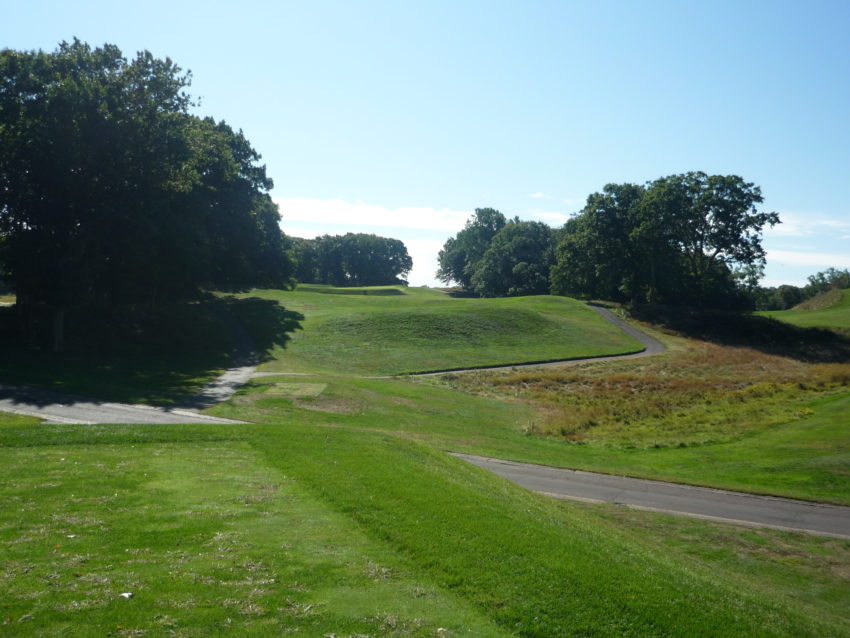
The Course at Yale – Played September 2022
- Rankings: Golf Magazine #70
- Location: 200 Conrad Drive, New Haven, Connecticut
- Year: 1926
- Original Architect: Seth Raynor
- Additional Work By: C.B. MacDonald, Charles Banks & Roger Rulewich
- Course Access: Private
- Walking Rules: Carts Available
Score Card Information:
- Long: 6,409 yards, Par 71, 74.1 Rating/136 Slope
- Regular: 5,984 yards, Par 71, 72.6 Rating/131 Slope
- Short: 5,144 yards, Par 71, 70.7 Rating/124 Slope
The final leg of my New England trip was taking place at The Course at Yale. As you likely surmised, this is the course associated with Yale University. Much like the school, the golf course has a deep, respected history.
Designed by Seth Raynor, the Course at Yale has been considered his masterstroke. It sits on a vast plot of 700 acres and is massive in scale. Many greens are over 10,000 square feet and some bunkers have steps to get in and out of them. At the time of its opening, it was the most expensive course built in America.
Despite all this pedigree, the course has seen some hard times. Conditioning issues have plagued the land over the years. Due to this, much conjecture has been made about Yale’s management of the property. In the following photos, you will see some of these issues.
Like many other Raynor courses, a restoration is in the works. Gil Hanse is said to be doing the work that is expected to last into 2025. It will be fascinating to see how that goes and what Hanse is able to accomplish. If the turf management can improve to match the architecture, the course will be back in its rightful state. With that bit out of the way, let’s get to the tour.
Your journey to the course takes you through a typical New England neighborhood. My GPS was giving me many turns to take. I’m always interested to see where golf courses exist, so I was beginning to wonder about this one. Eventually, however, you get to this leafy entrance to one of the best university golf courses in the world.
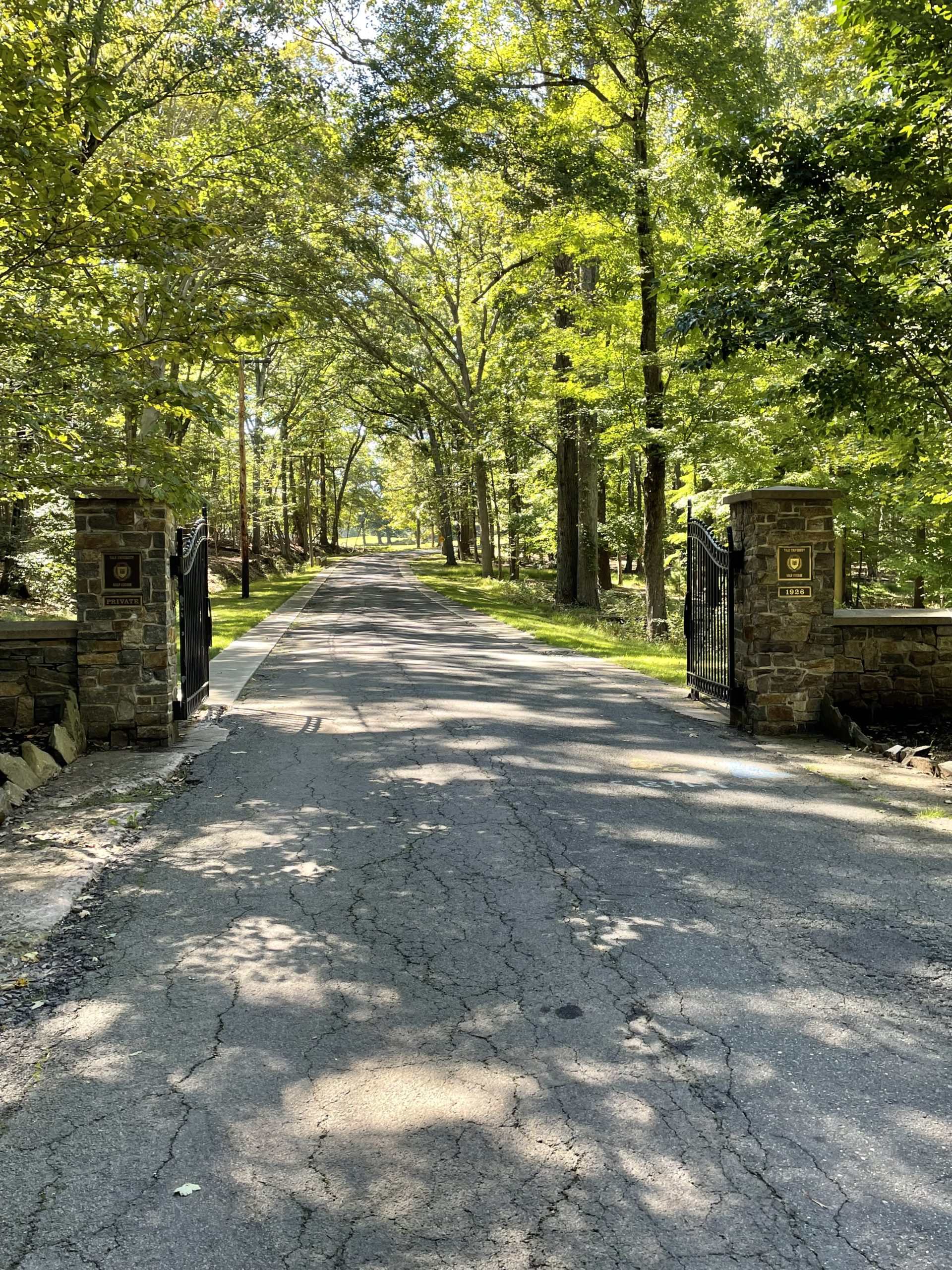
Hole 1 – 340 yards – Par 4
The opening tee shot plays to a generous fairway. Playing the up tees with our host makes this a less intimidating shot than having to carry the entire pond.

The green is a massive one, which will be the theme of the day. It is divided into two distinct tiers, so being on the flag side is crucial.
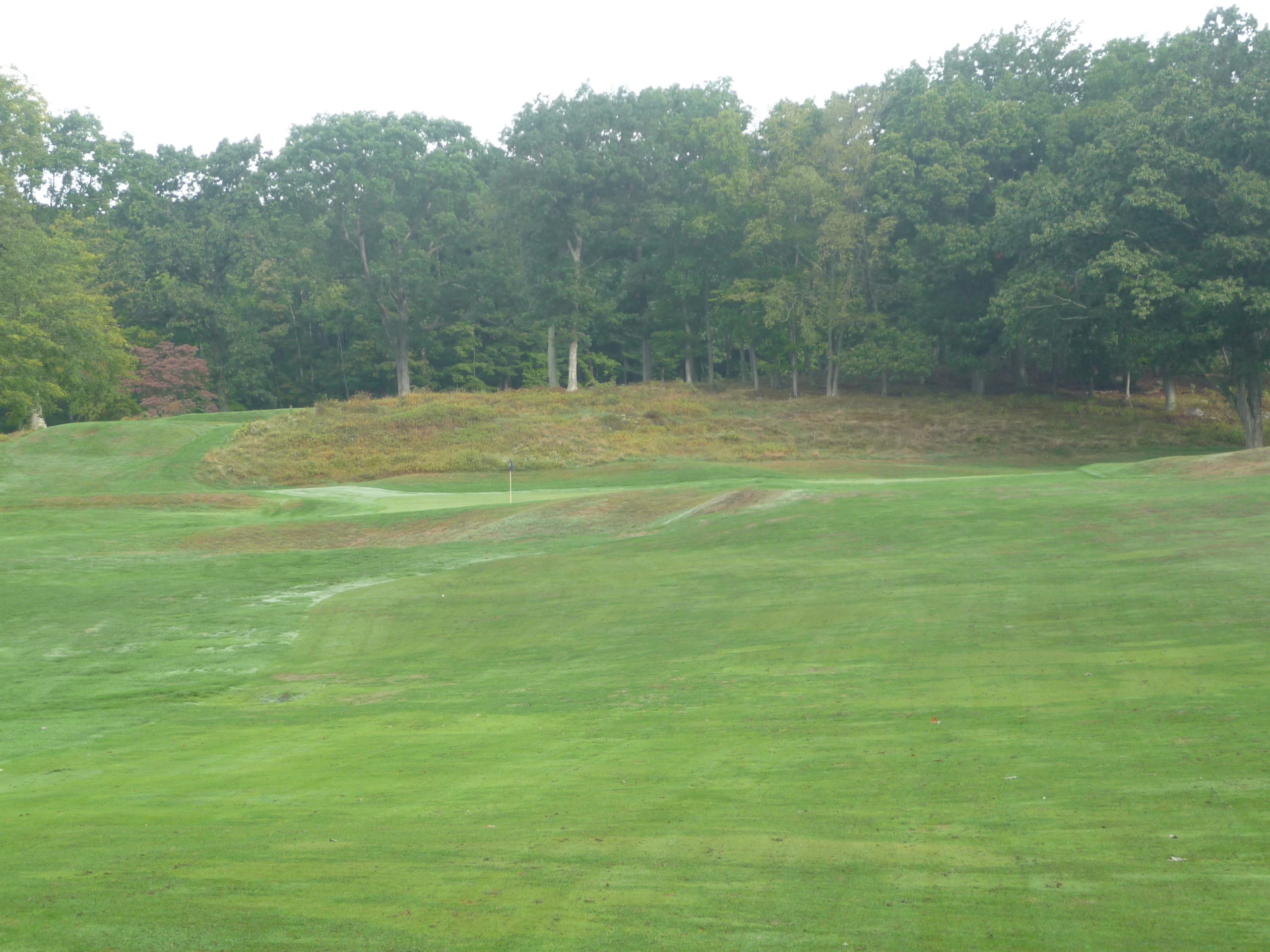
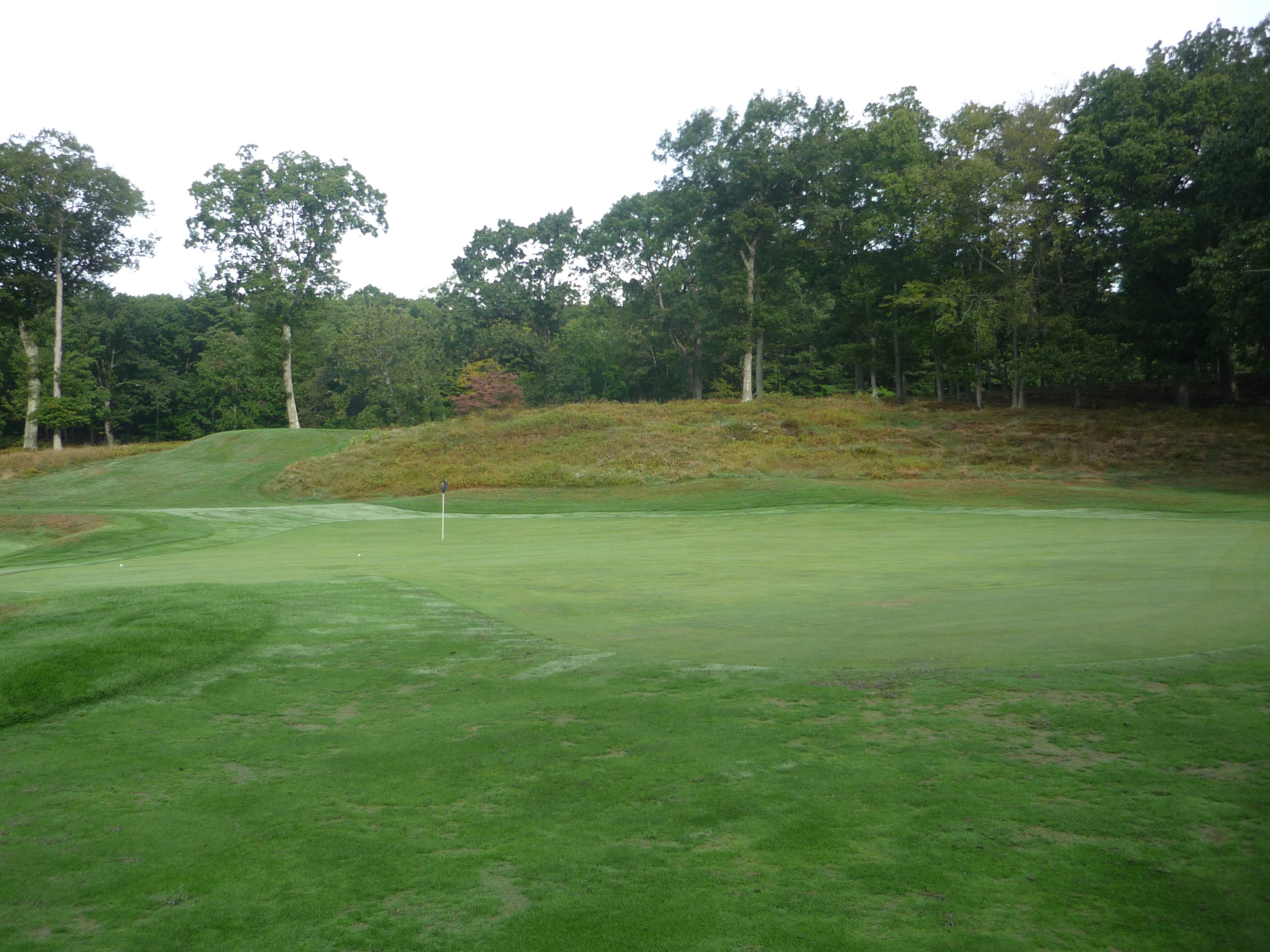
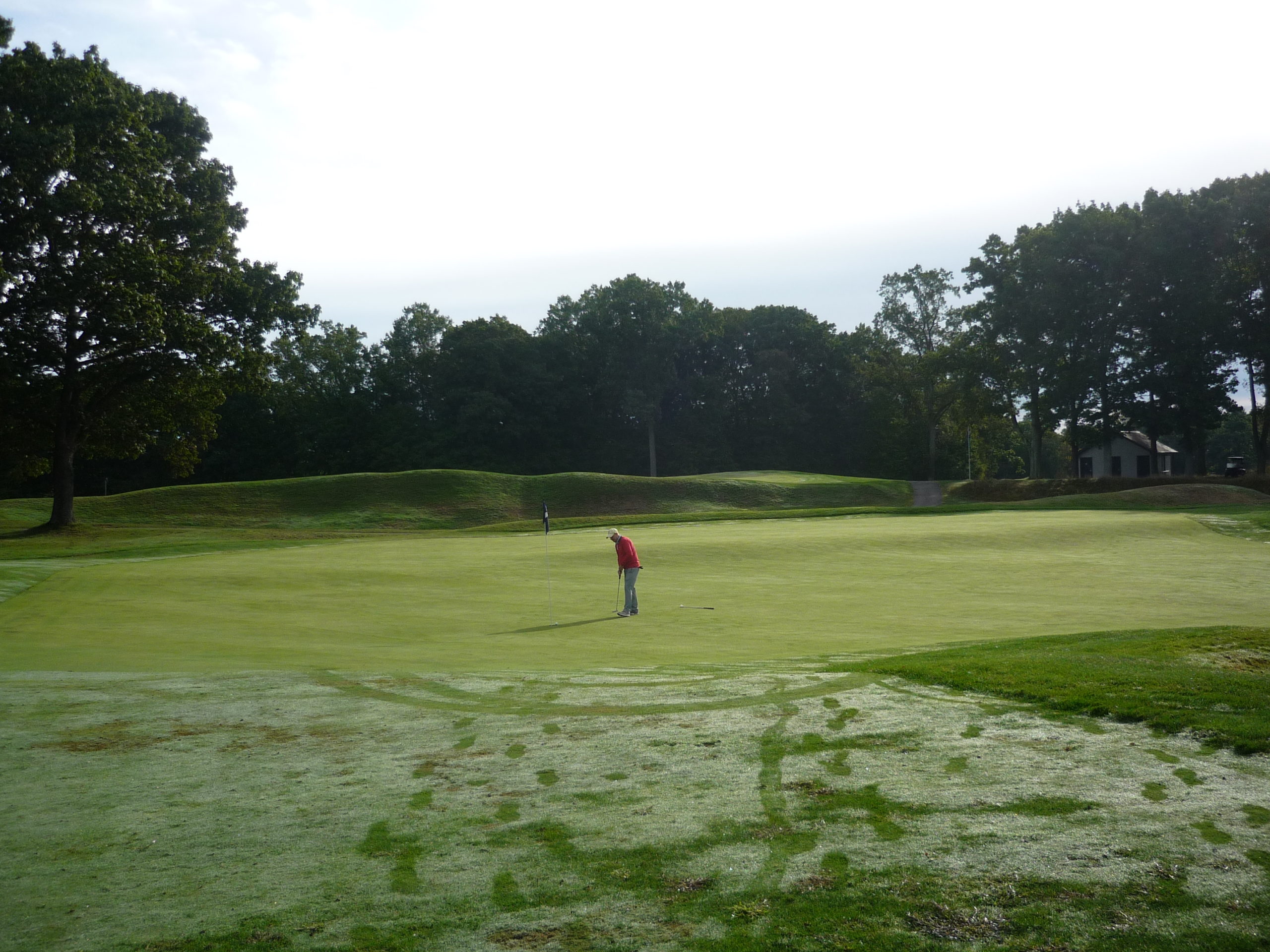
Hole 2 – 344 yards – Par 4
Take note of the fairway land movement. A good tee shot is imperative to have the best angle to this perched green.
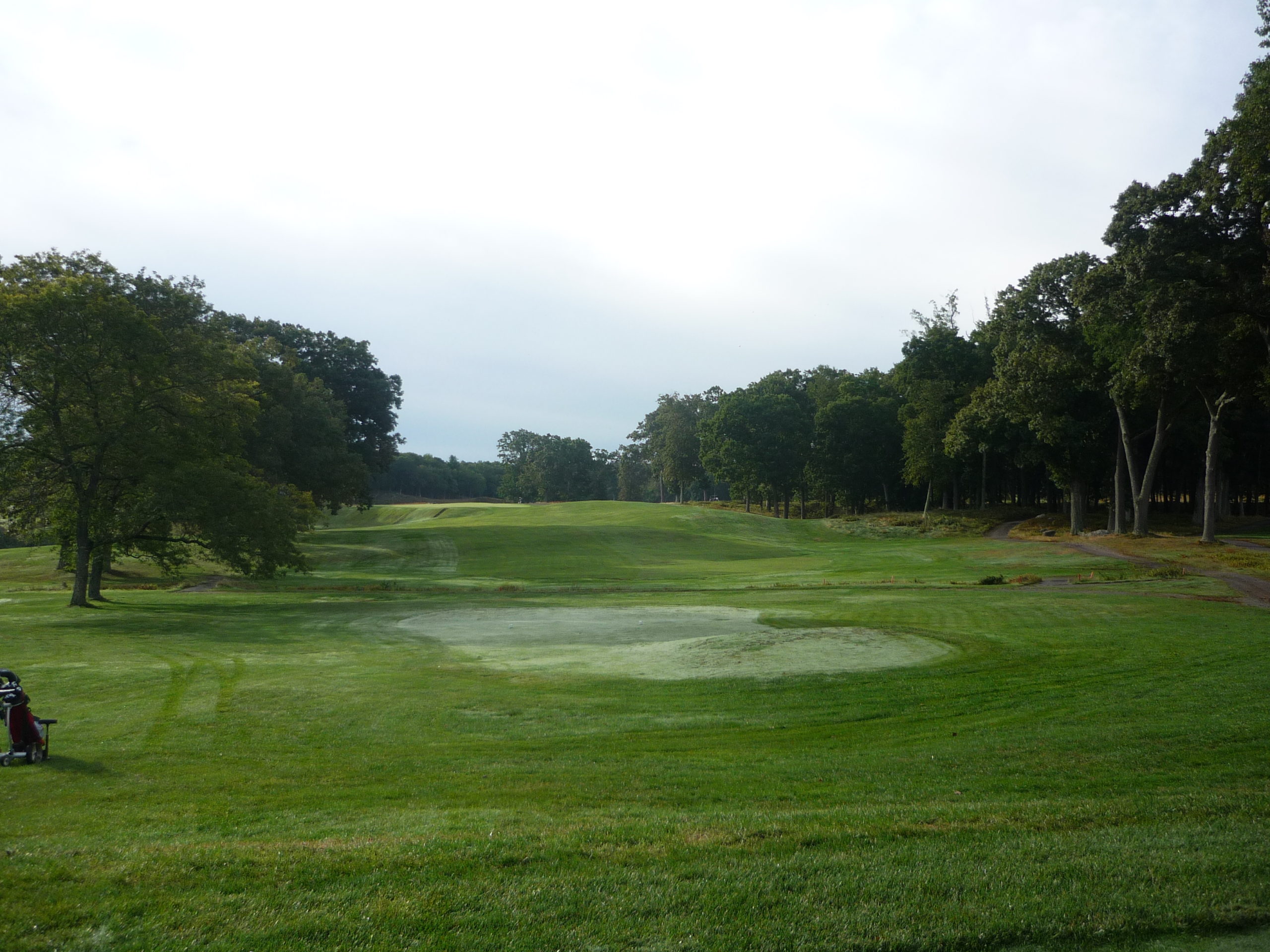
The scale of the golf course begins to come into focus here. The green itself is huge. Back pins are especially difficult. All of that doesn’t even mention the gargantuan bunker on the left that sits well below the green.
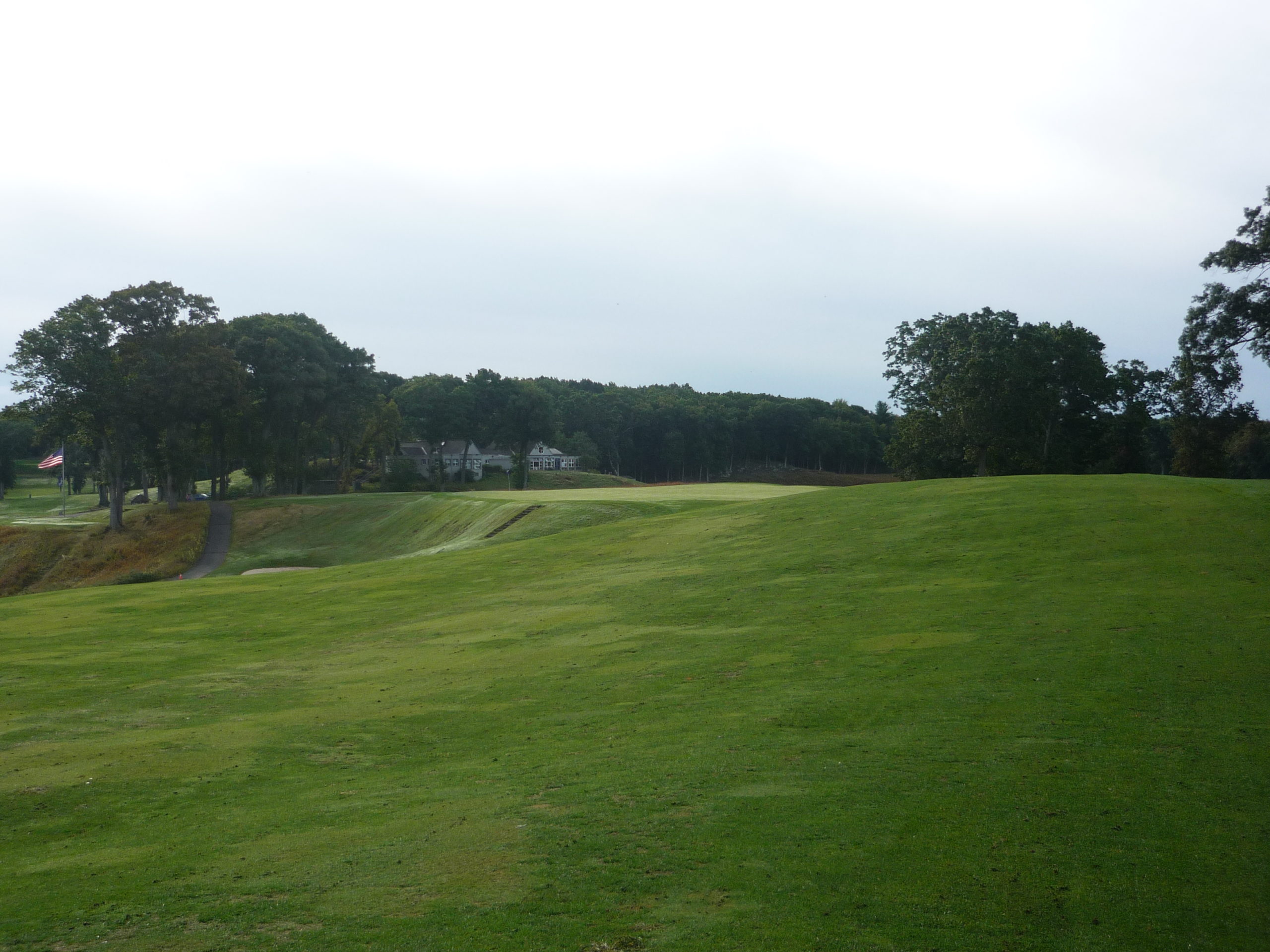
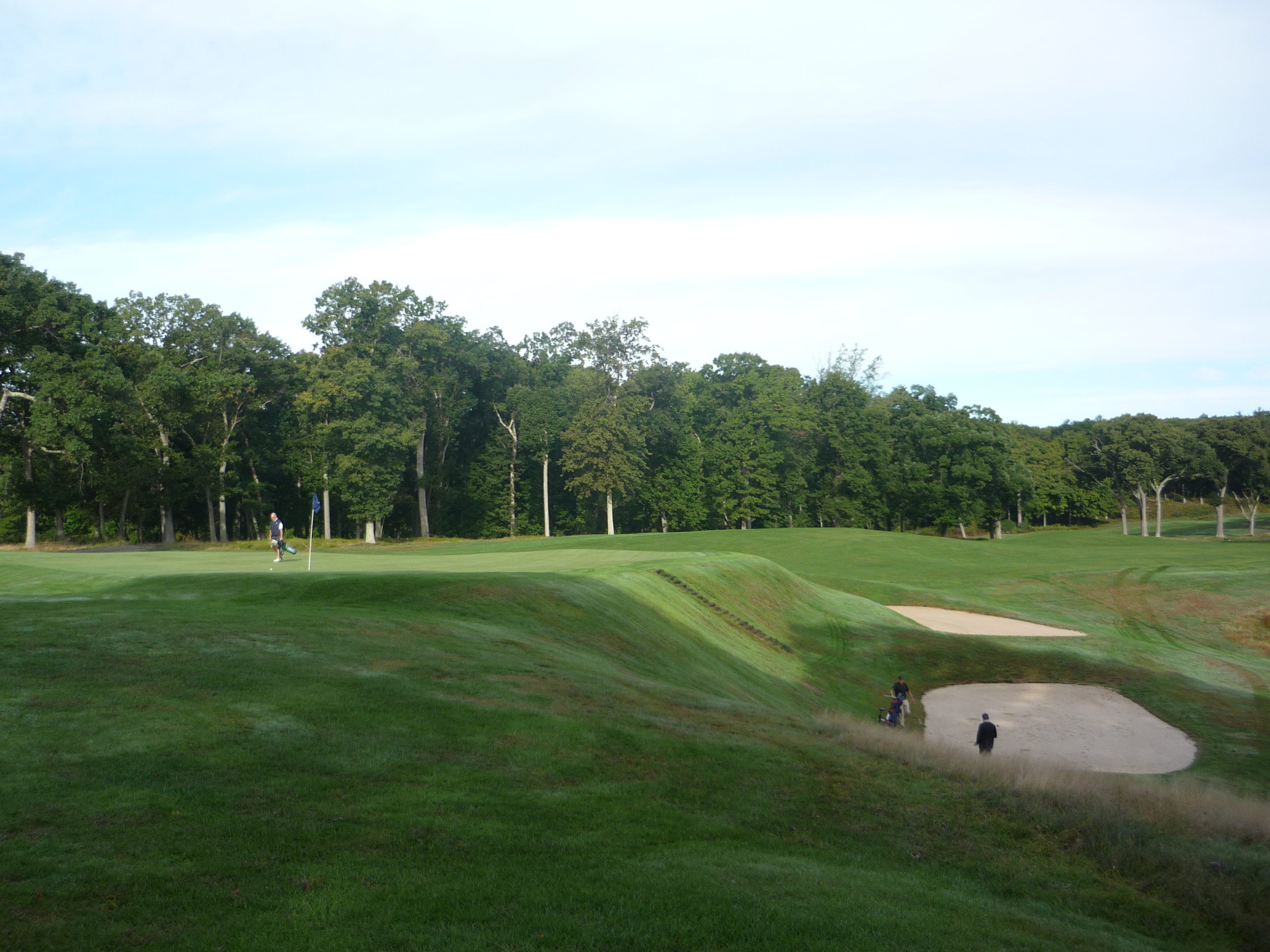
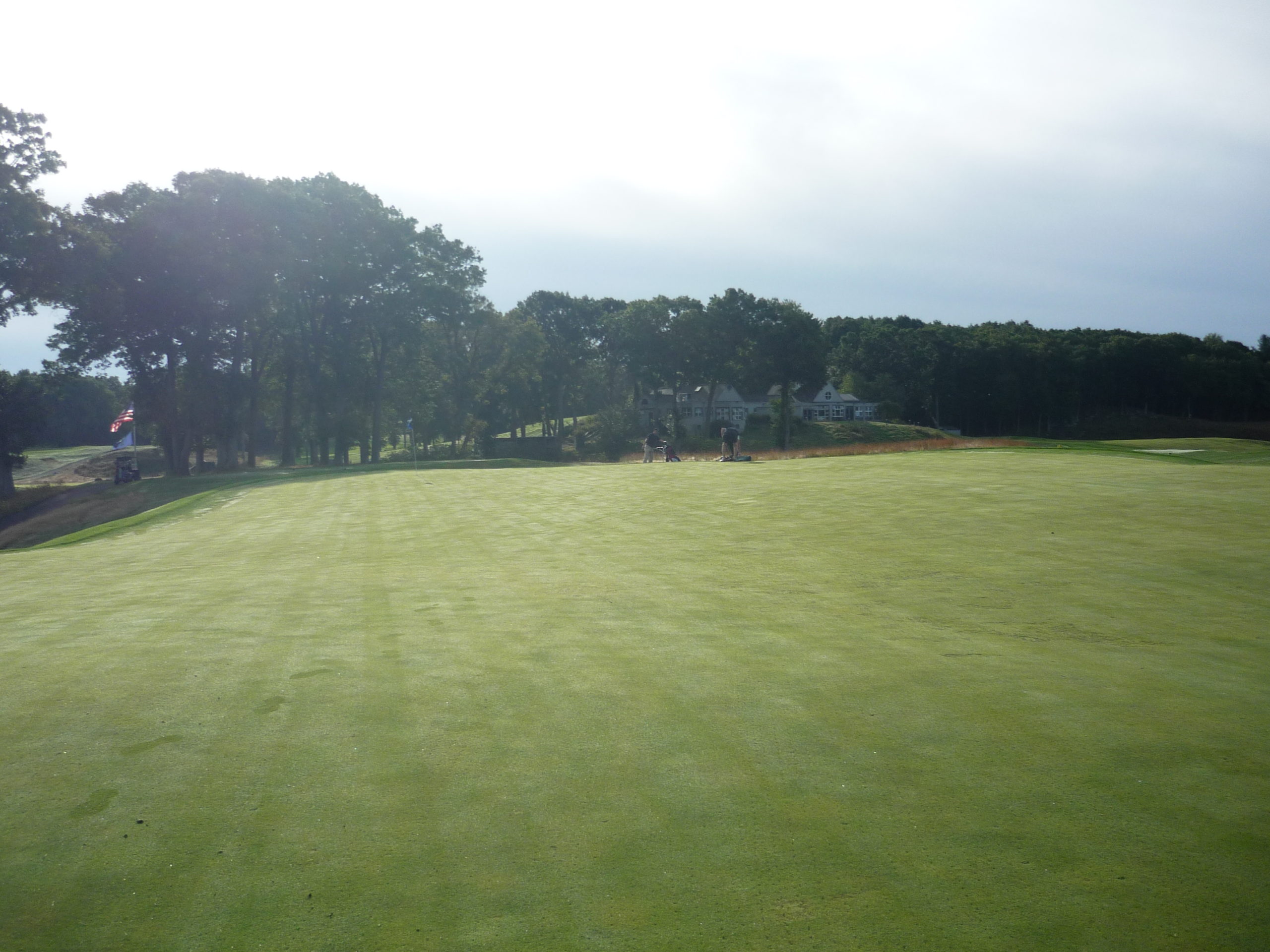
Hole 3 – 379 yards – Par 4
Hopefully, you get to play this hole with someone who has seen the course. The second shot is blind and the green might not be where you think it is. The farther right you go the less blocked out you will be for the approach shot.
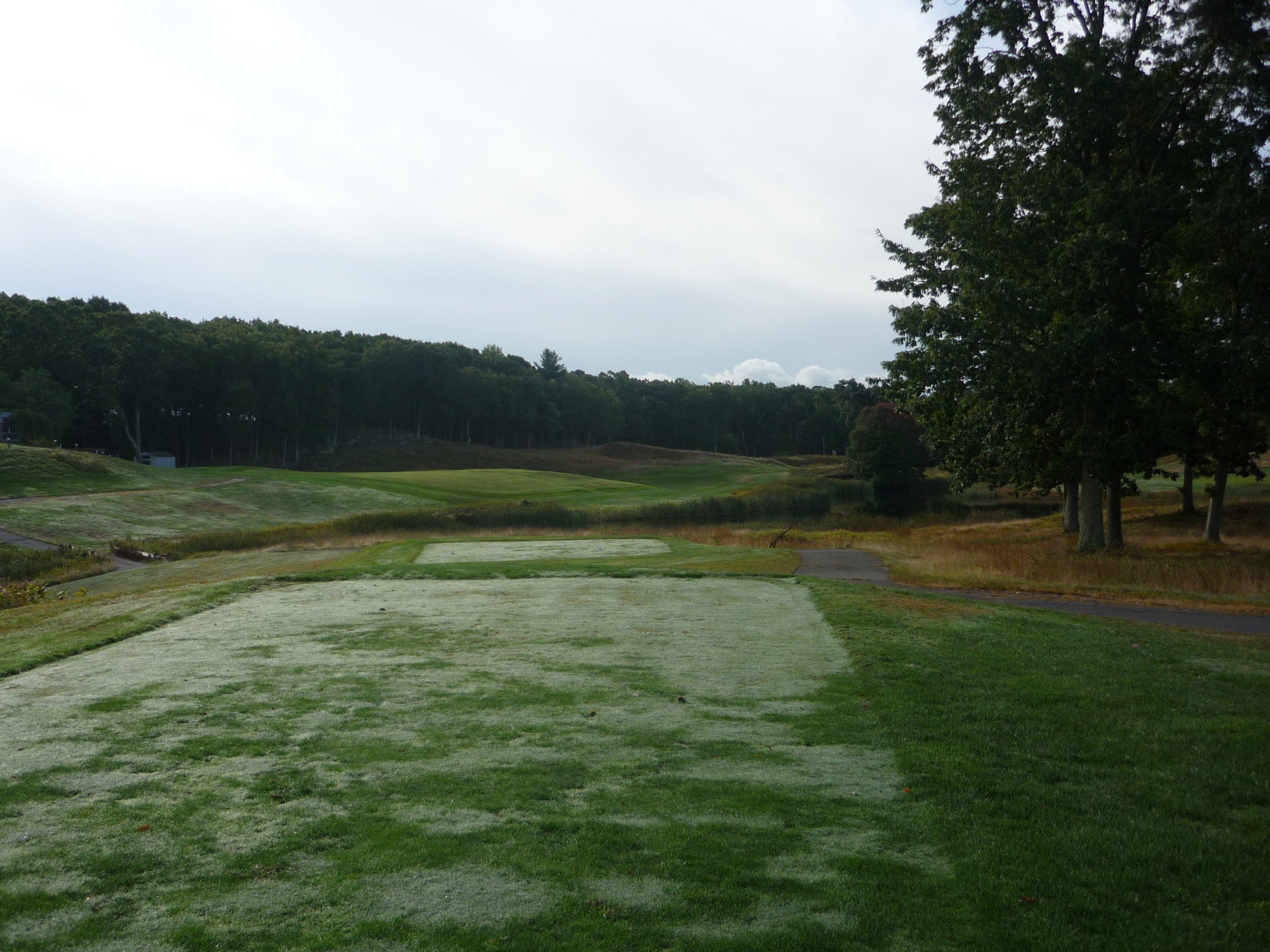
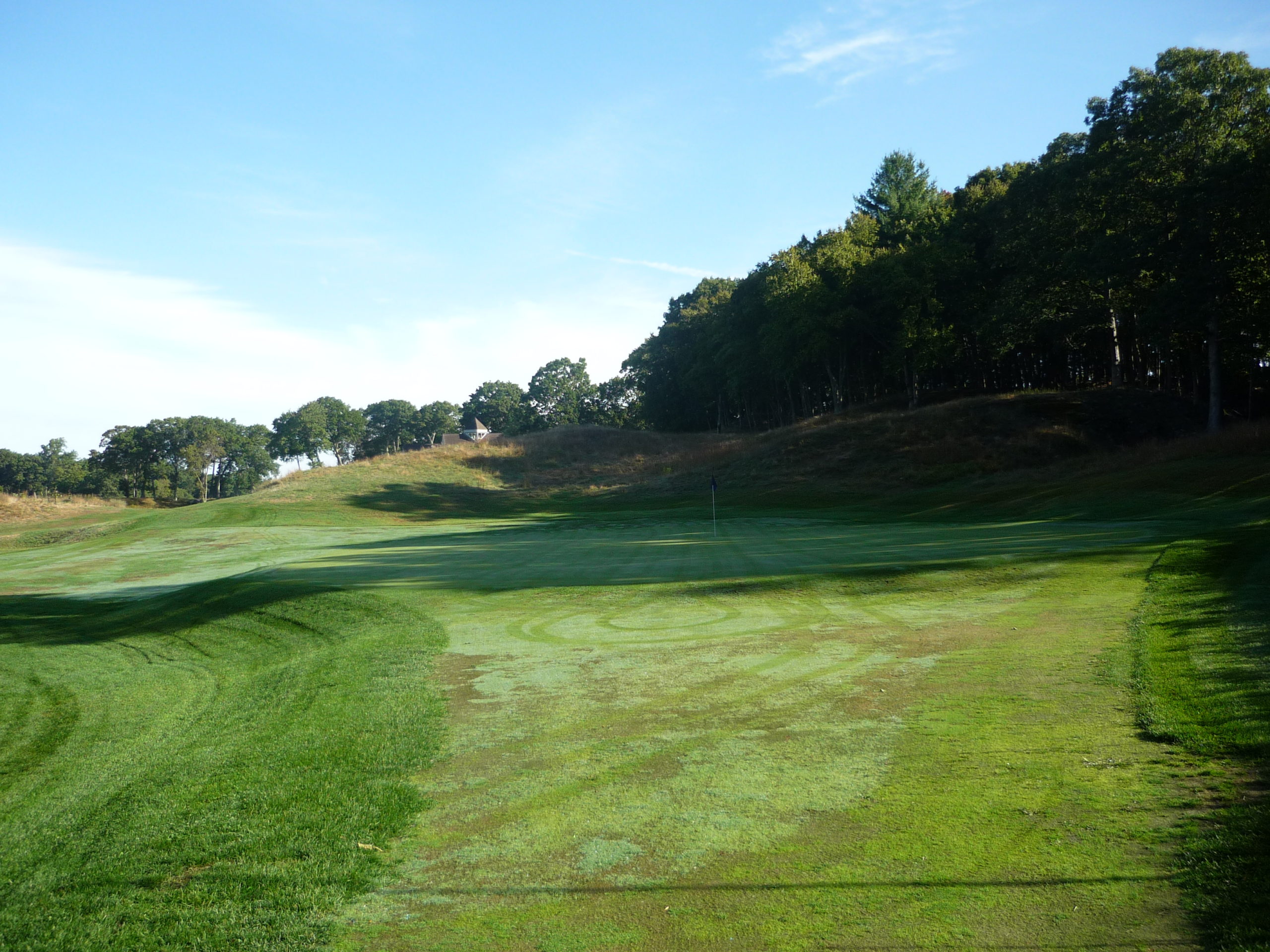
Hole 4 – 410 yards – Par 4
You’re faced with a difficult hole here from start to finish. The goal is to avoid the tall grass and the hazard with the tee shot. Approaches from the left side have a good angle to the green.
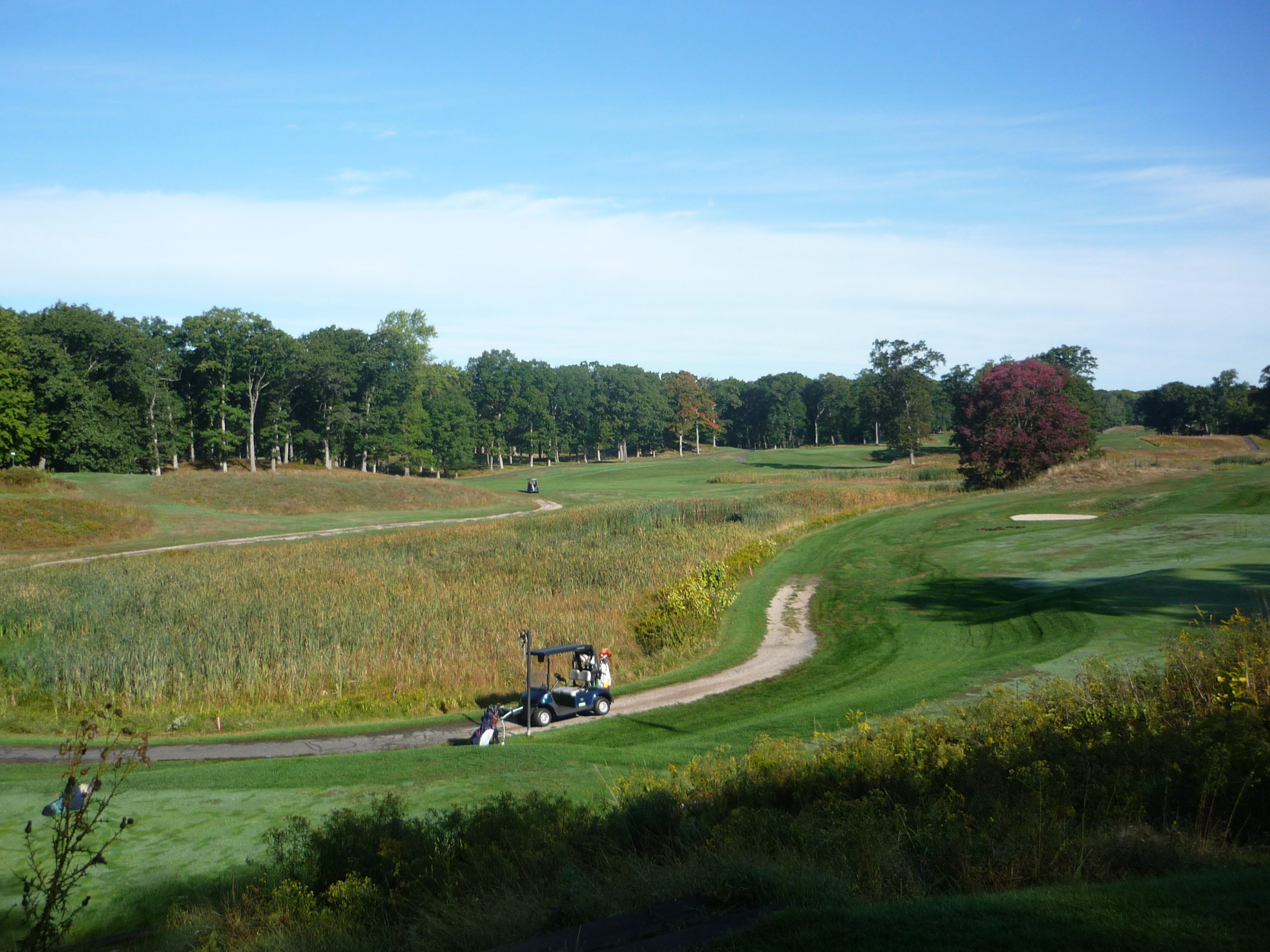
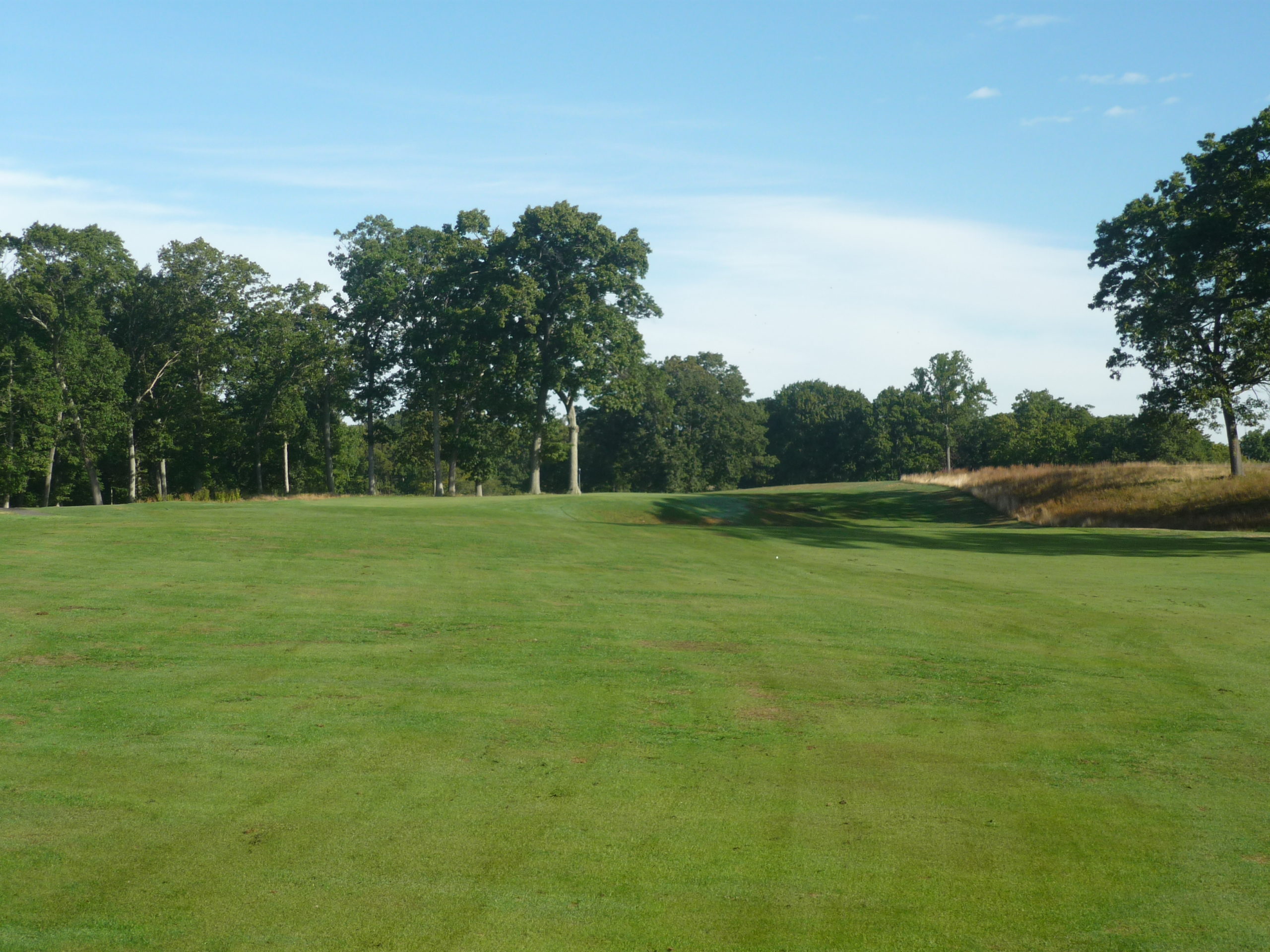
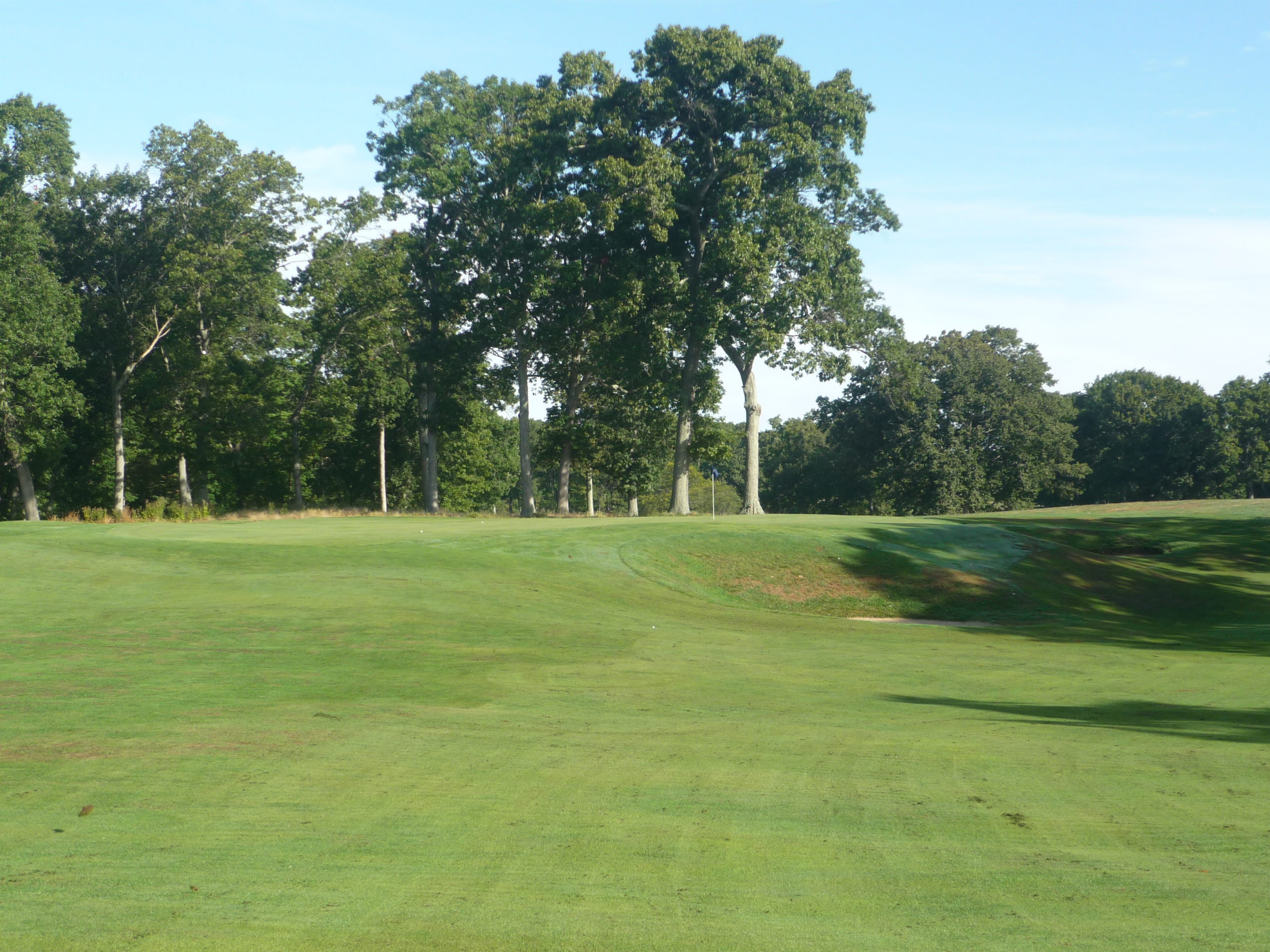
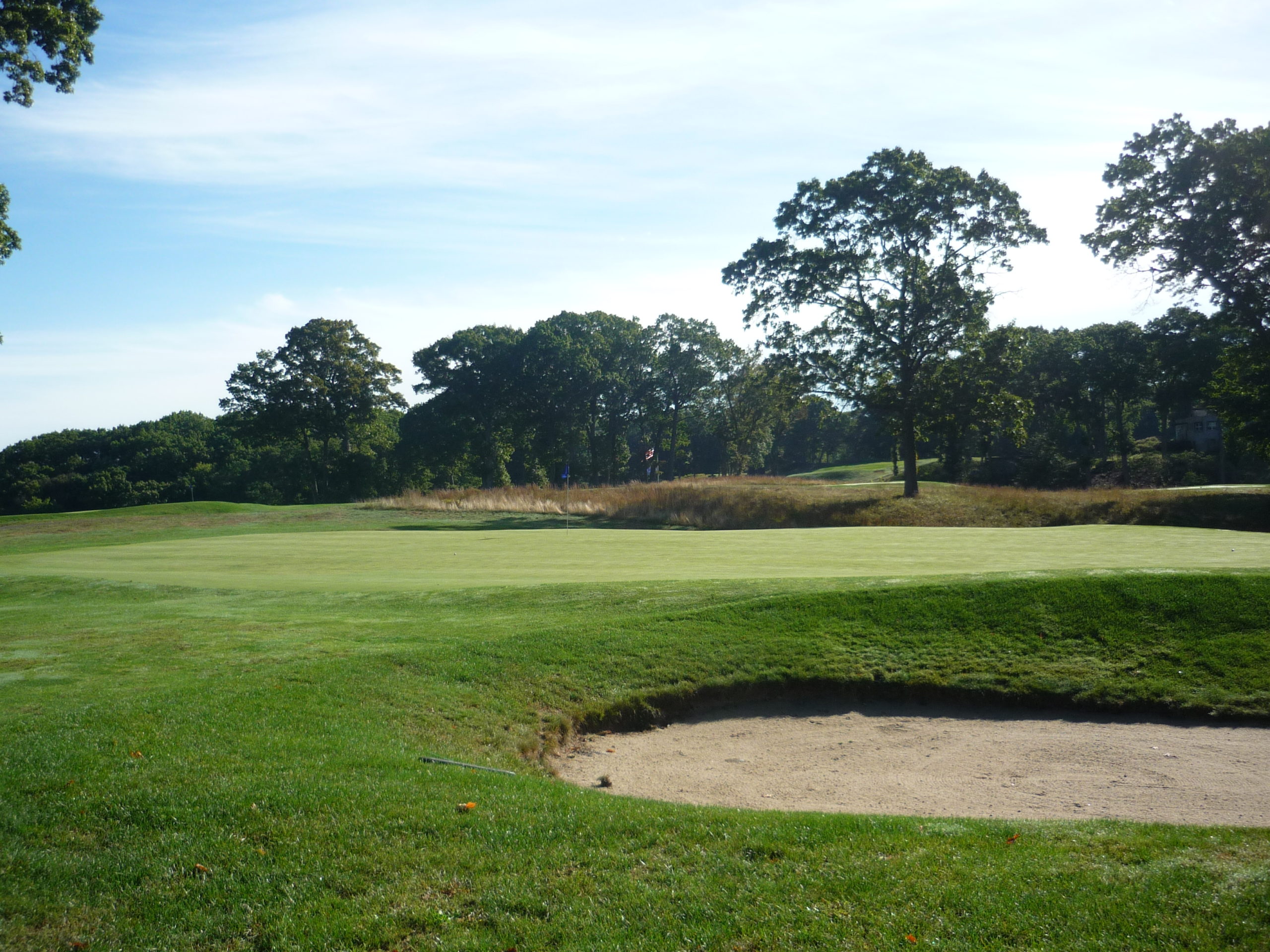
Hole 5 – 135 yards – Par 3
This green sits alone and was apparently helped by recent tree-clearing work. Like many holes, the scale used to be larger, with the bunkers requiring steps to navigate. I presume Hanse will restore some of that scale.
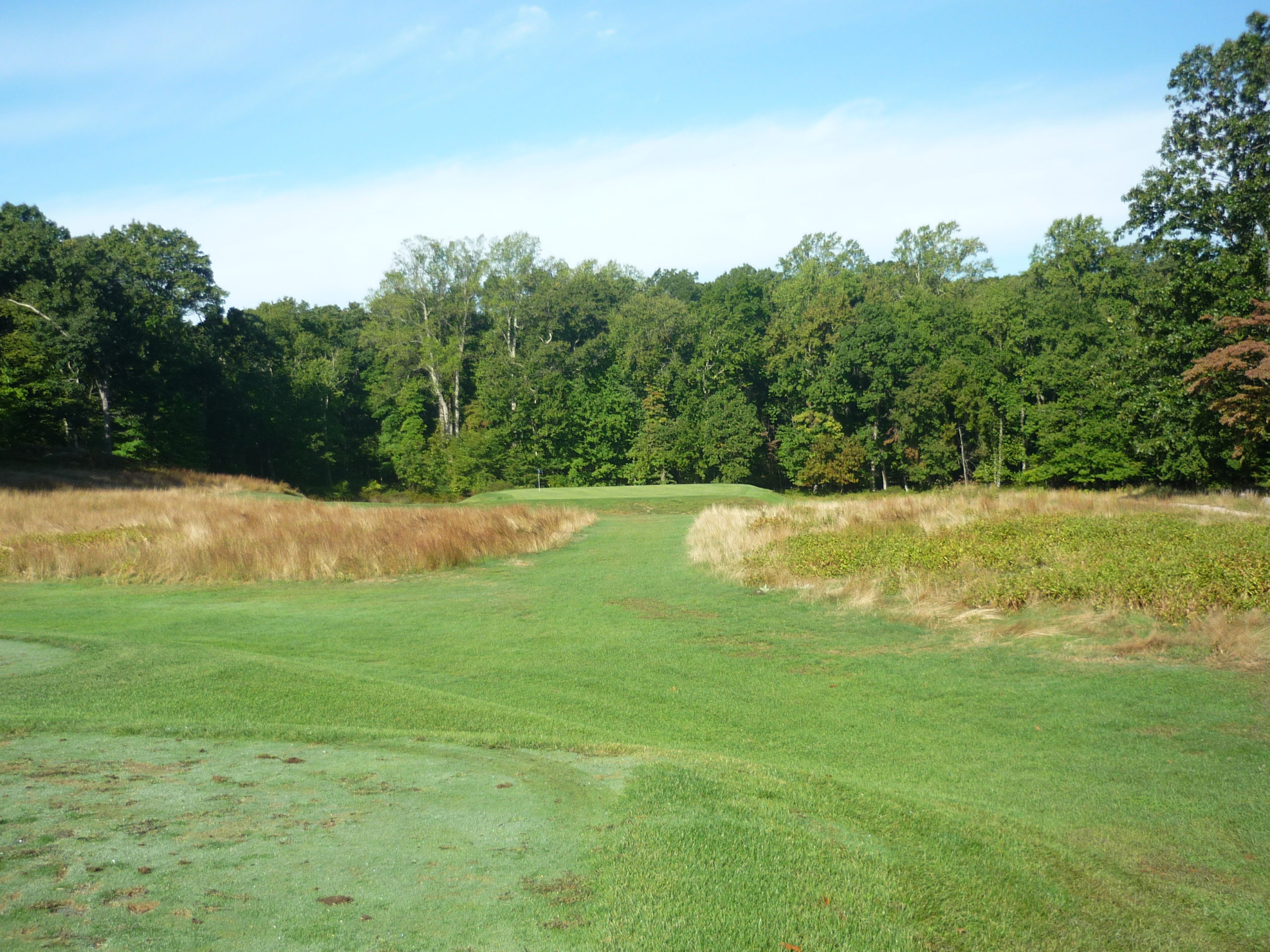
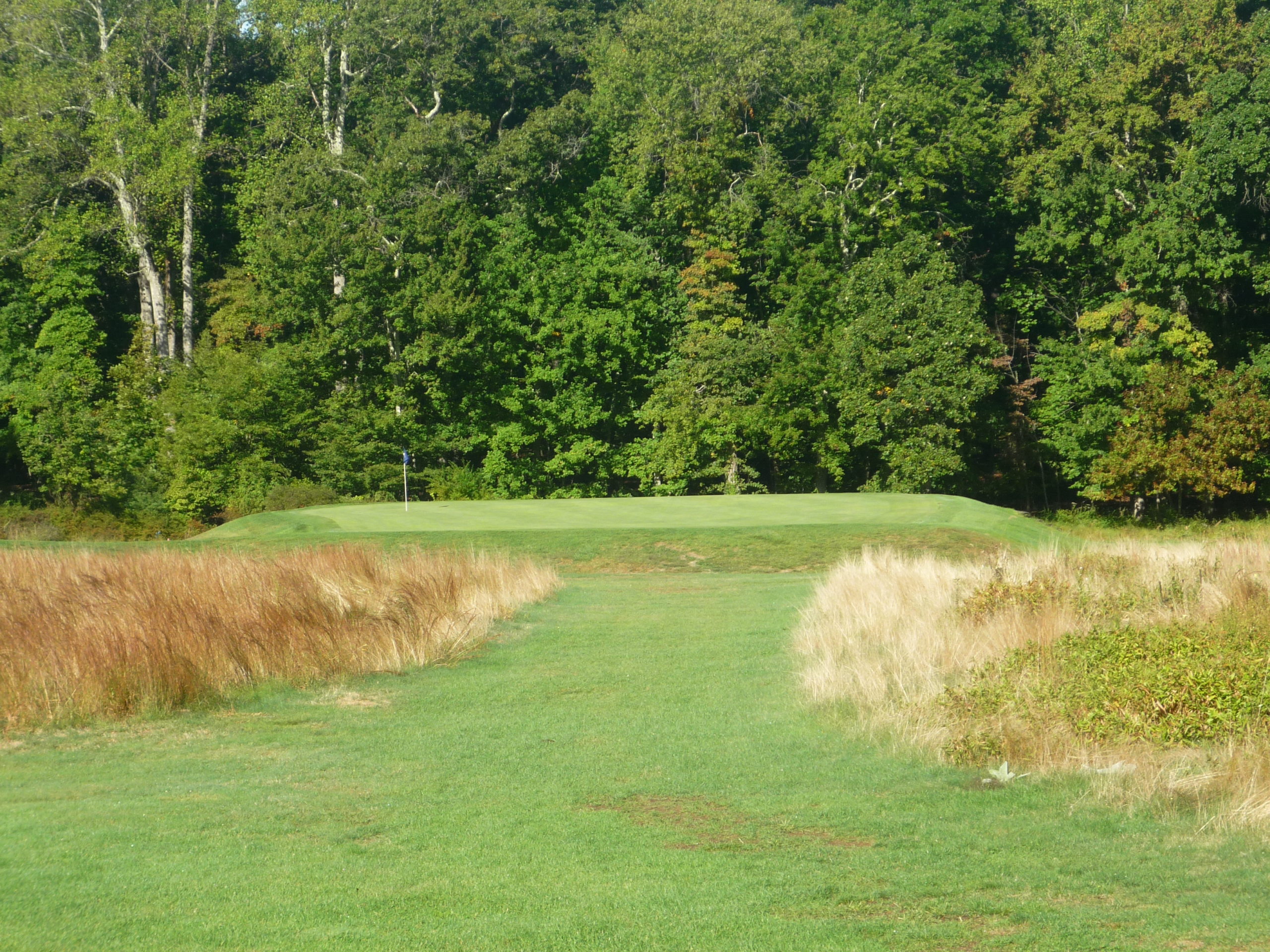
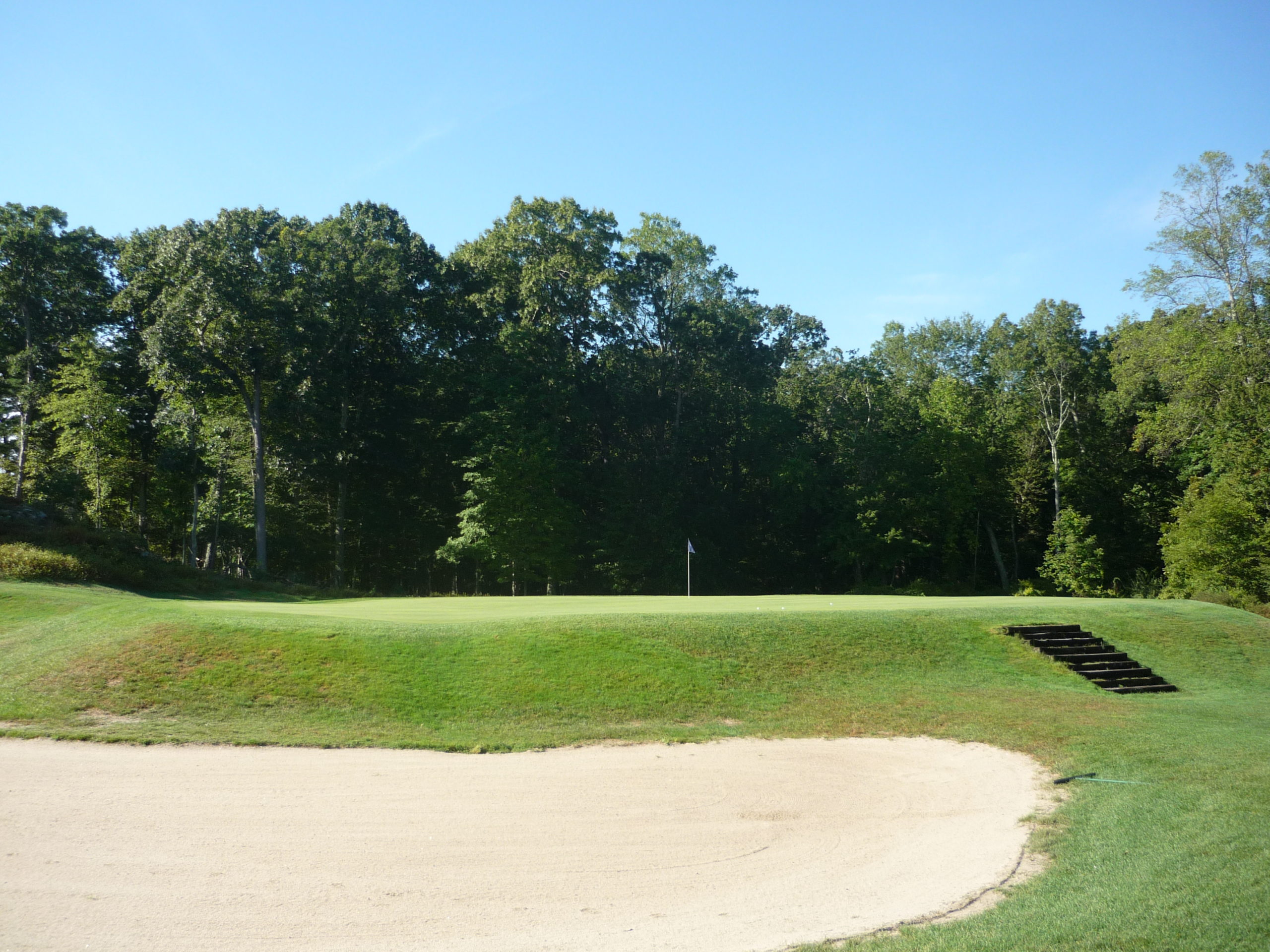
Hole 6 – 349 yards – Par 4
The creek running up the left and cutting into the fairway is the focal point of this left bender. Clubbing down off the tee to find the short grass isn’t a bad idea.
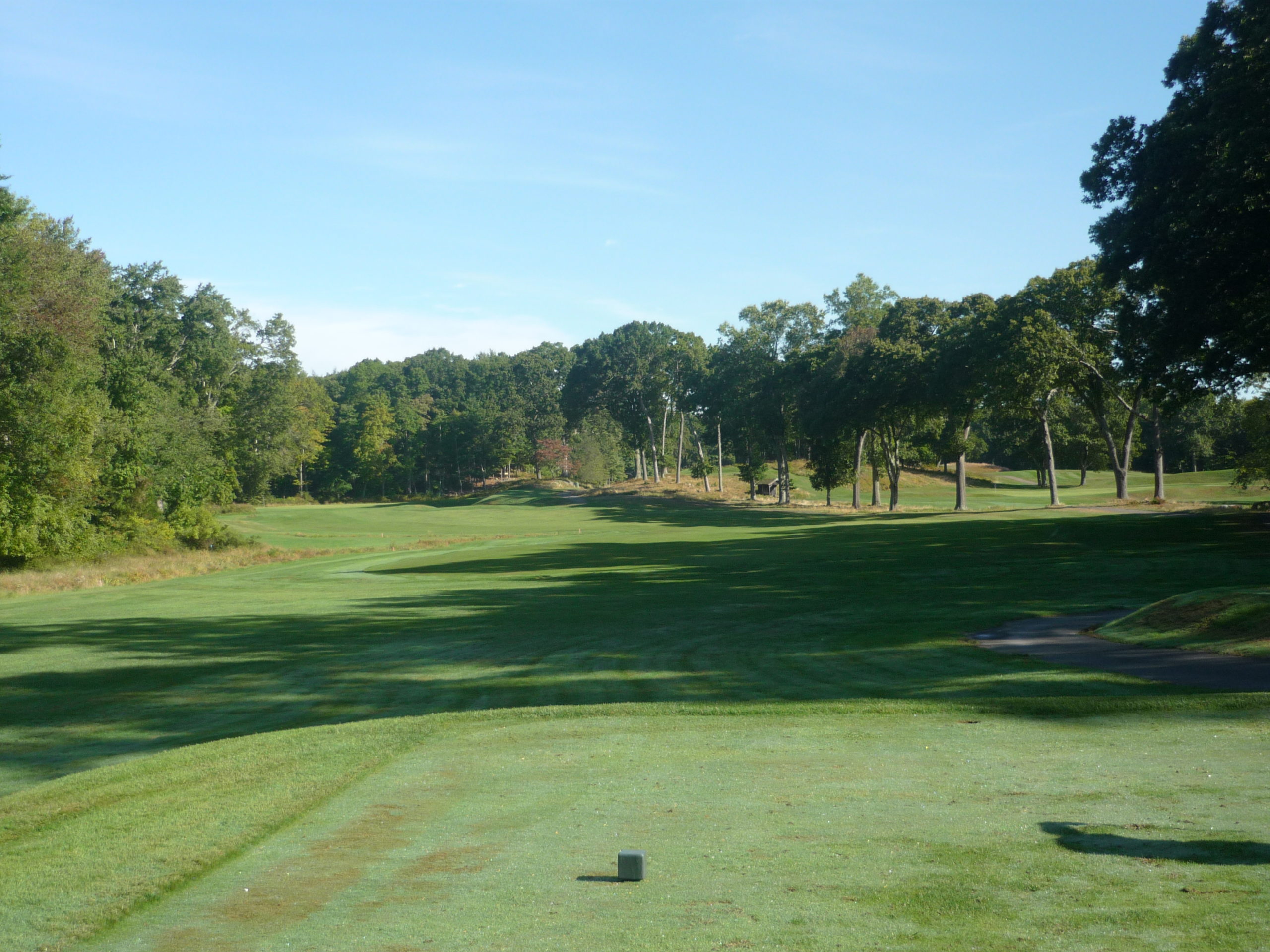
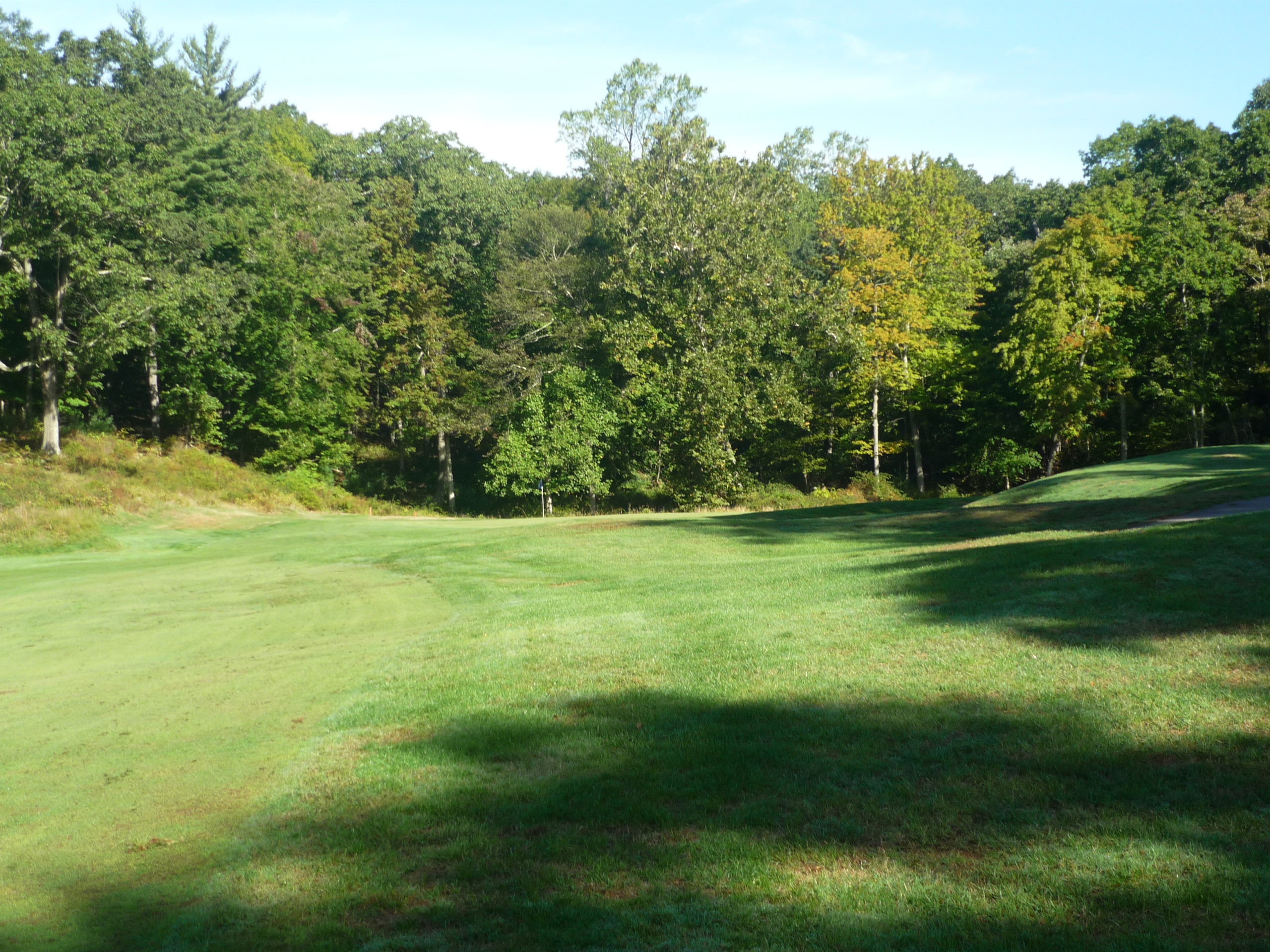
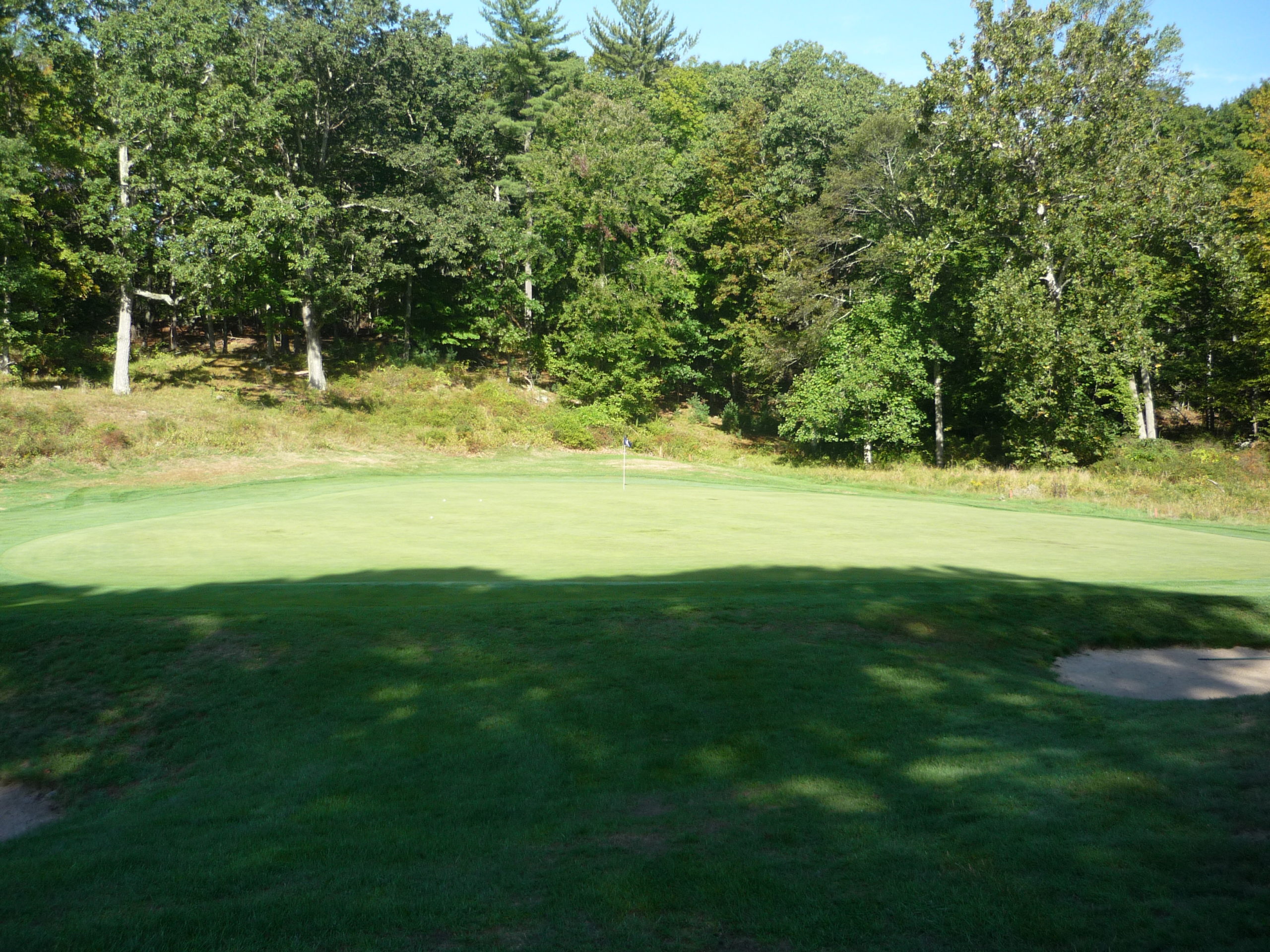
Hole 7 – 350 yards – Par 4
Dynamite was used extensively to build this course and this portion of the land is a prime example. The hole is mostly flat before rising to a severe green with multiple feet of drop from back to front. The mounding on the right is certainly in play.
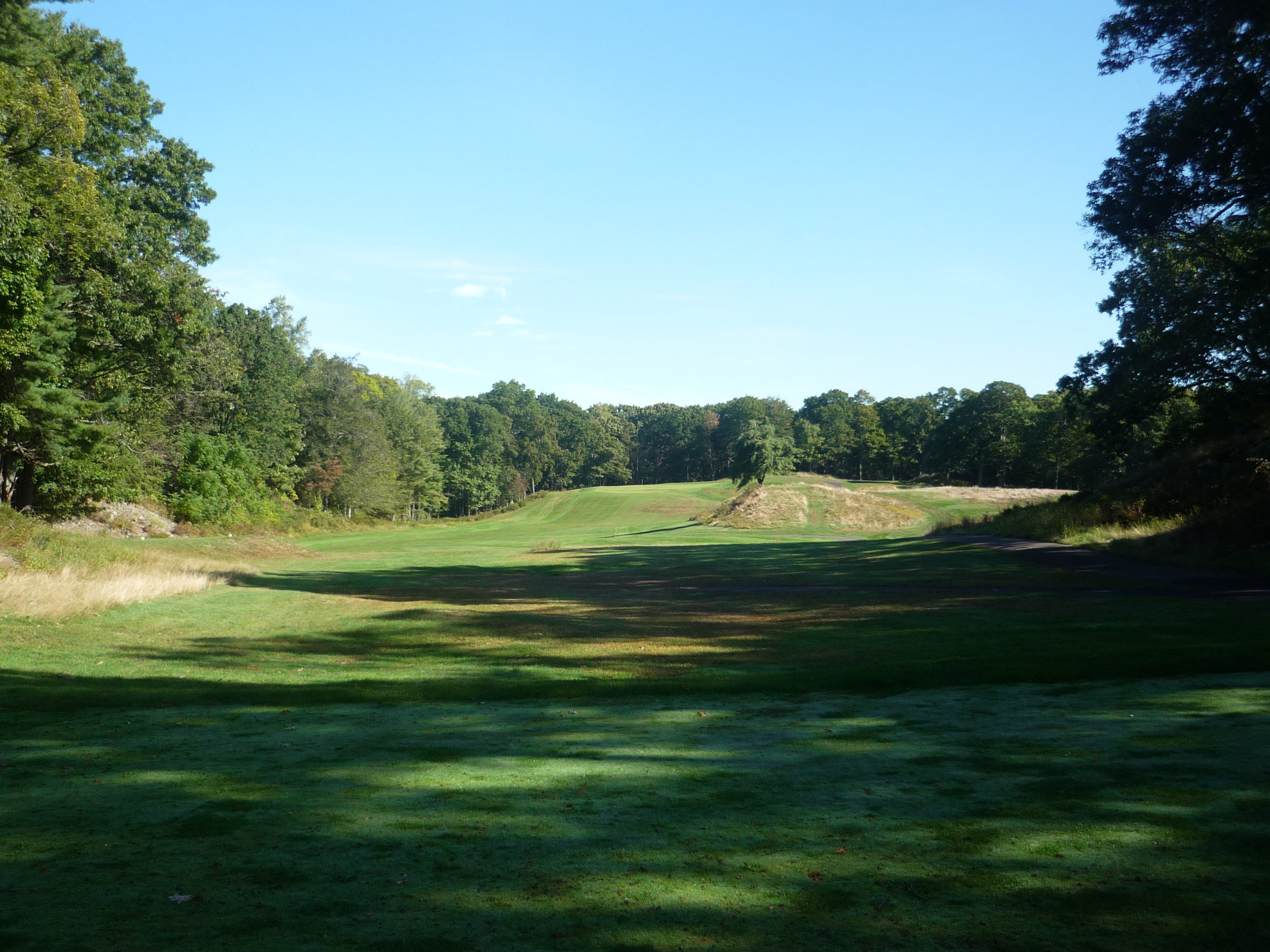
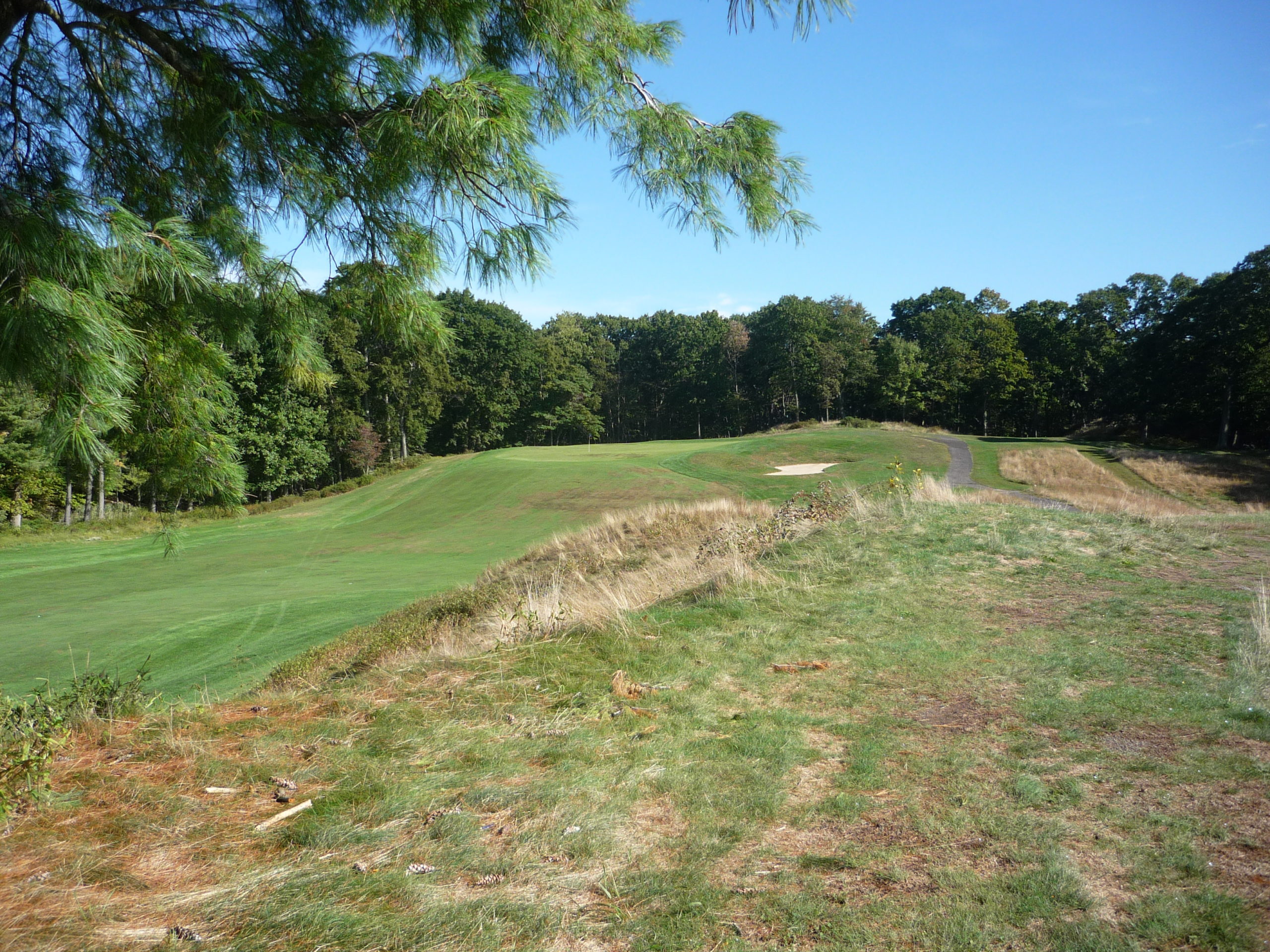
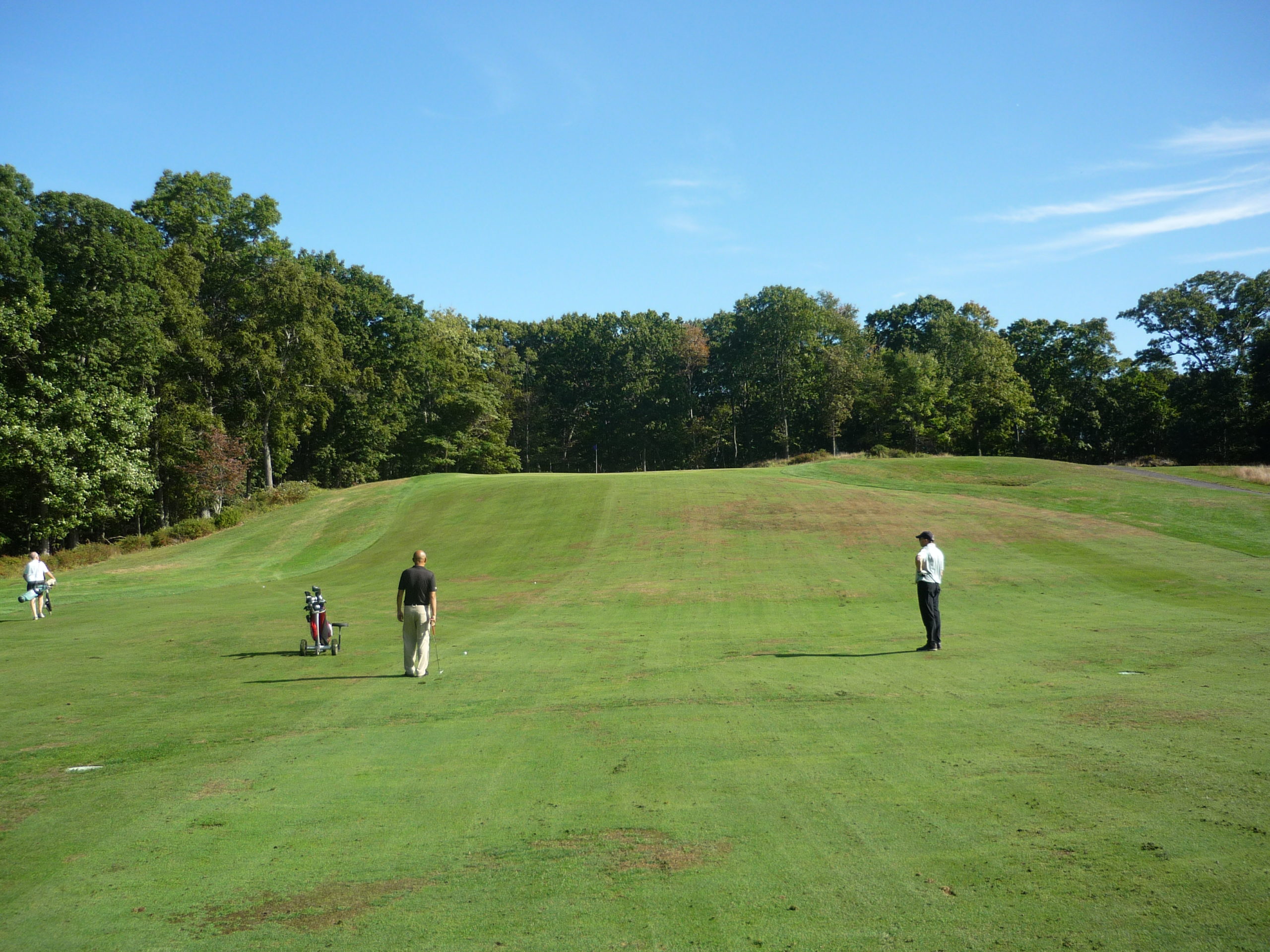
Putting from the back to the front of this green is treacherous if the greens are rolling.
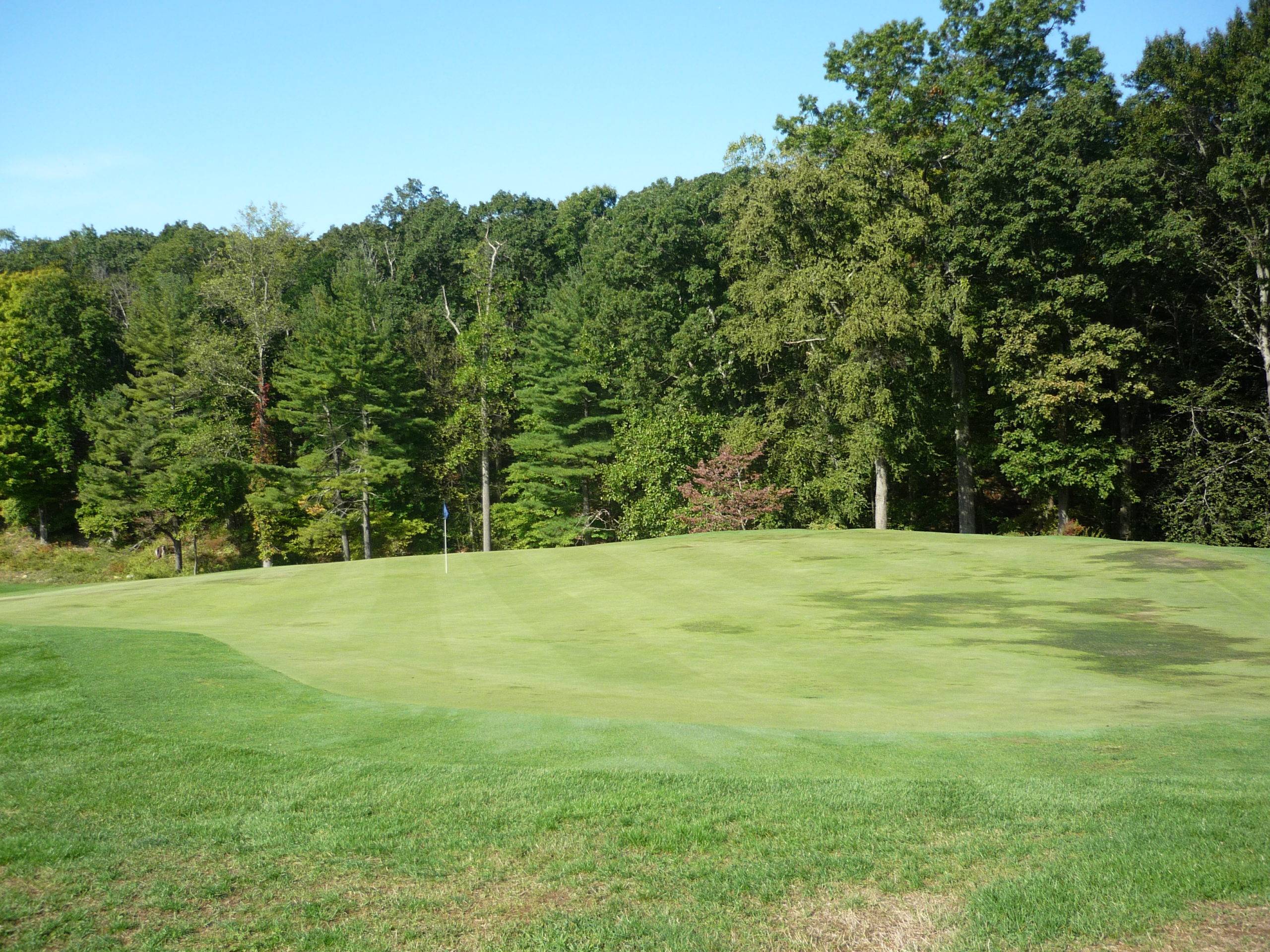
Hole 8 – 382 yards – Par 4
This is a version of the Cape template and it plays around a depression on the left. The fairway is quite wide but most approach shots will be partially or completely blind. Depending on the wind, the approach distance can vary wildly here.
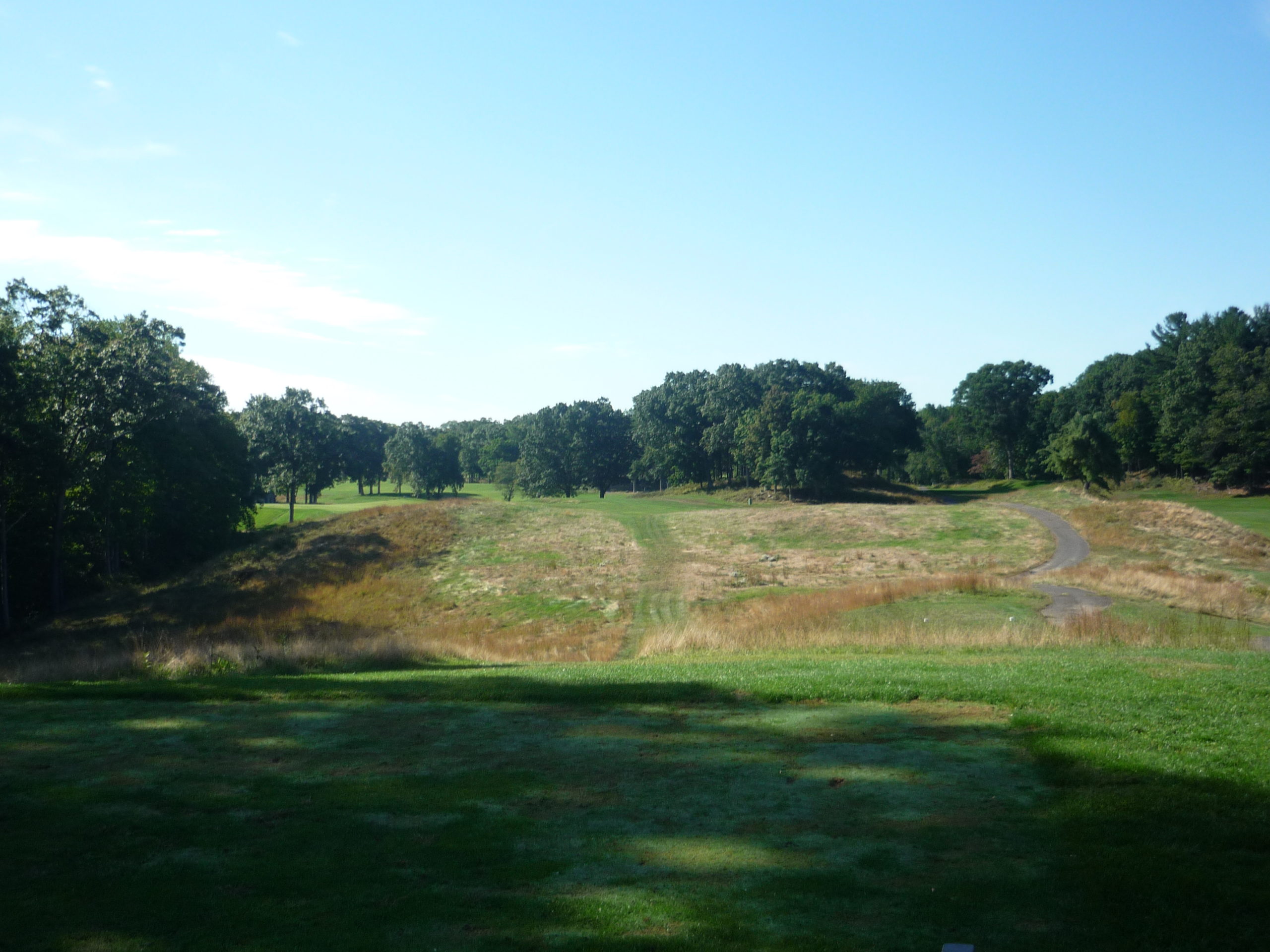
Here’s the blind approach.
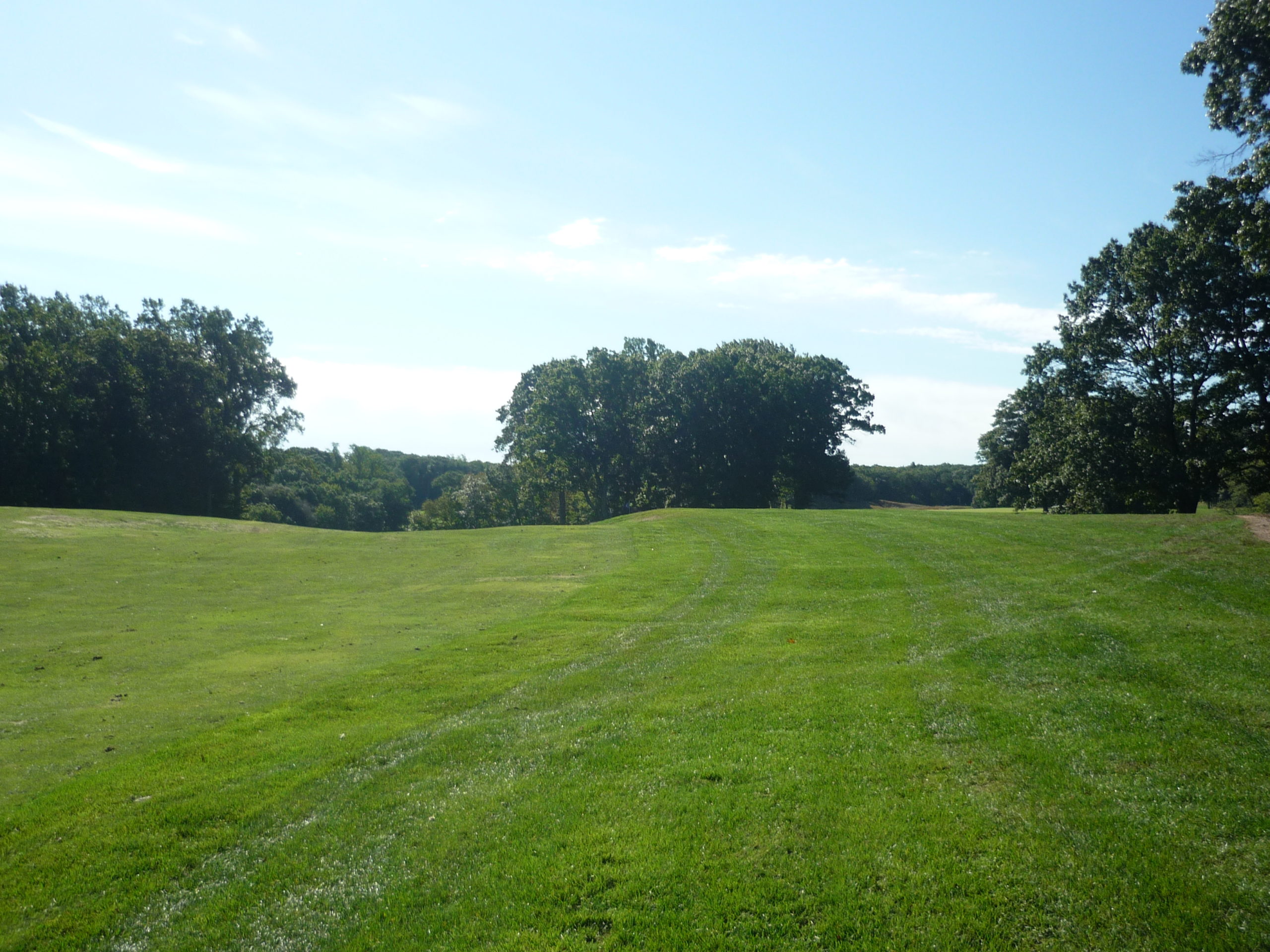
Hit the green or else. The bunker on the right sits well below the surface and is the tamer one.
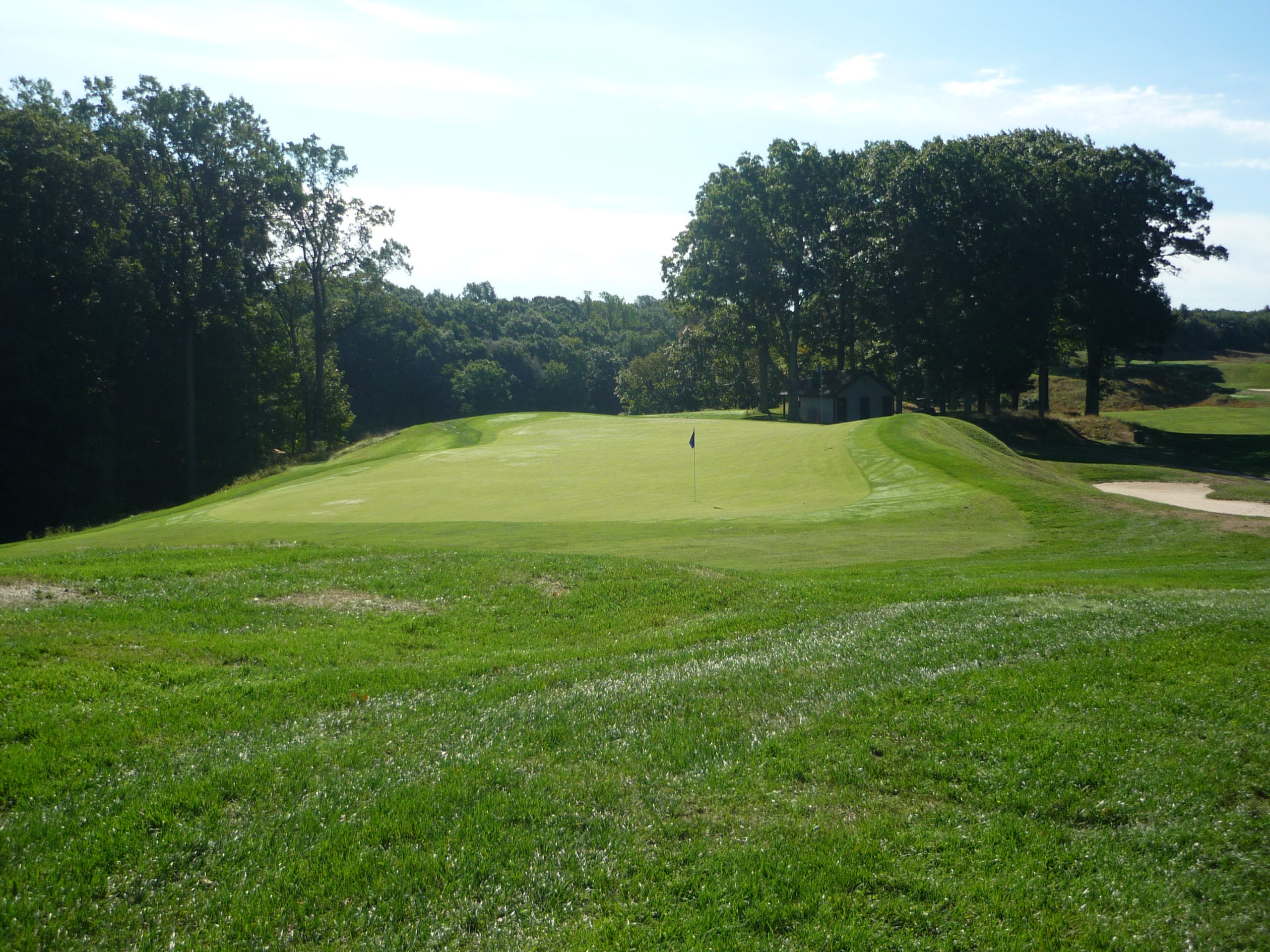
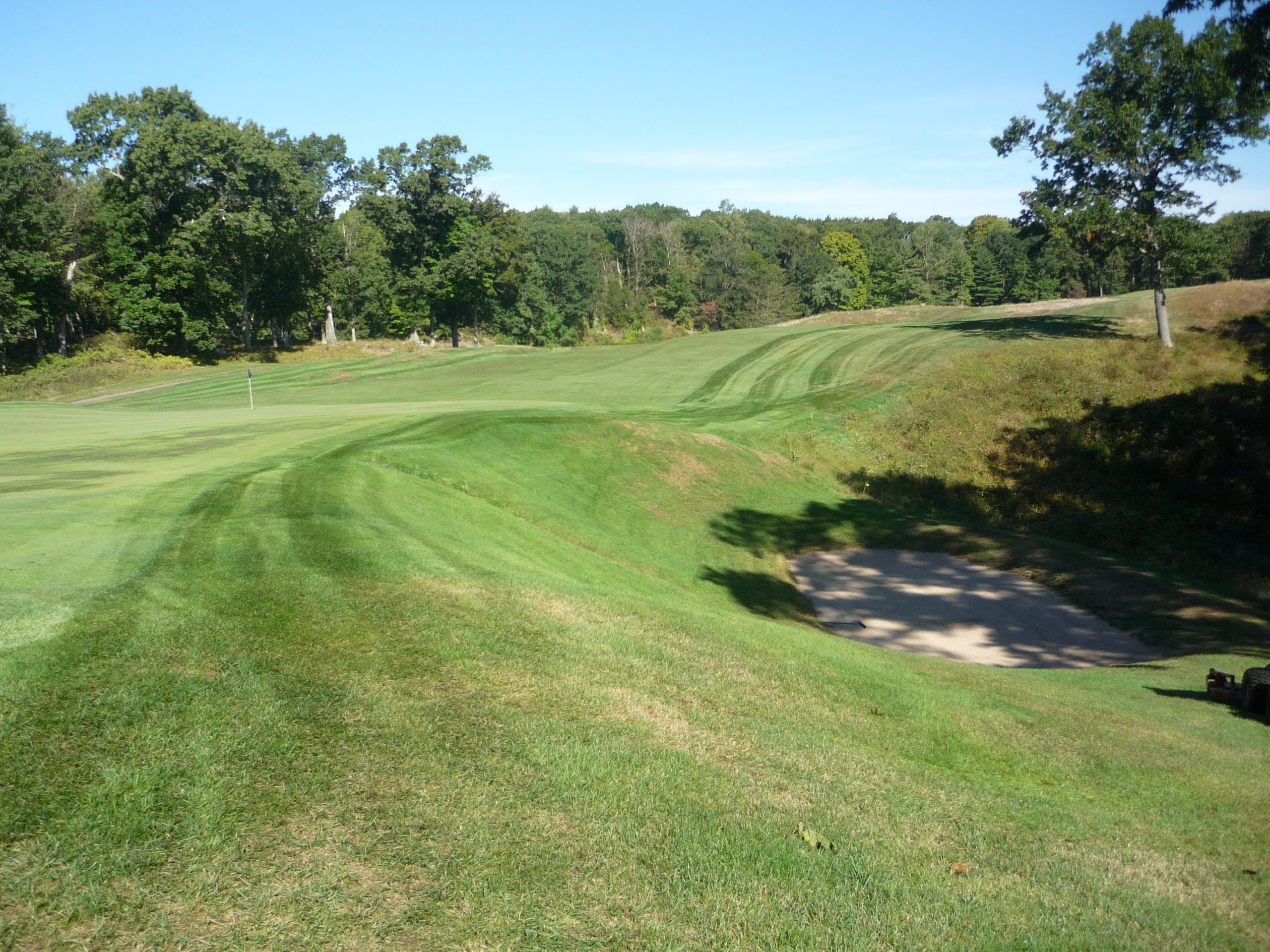
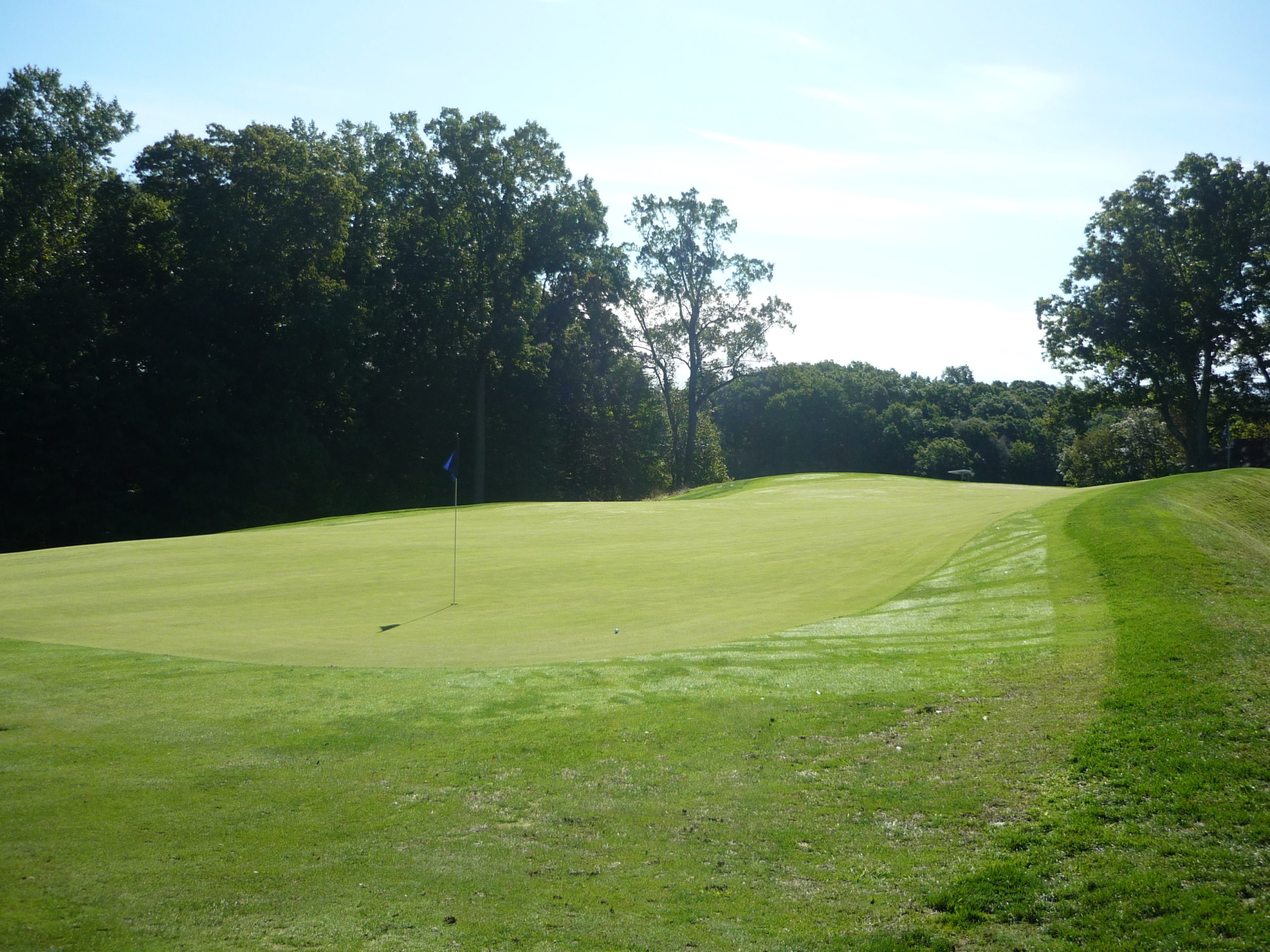
Just look at how big this green is!
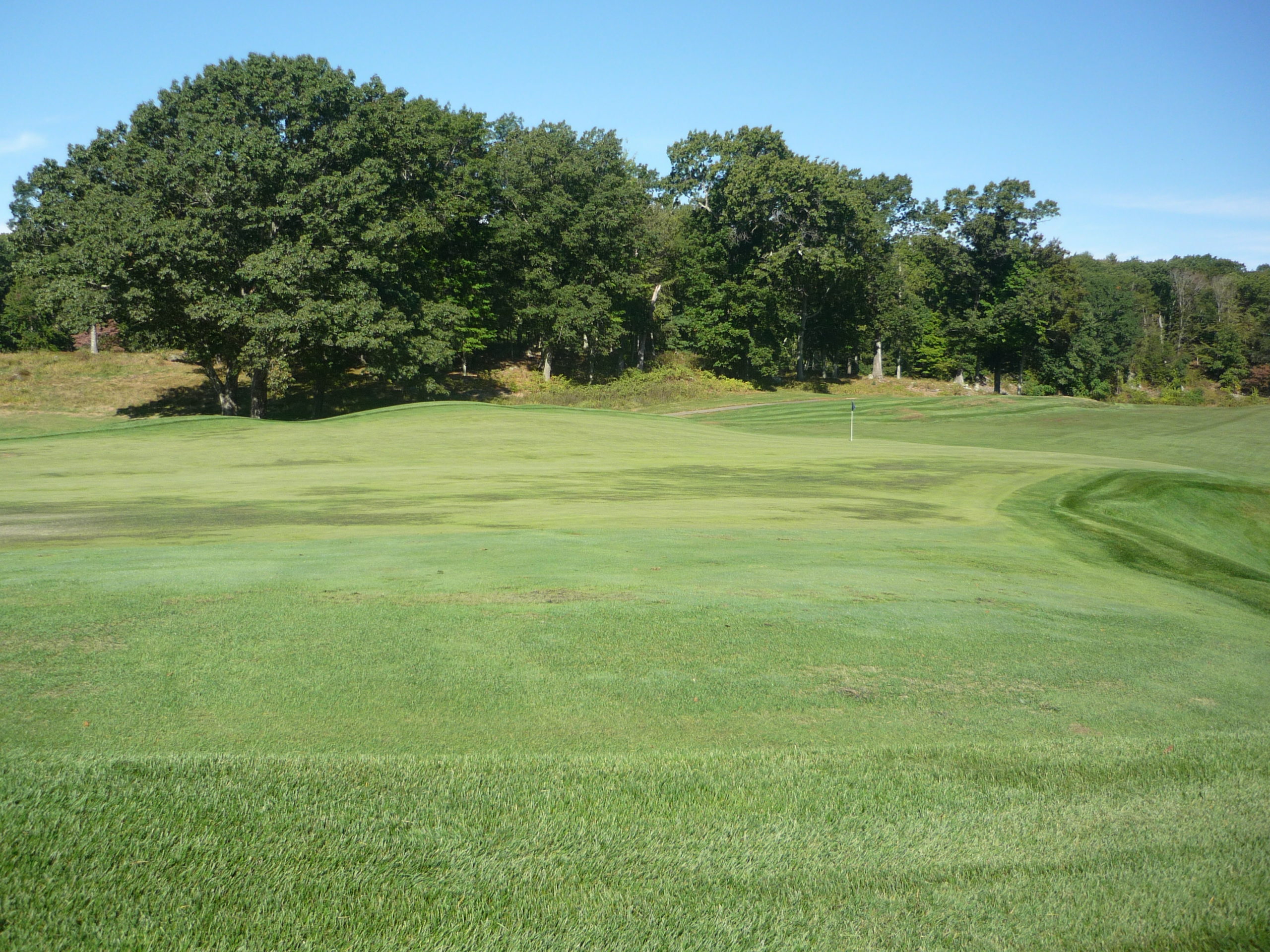
Hole 9 – 185 yards – Par 3
One of, if not the most famous holes at the Course at Yale is the ninth. It’s a Biarritz that, as you can see, plays dramatically over water. The length requires you to hit a solid shot or a double bogey is likely in your future.
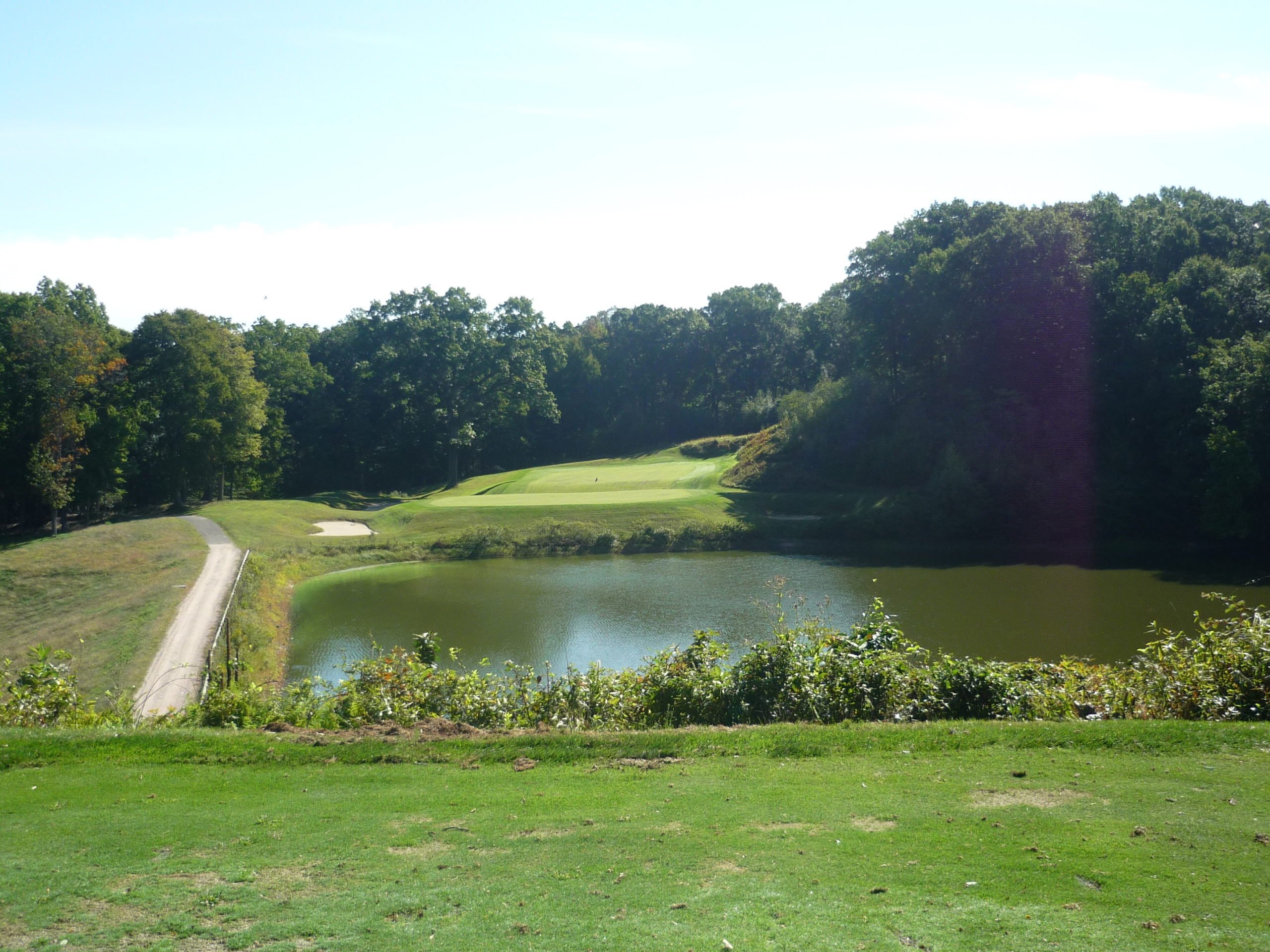
The green is 65 yards from front to back and the trademark middle drop is well over five feet deep. Unfortunately, we got a front hole location, so the slopes weren’t a factor.
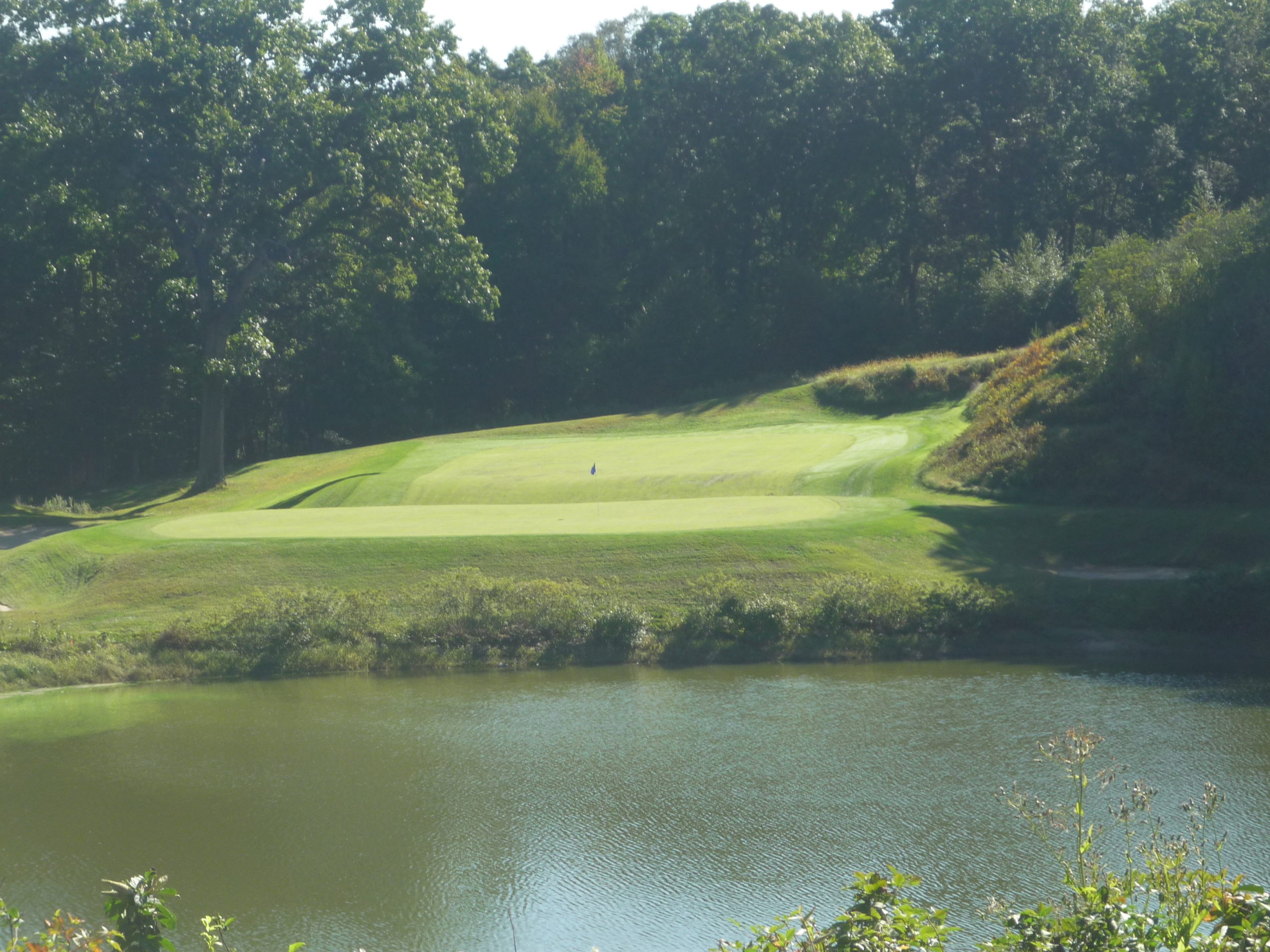
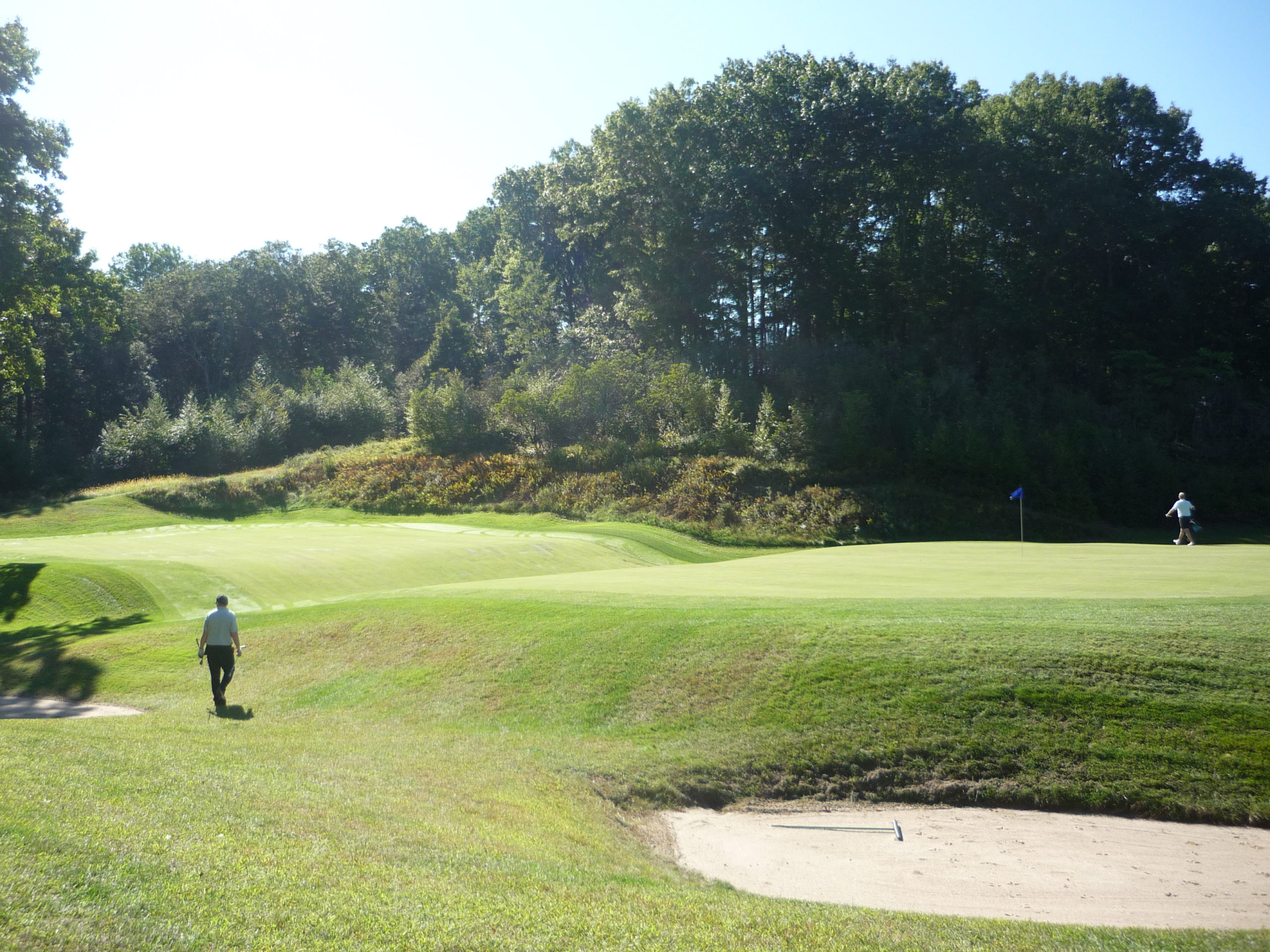
Hole 10 – 356 yards – Par 4
The ninth gets all the pub, but ten is my favorite hole on the course. Your tee shot plays over the hill to a raised fairway. The difficulty of the second shot makes hitting the fairway a near necessity.
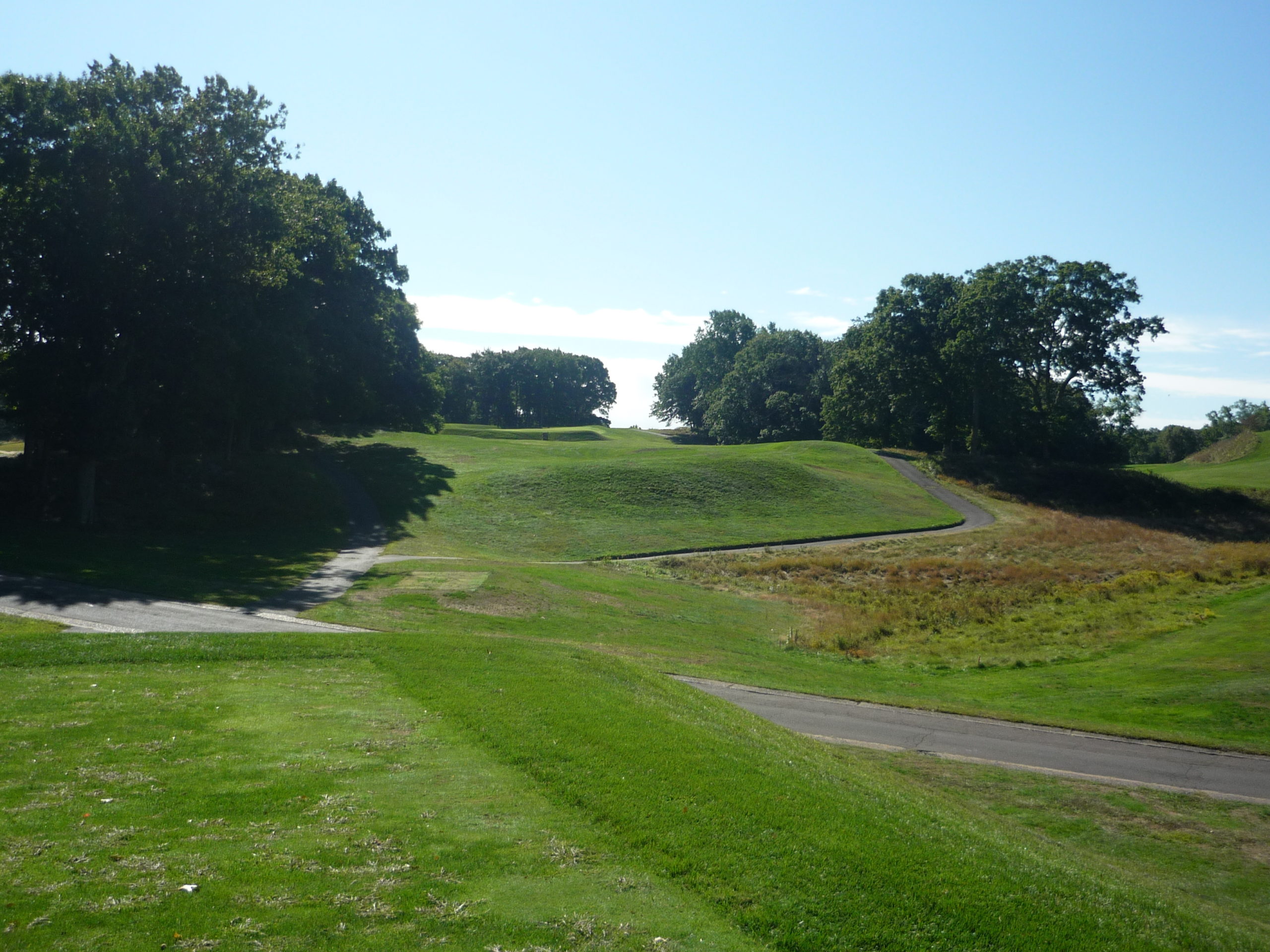
You continue up the hill to a blind green. Trust your lines and fire away.
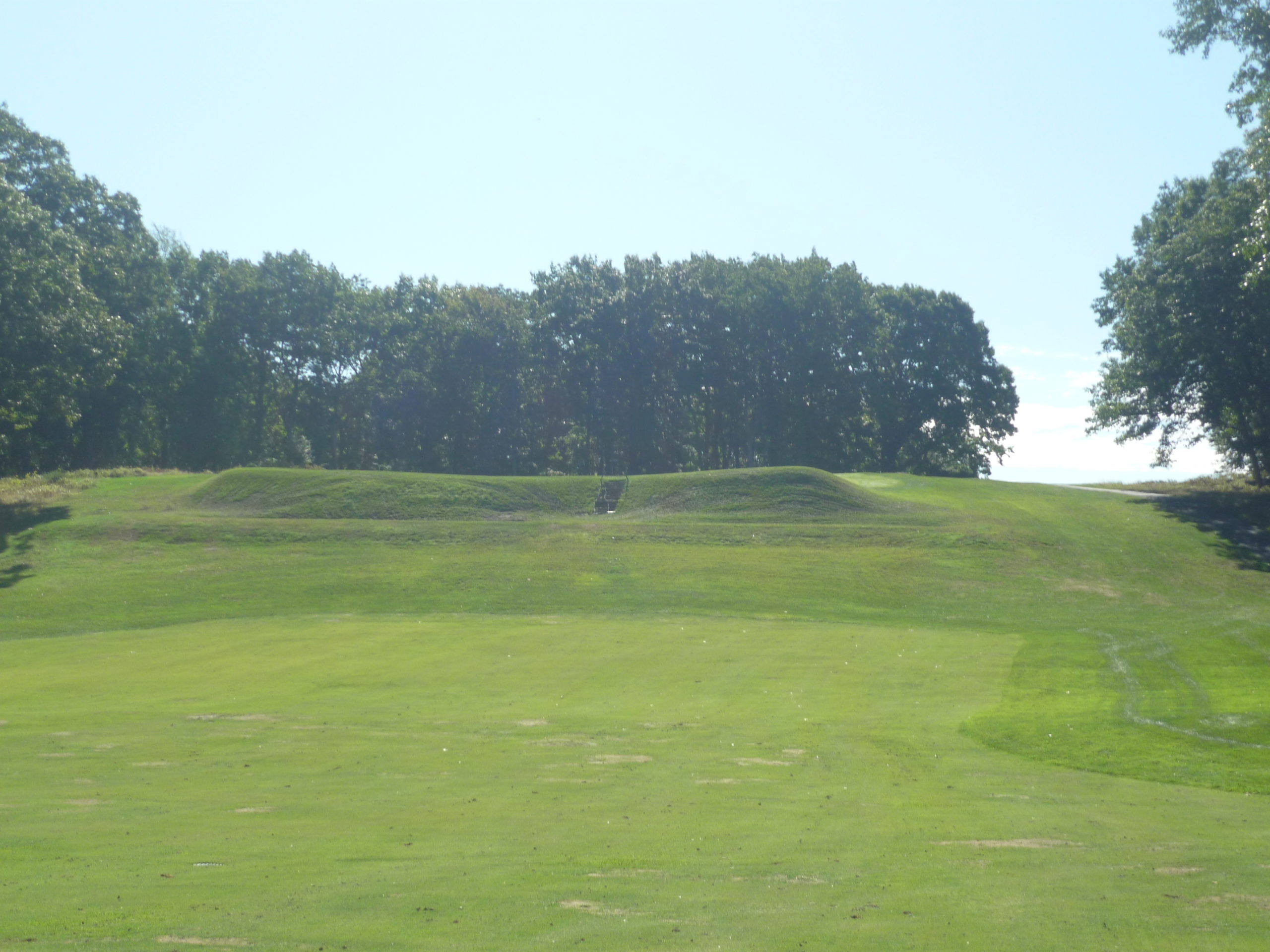
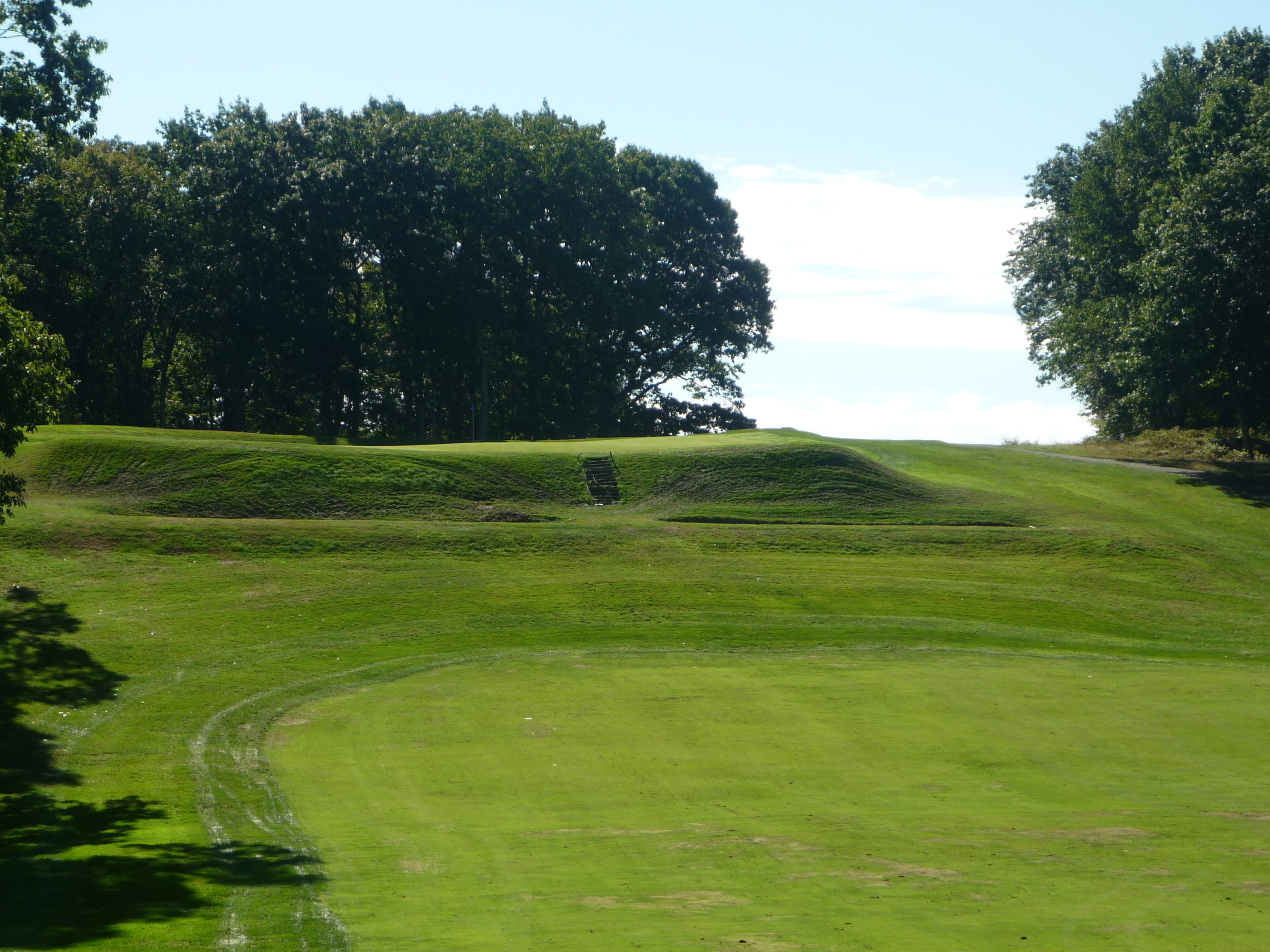
The green is so large and complex that I needed multiple photos to capture it.
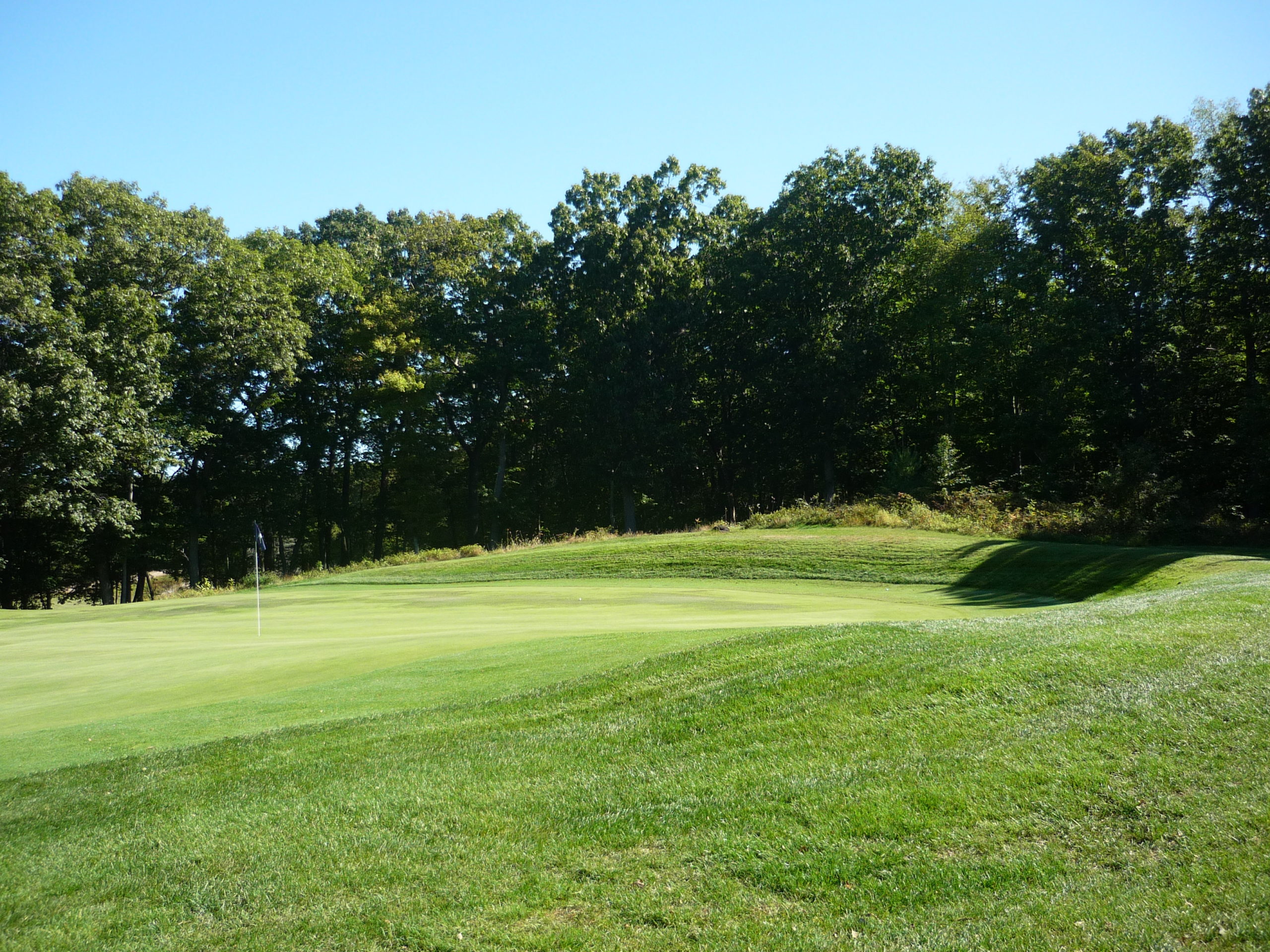
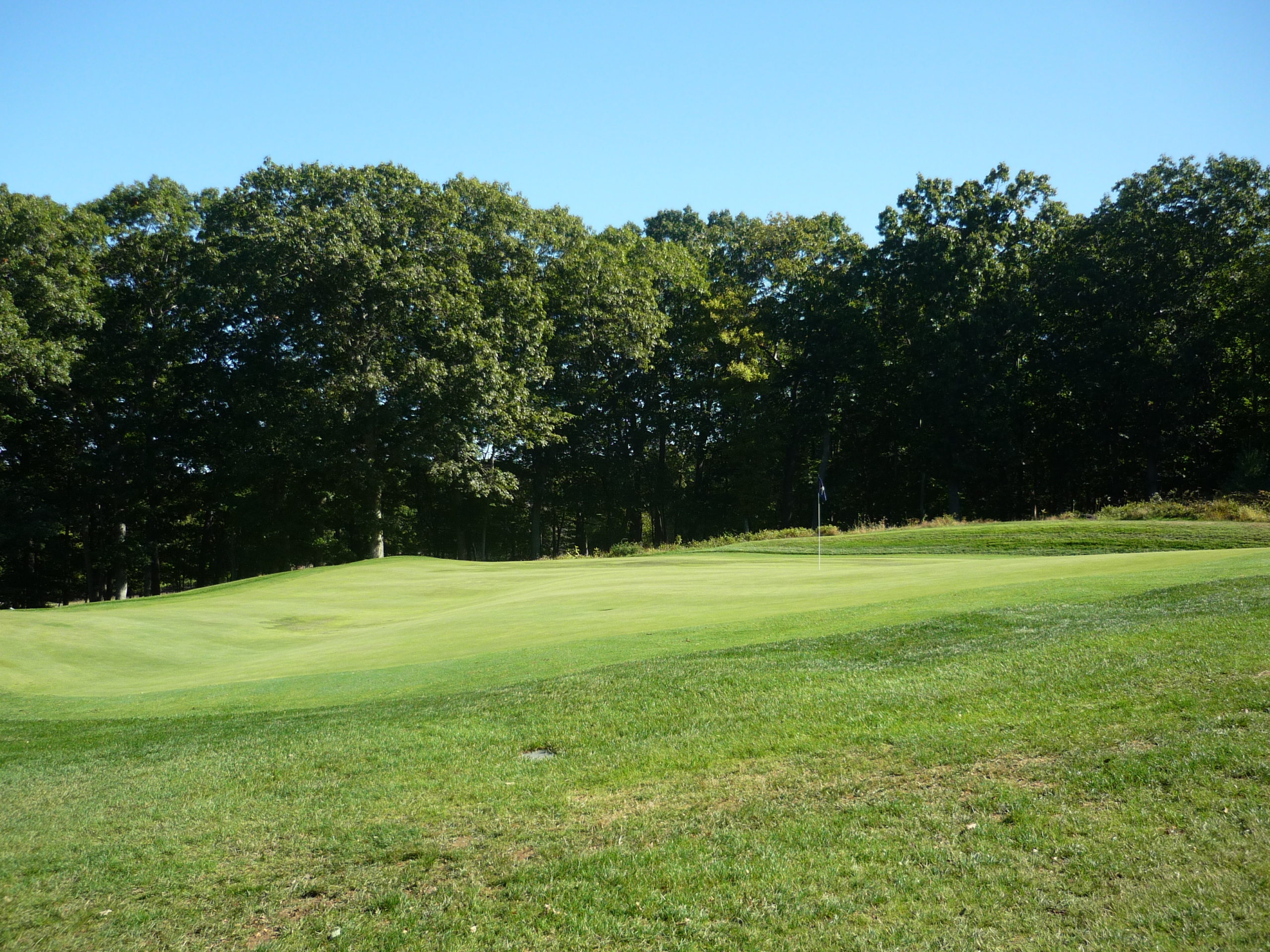
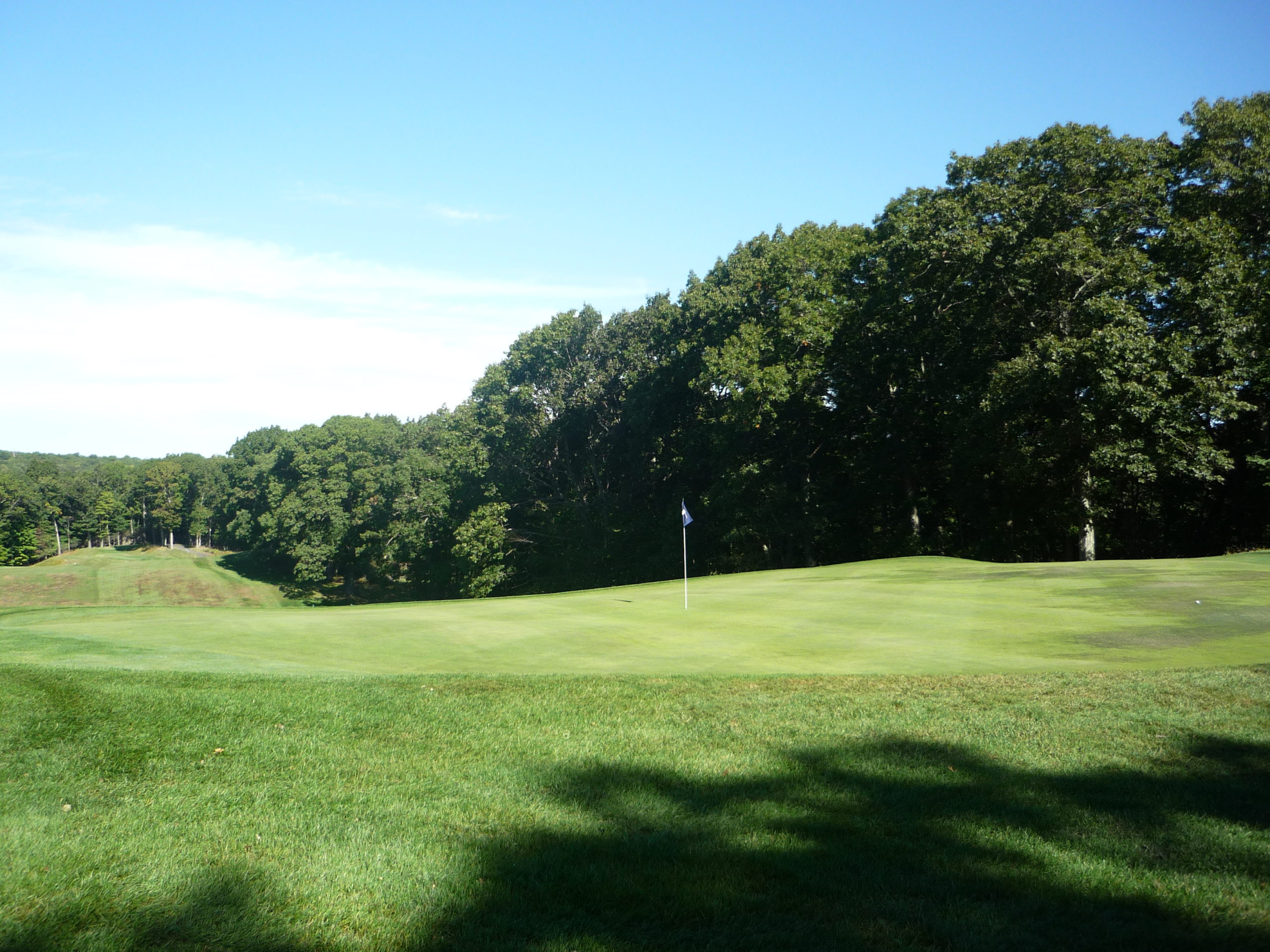
Hole 11 – 334 yards – Par 4
With the shorter length and trees pinching in, a driver isn’t needed on this elevated tee shot. If you can set up an approach from the left side of the fairway, you’ll be happy.
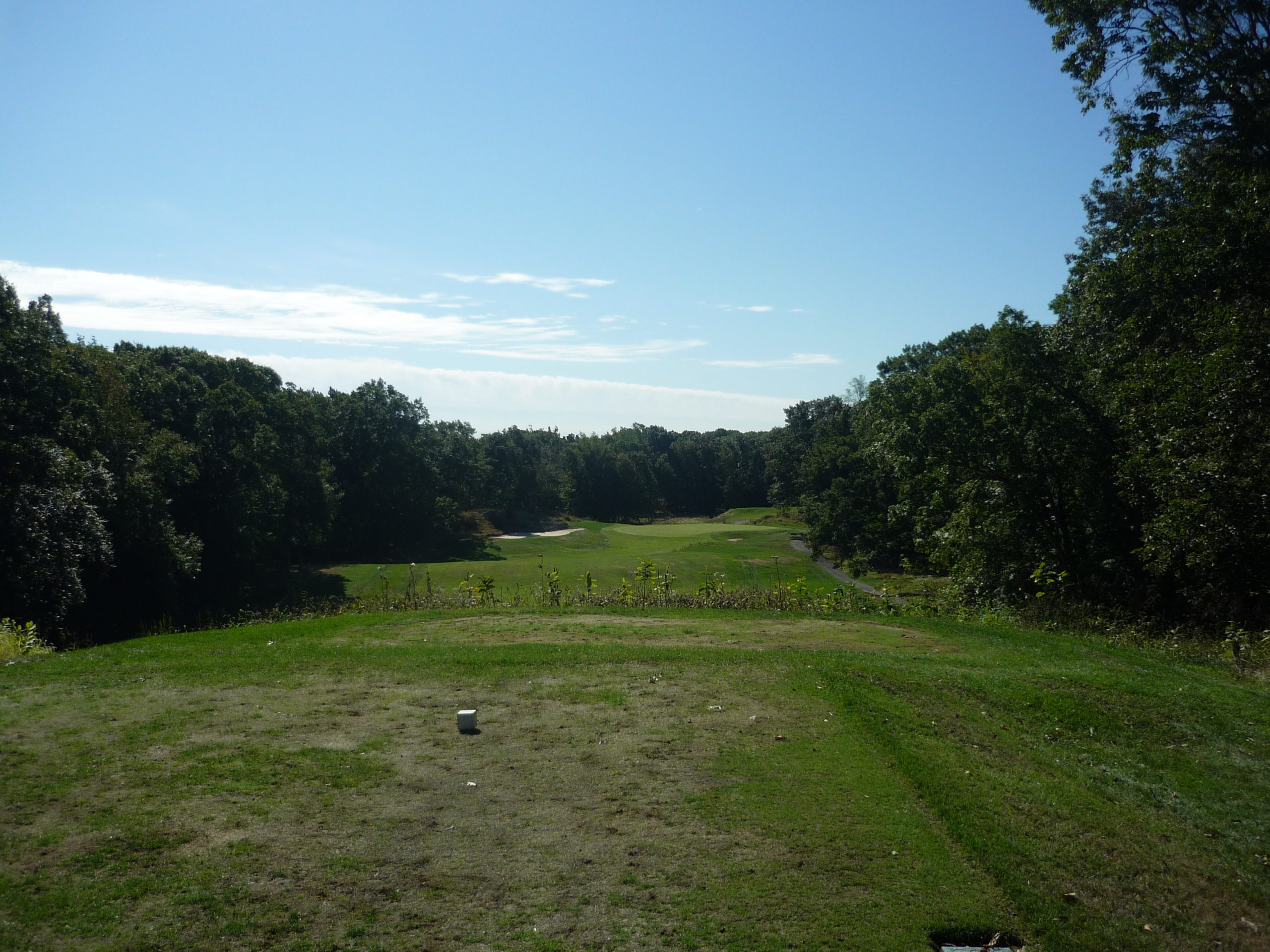
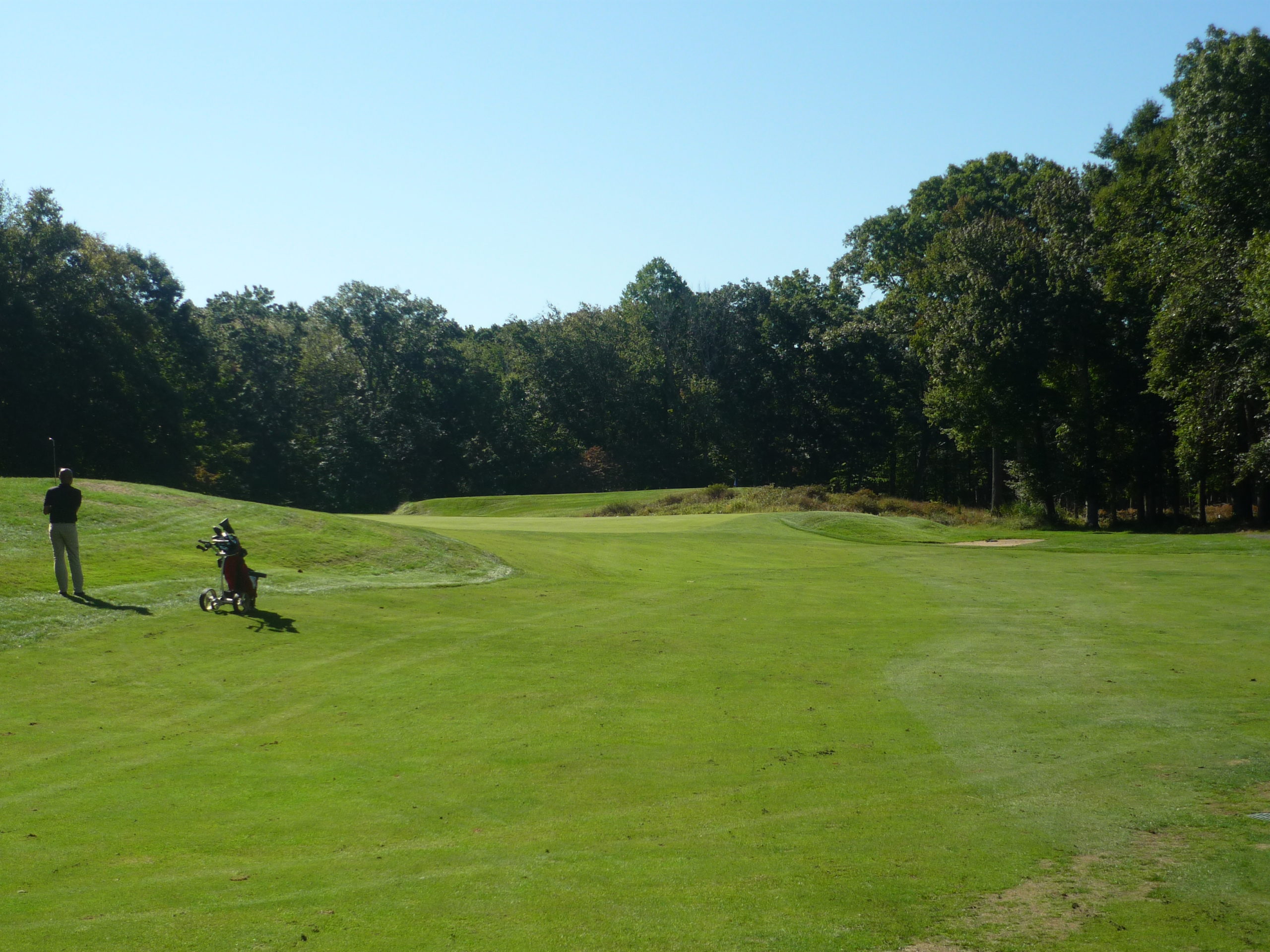
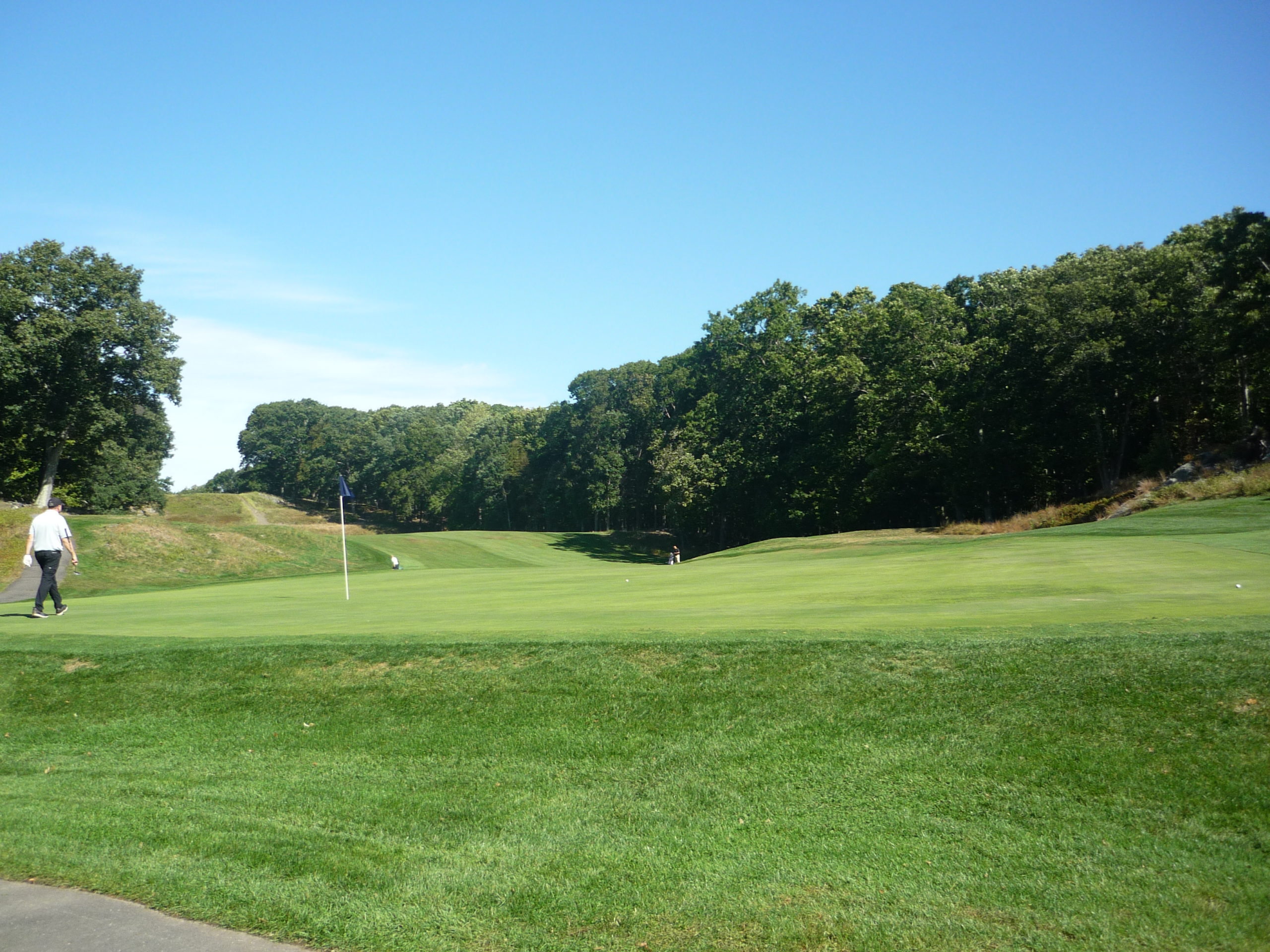
Hole 12 – 343 yards – Par 4
The rollercoaster ride begins from the tee on this hole. The fairway rises and falls as you play towards the green on this Alps template.
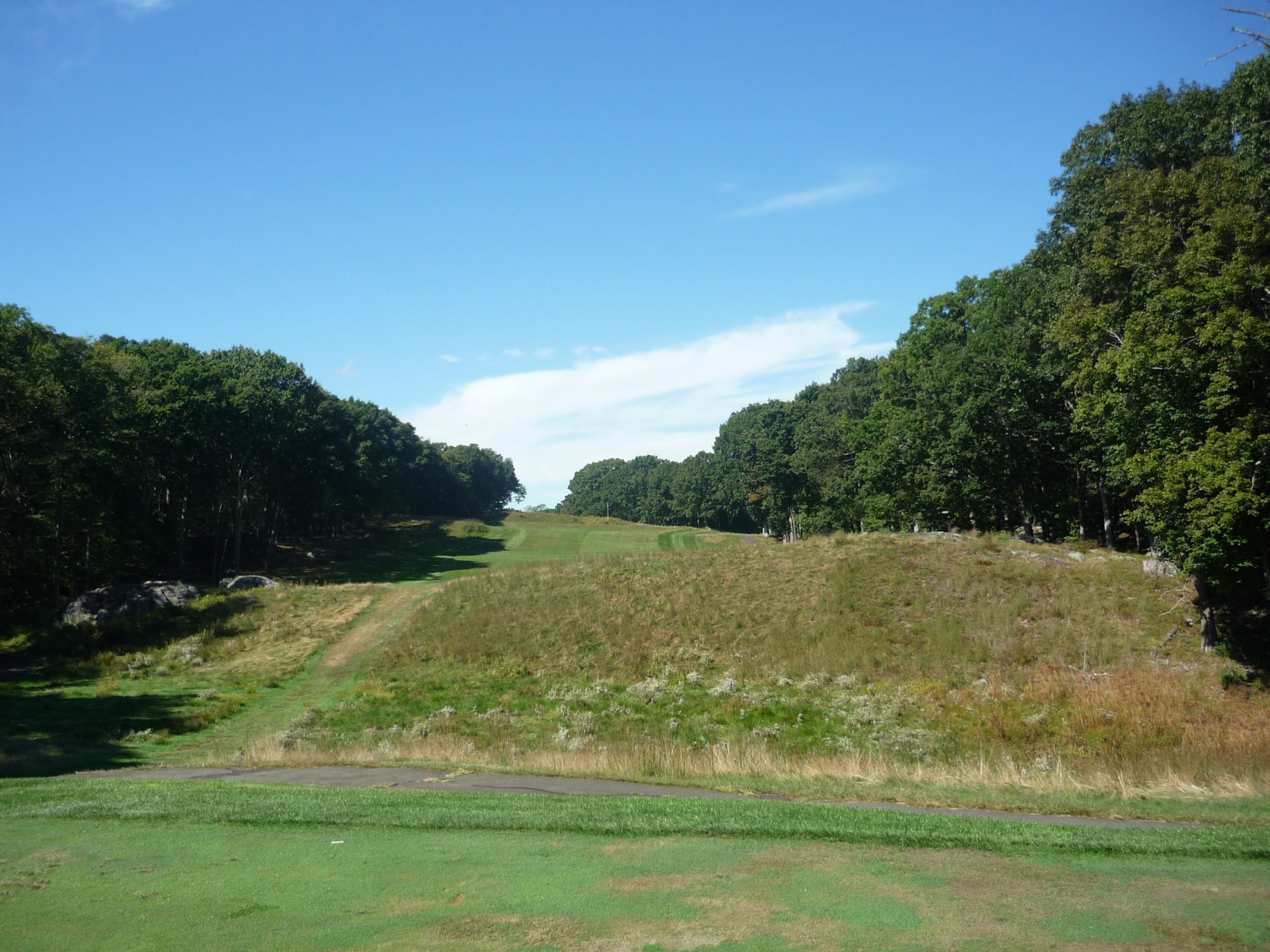
Here is the blind approach.
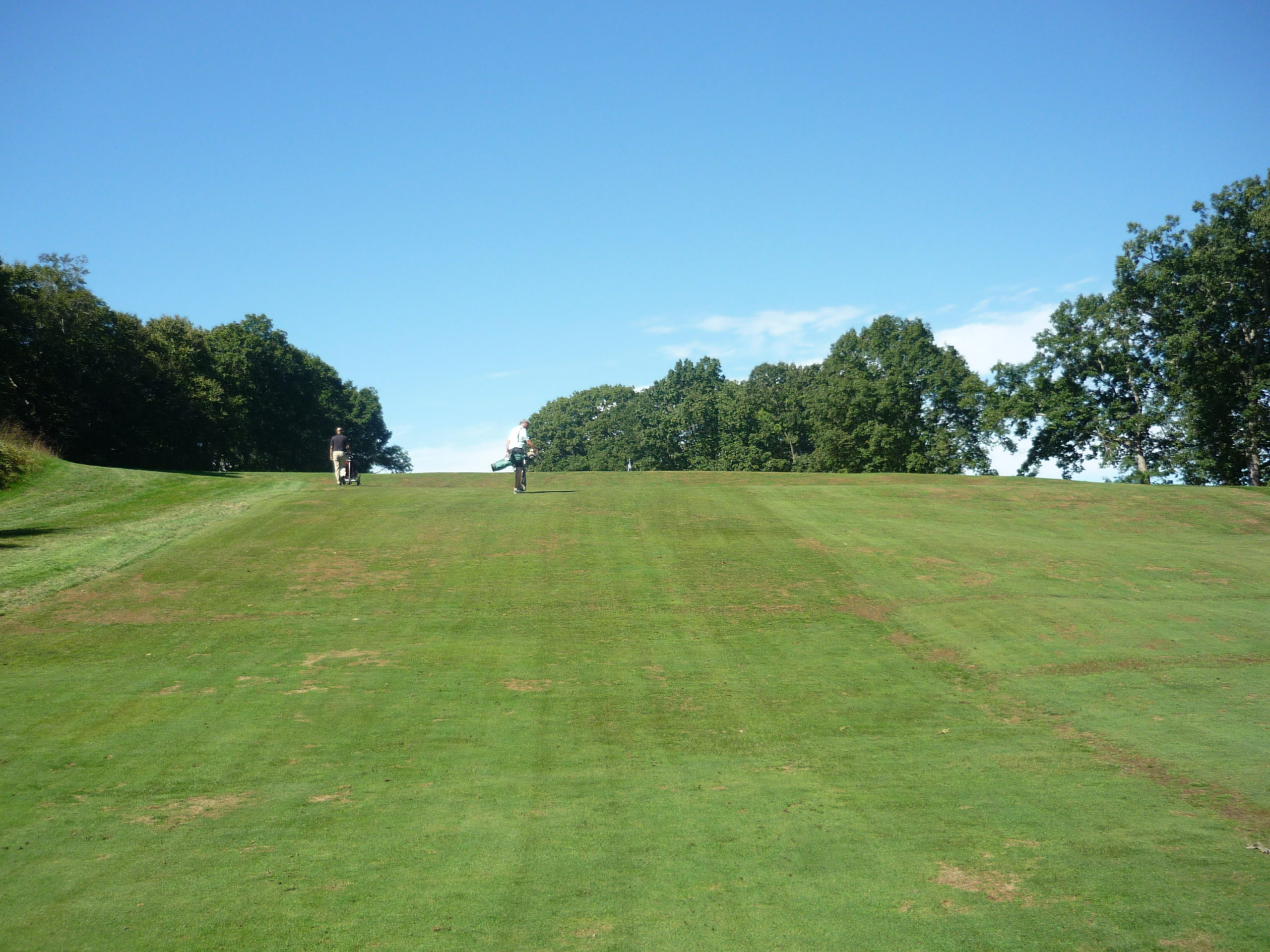
The Alps bunker guards the front of the large green.
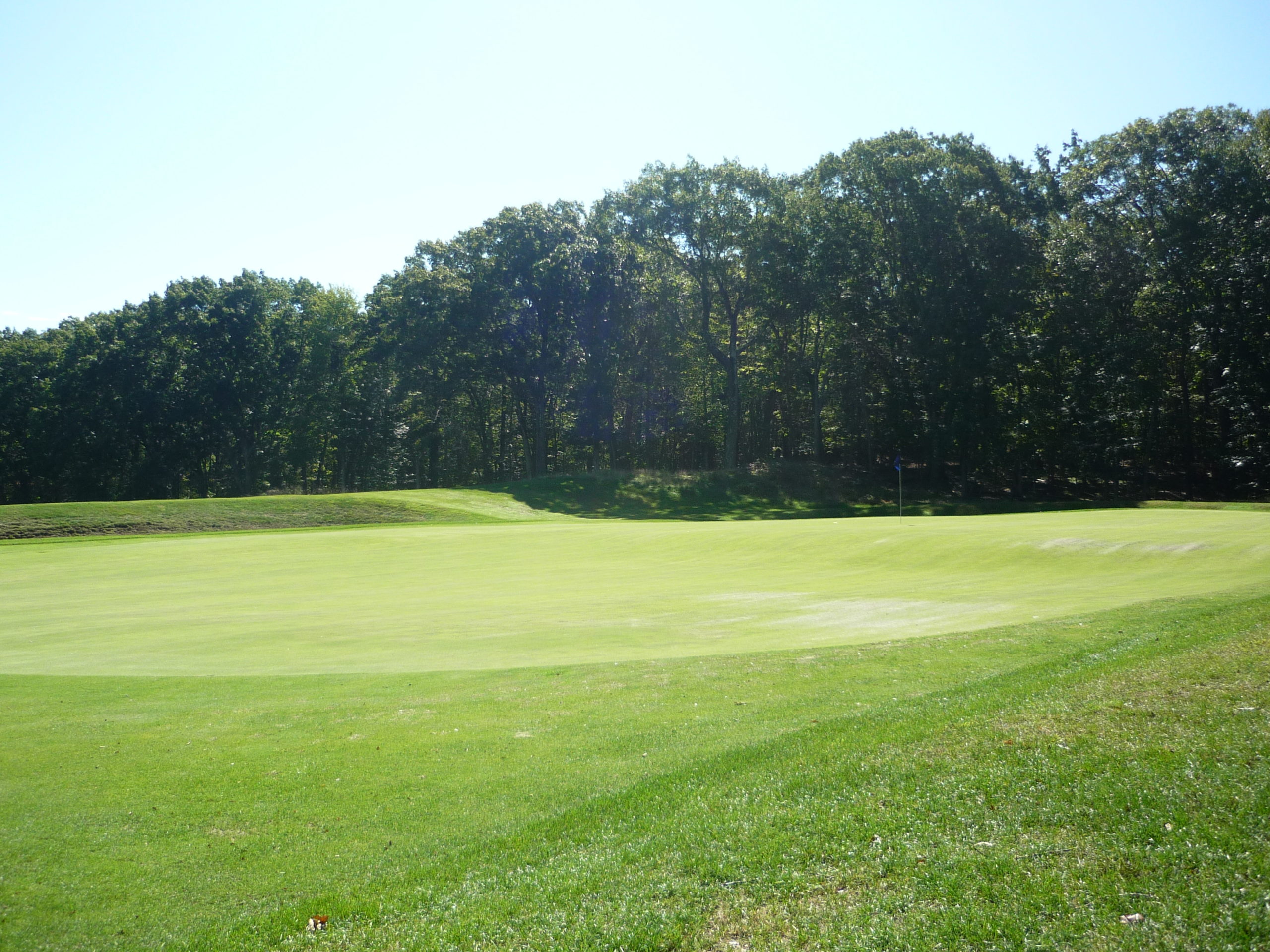
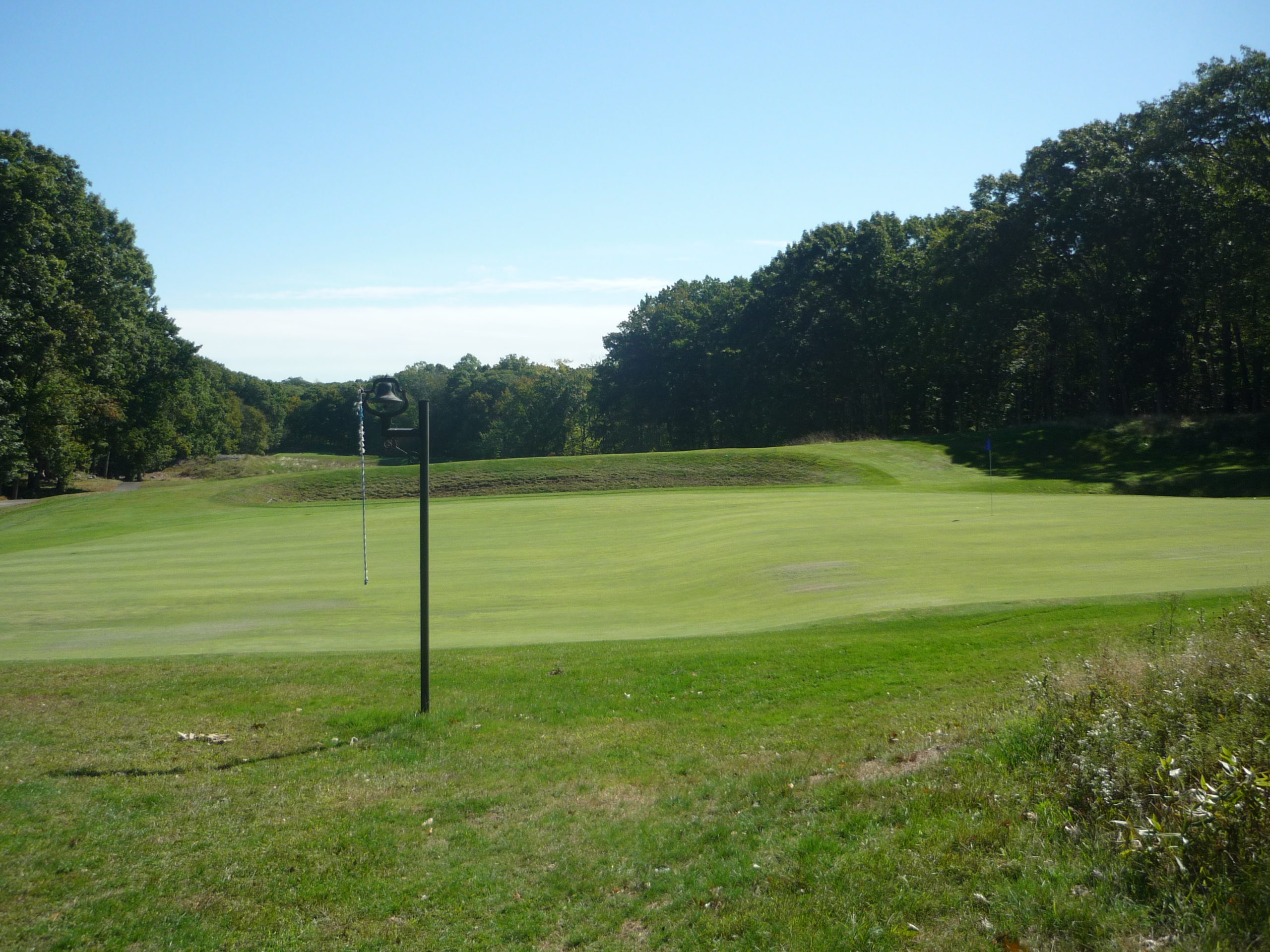
Hole 13 – 192 yards – Par 3
Turf improvement will help this hole more than most. Redan templates need firm conditions so golfers can use the slopes to feed balls onto the green. When I played, it was more point-and-shoot. Additionally, it is likely due to alterations over the years.
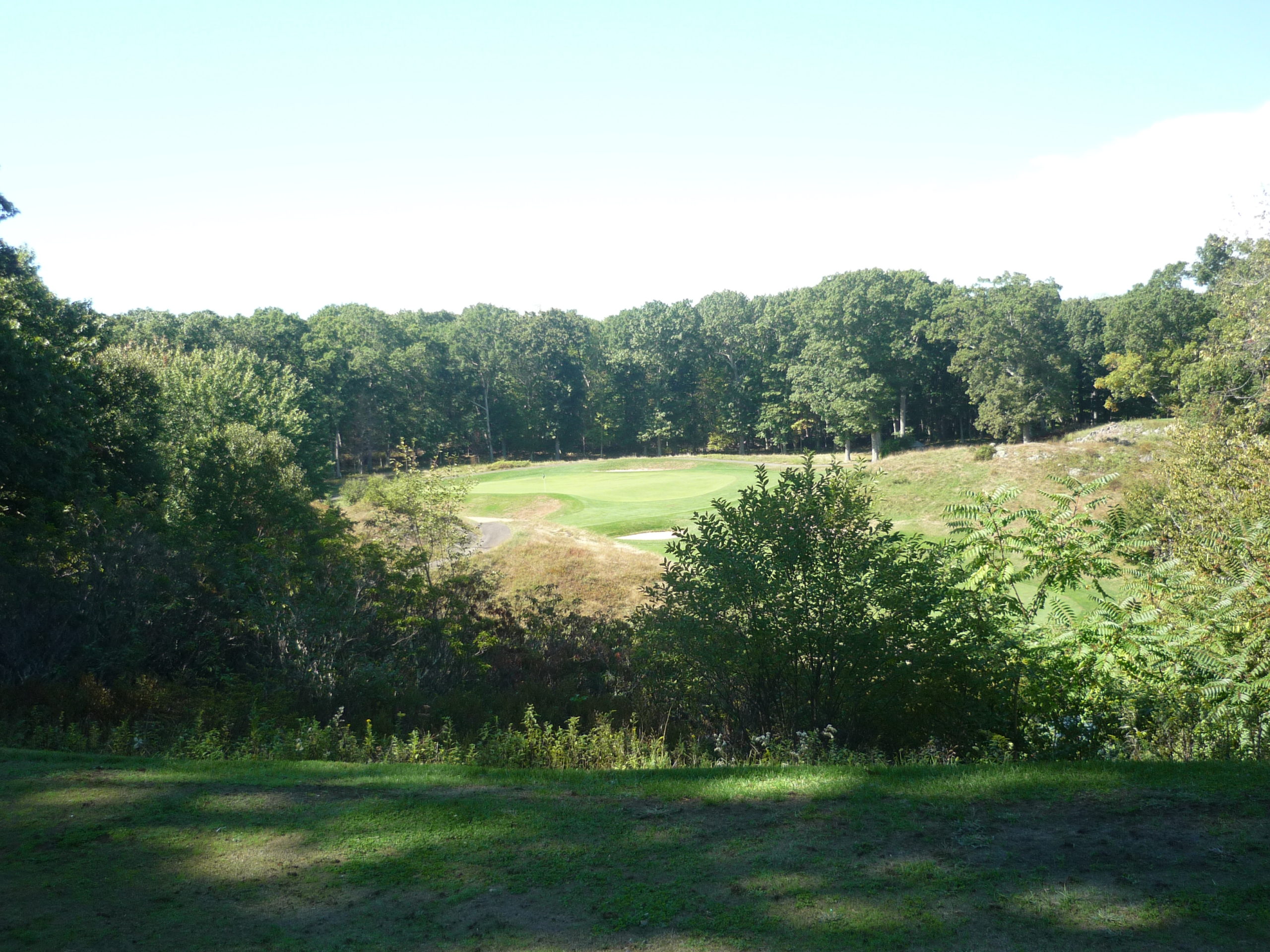
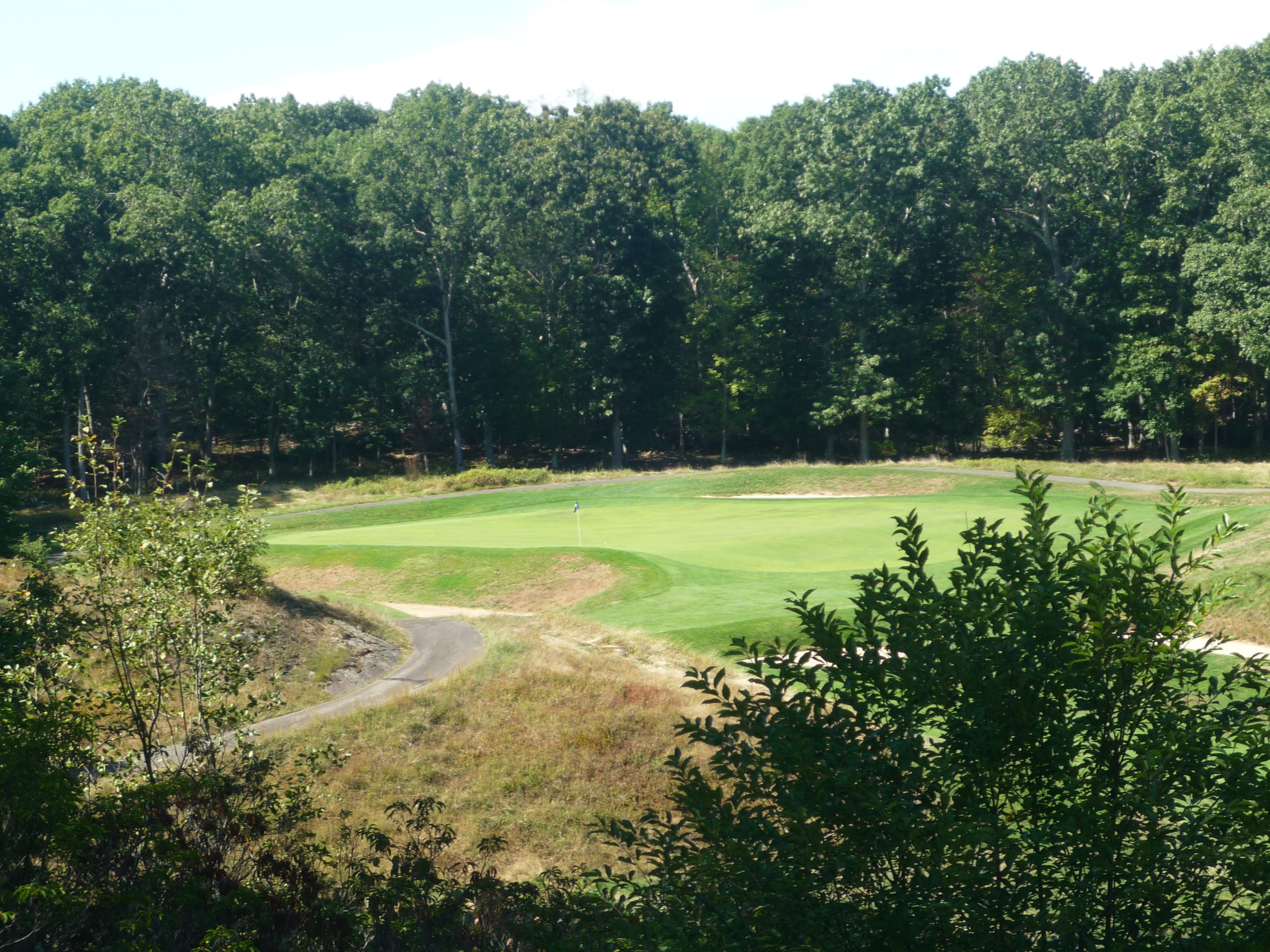
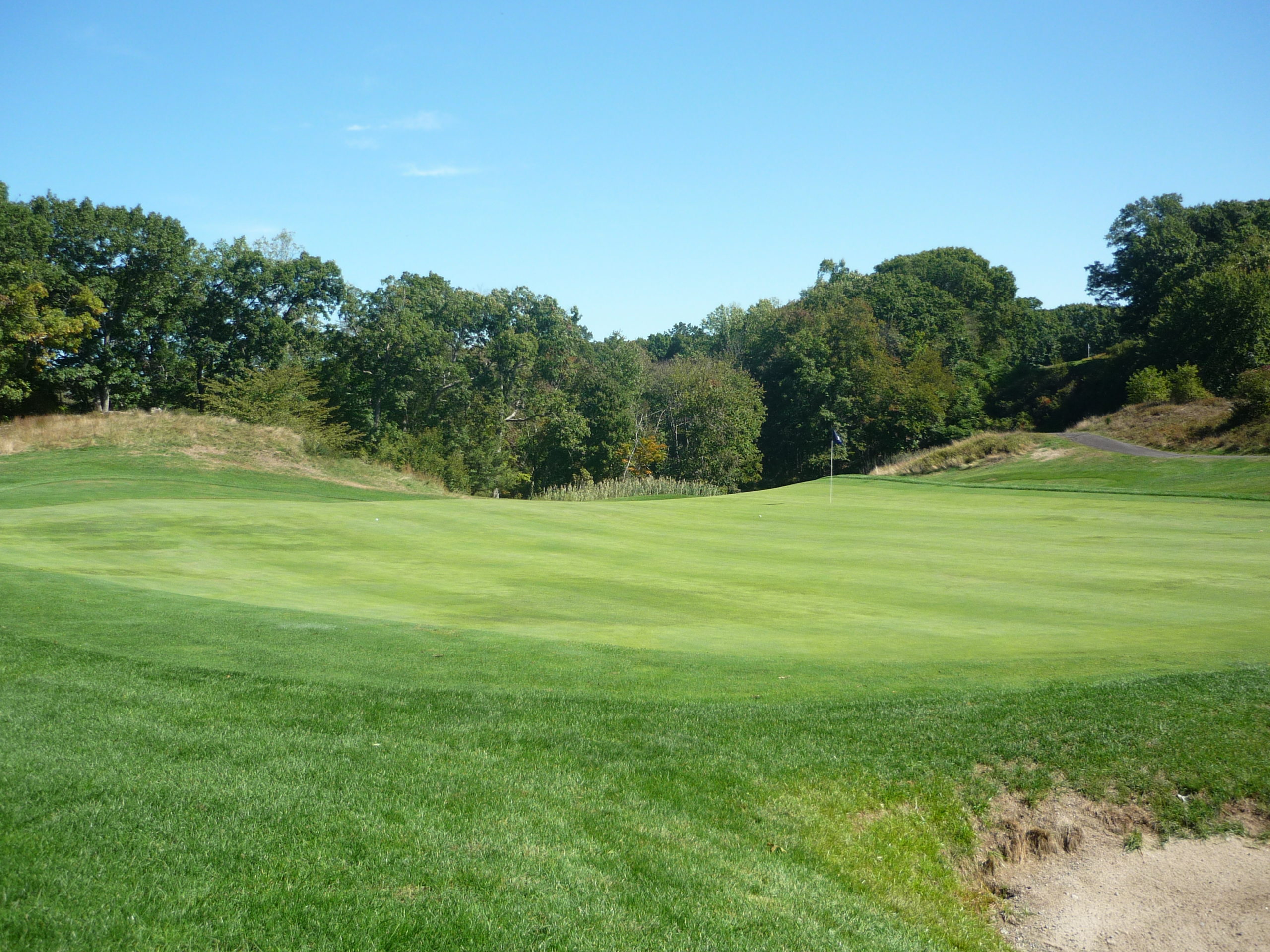
Hole 14 – 342 yards – Par 4
The fairway has two distinct levels with the left being much higher. A fade is the preferred shot shape since it can utilize the contours for extra rollout.
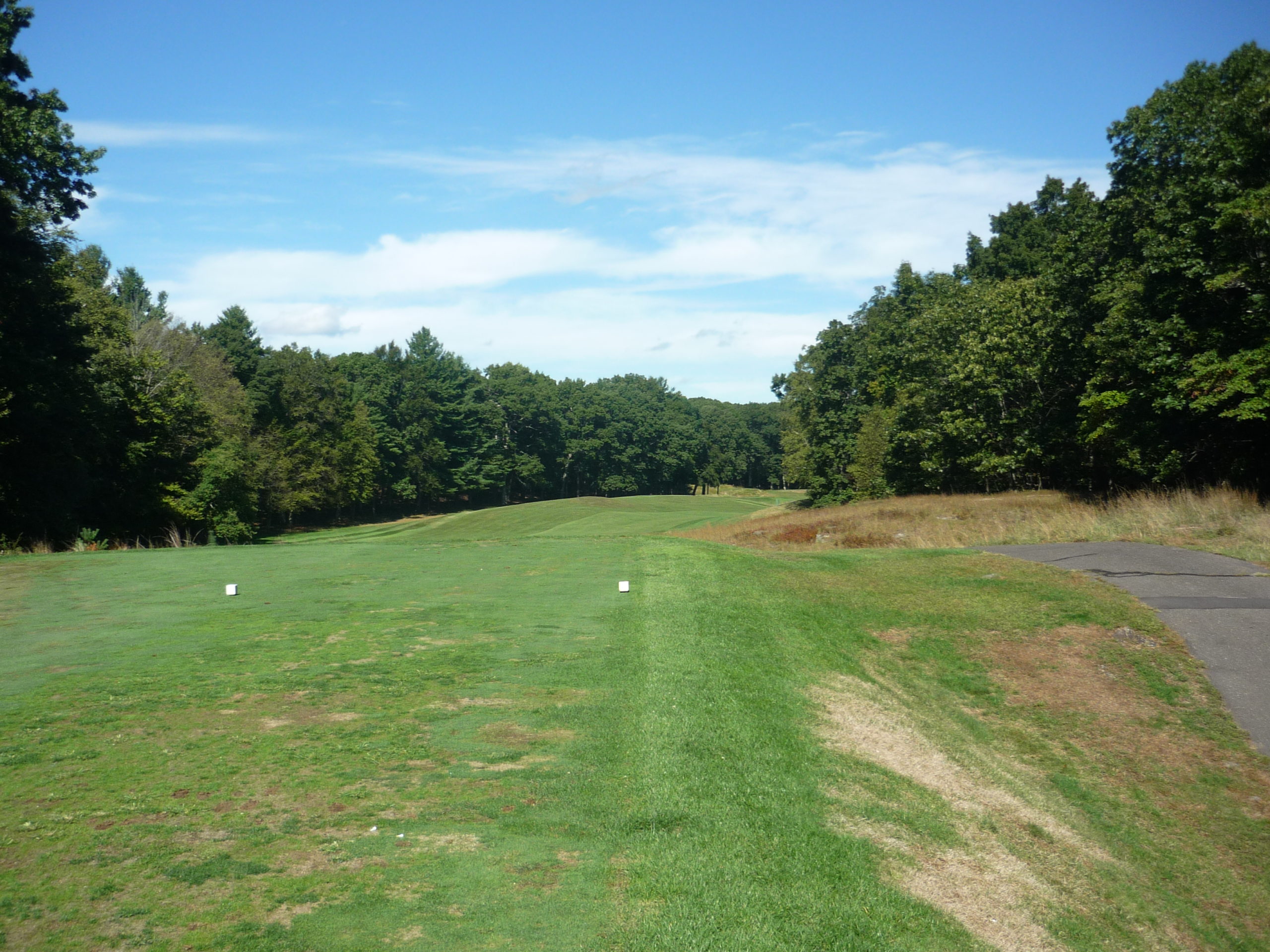
The green is quite perched and you really don’t want to miss anywhere but just short.
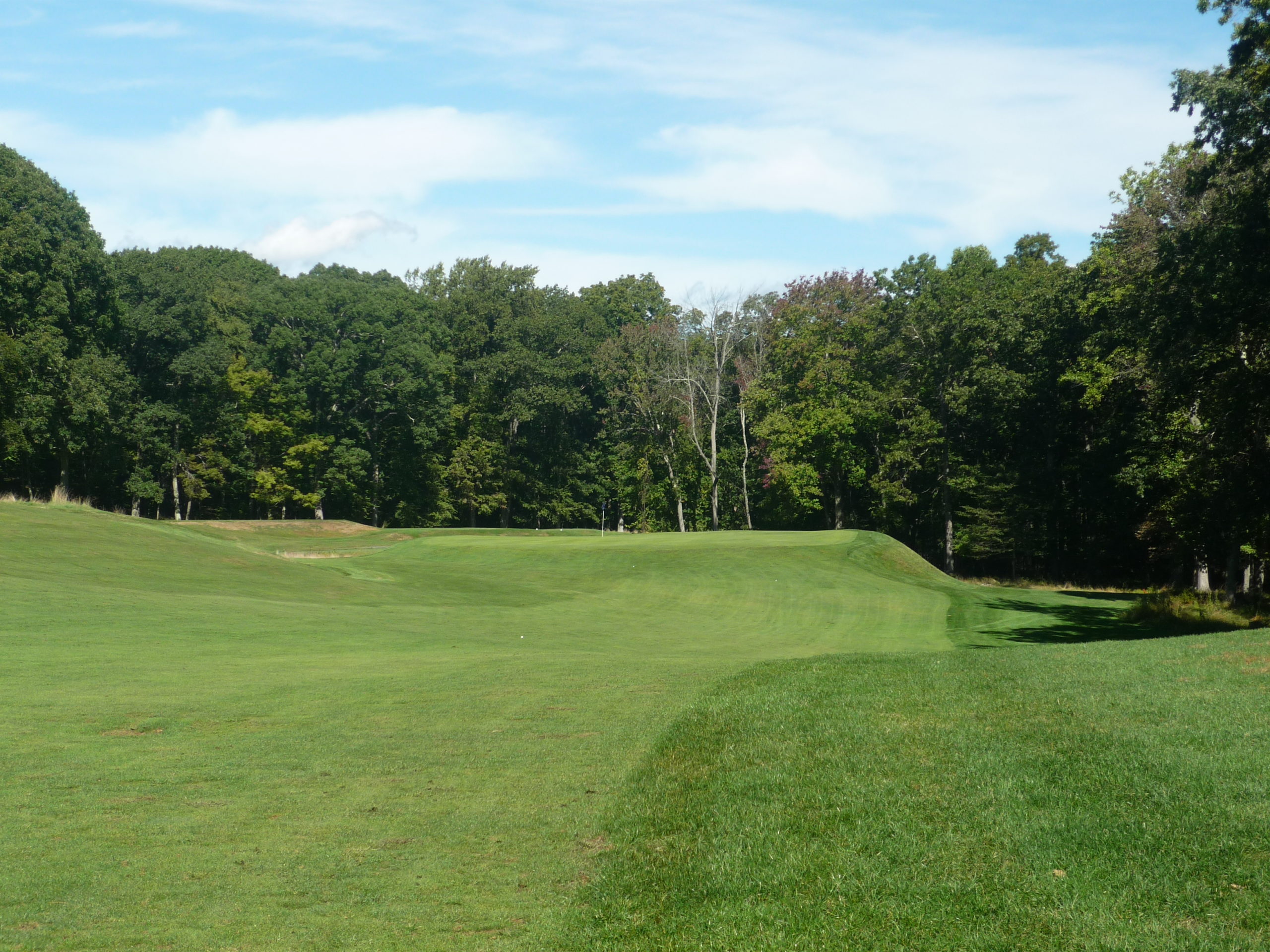
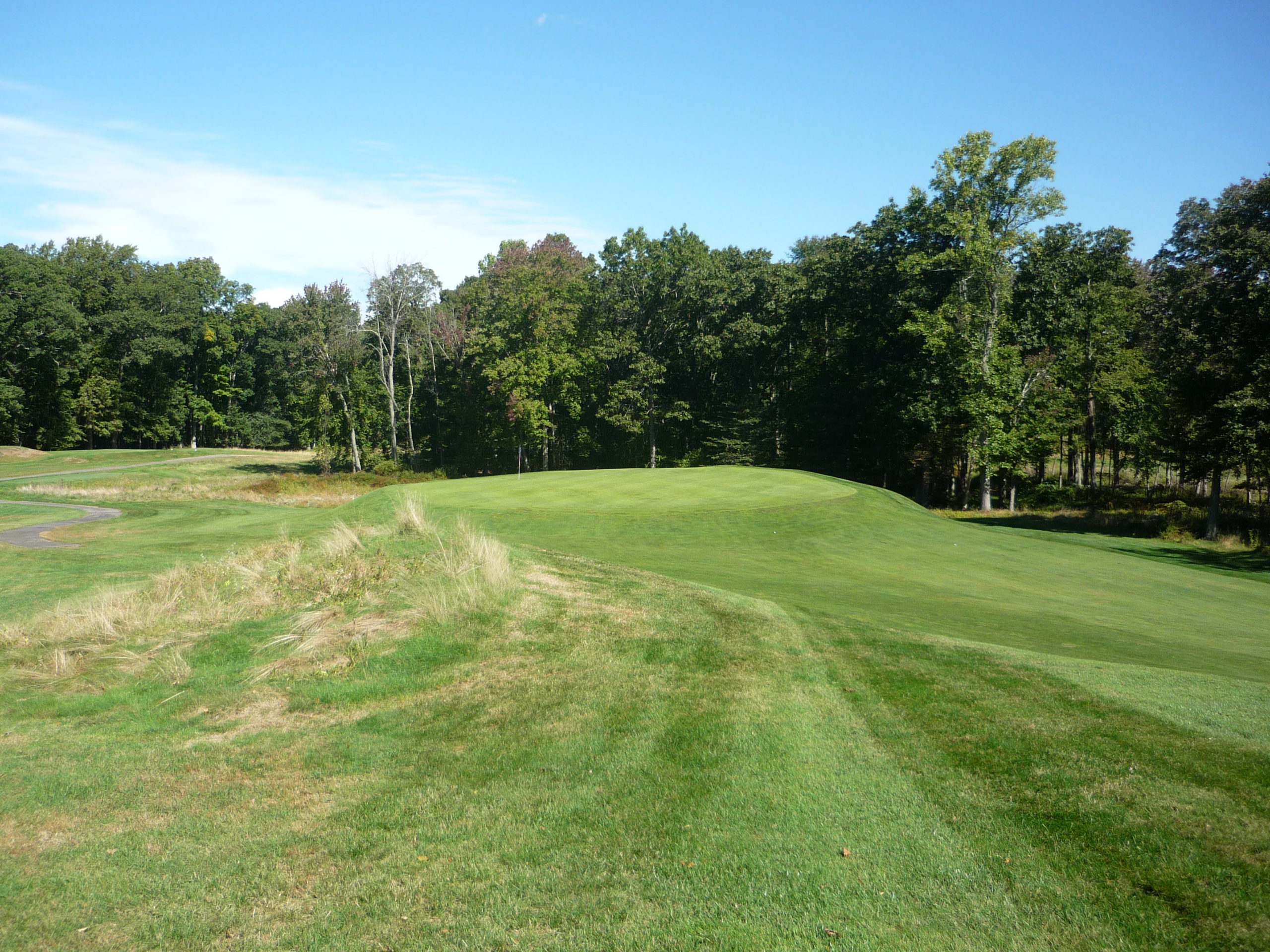
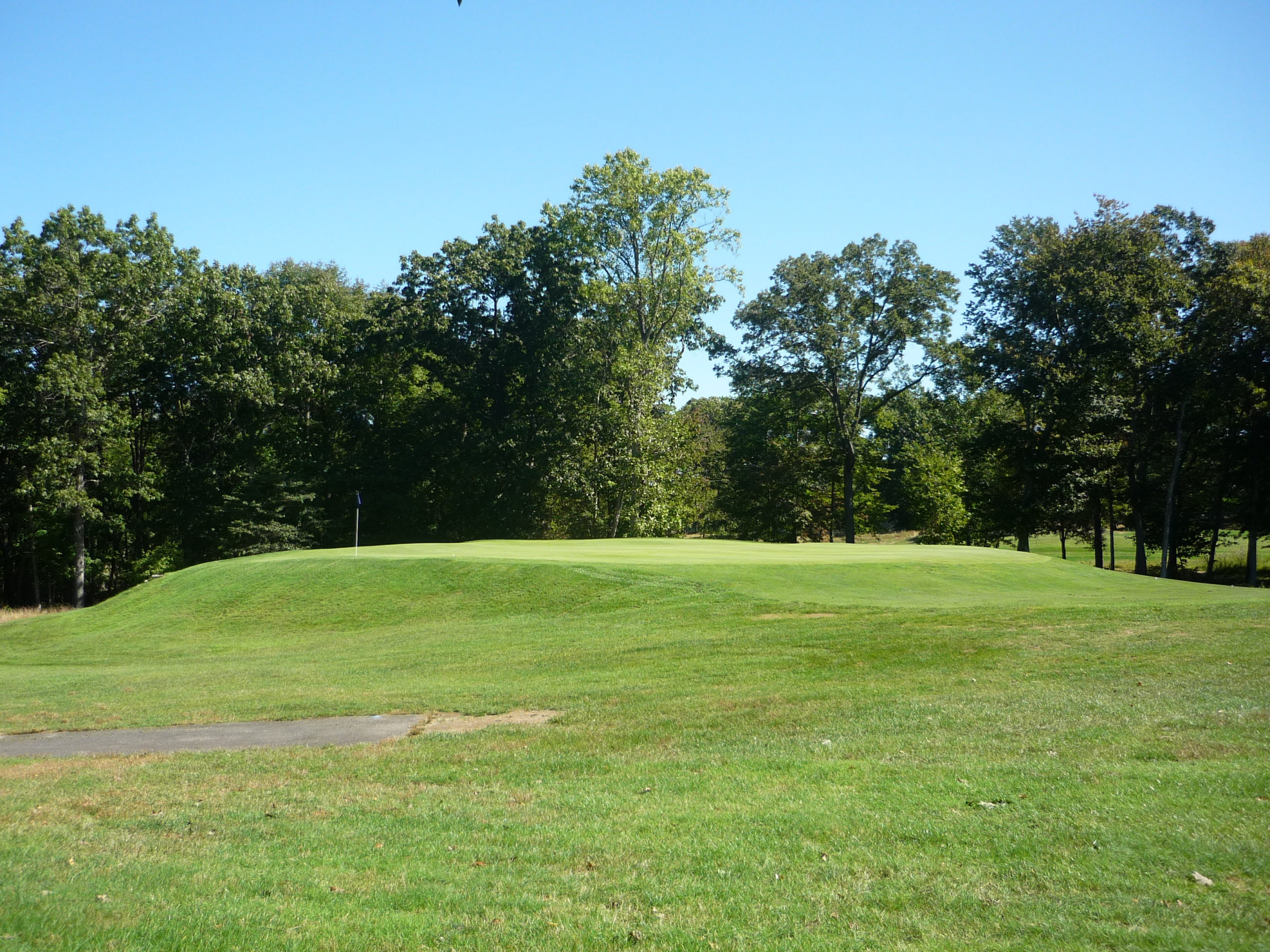
Hole 15 – 141 yards – Par 3
Deep bunkers and rough guard the front of this green. That being said, going long can be a nightmare too.
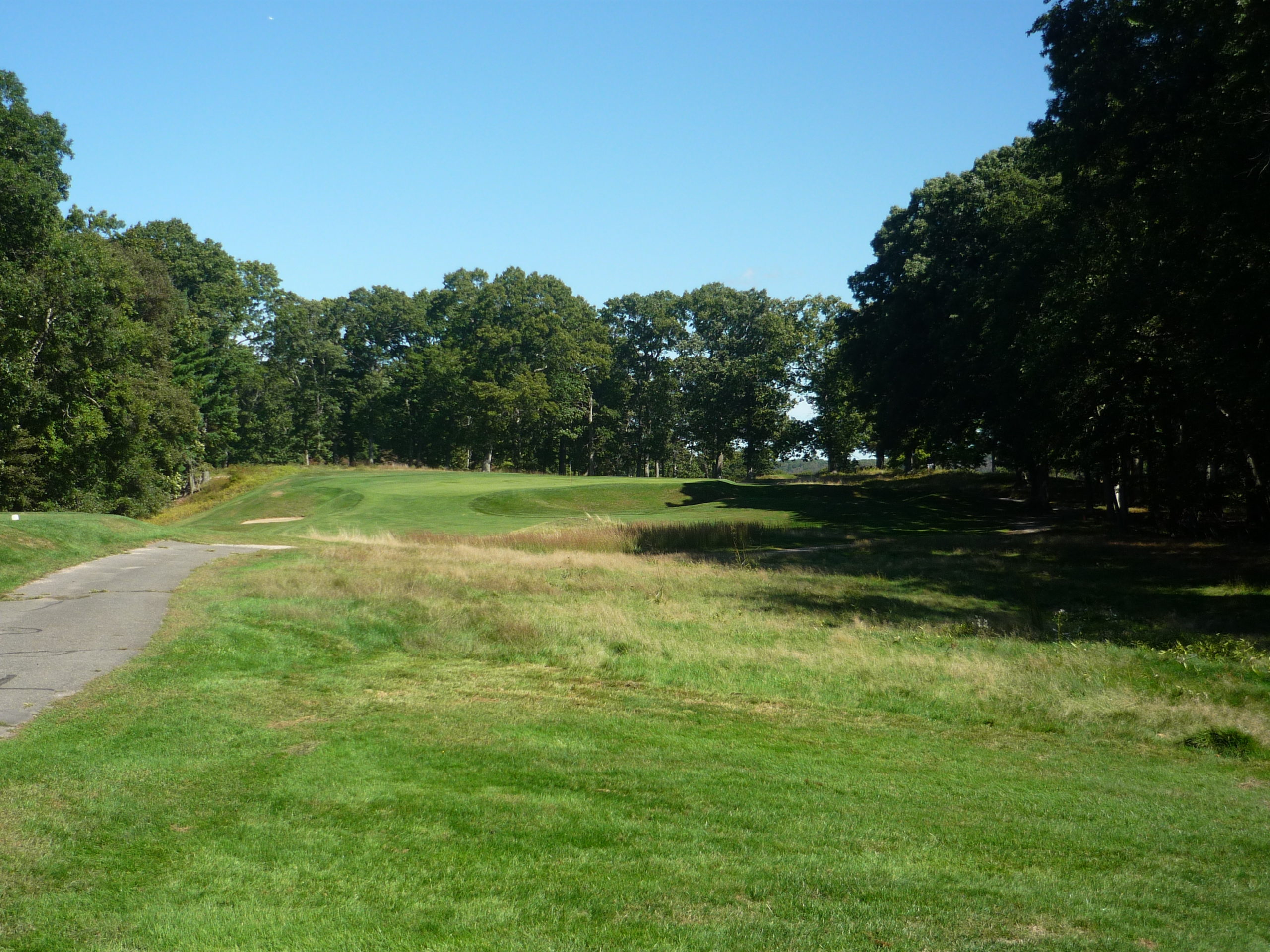
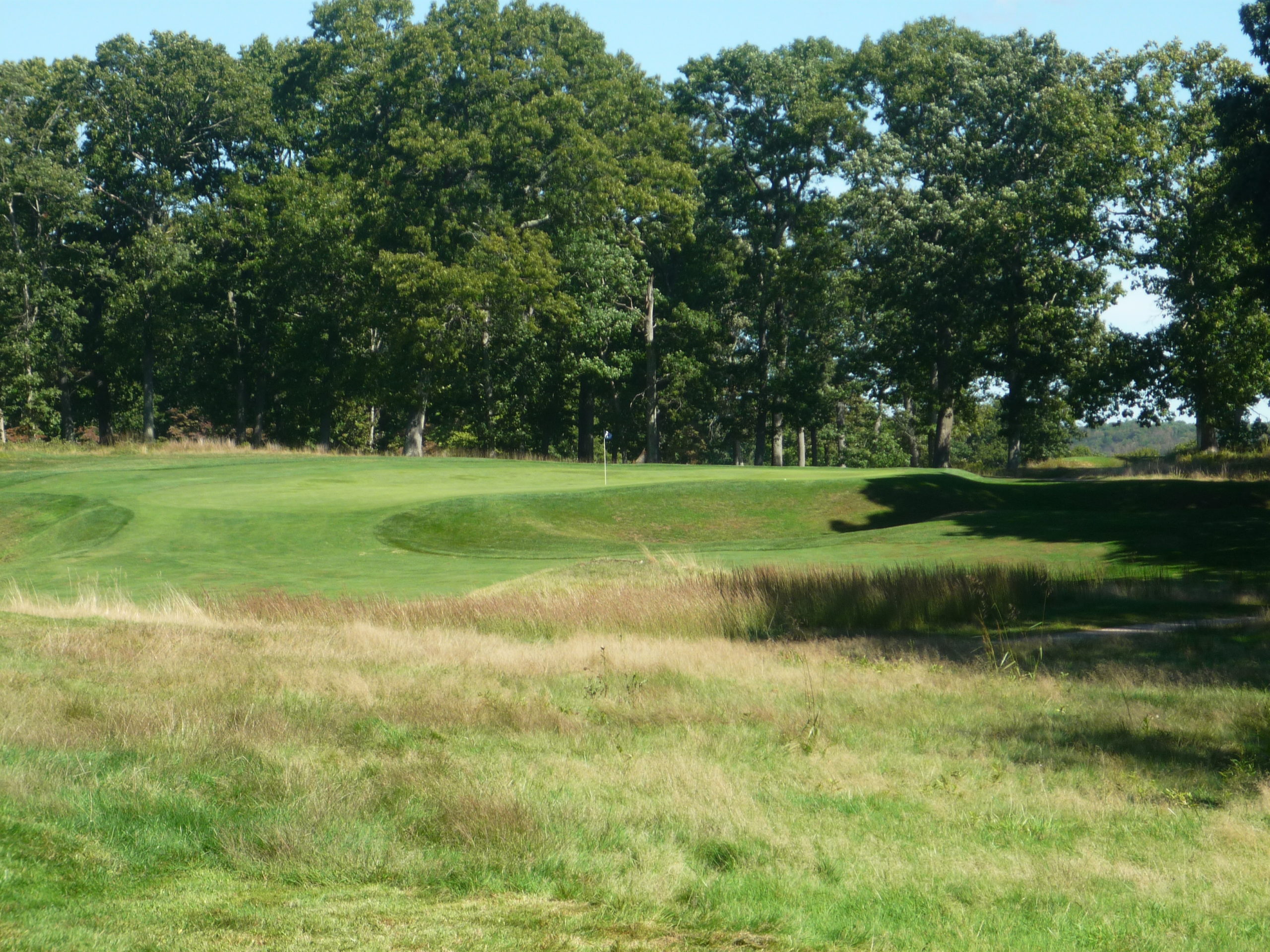
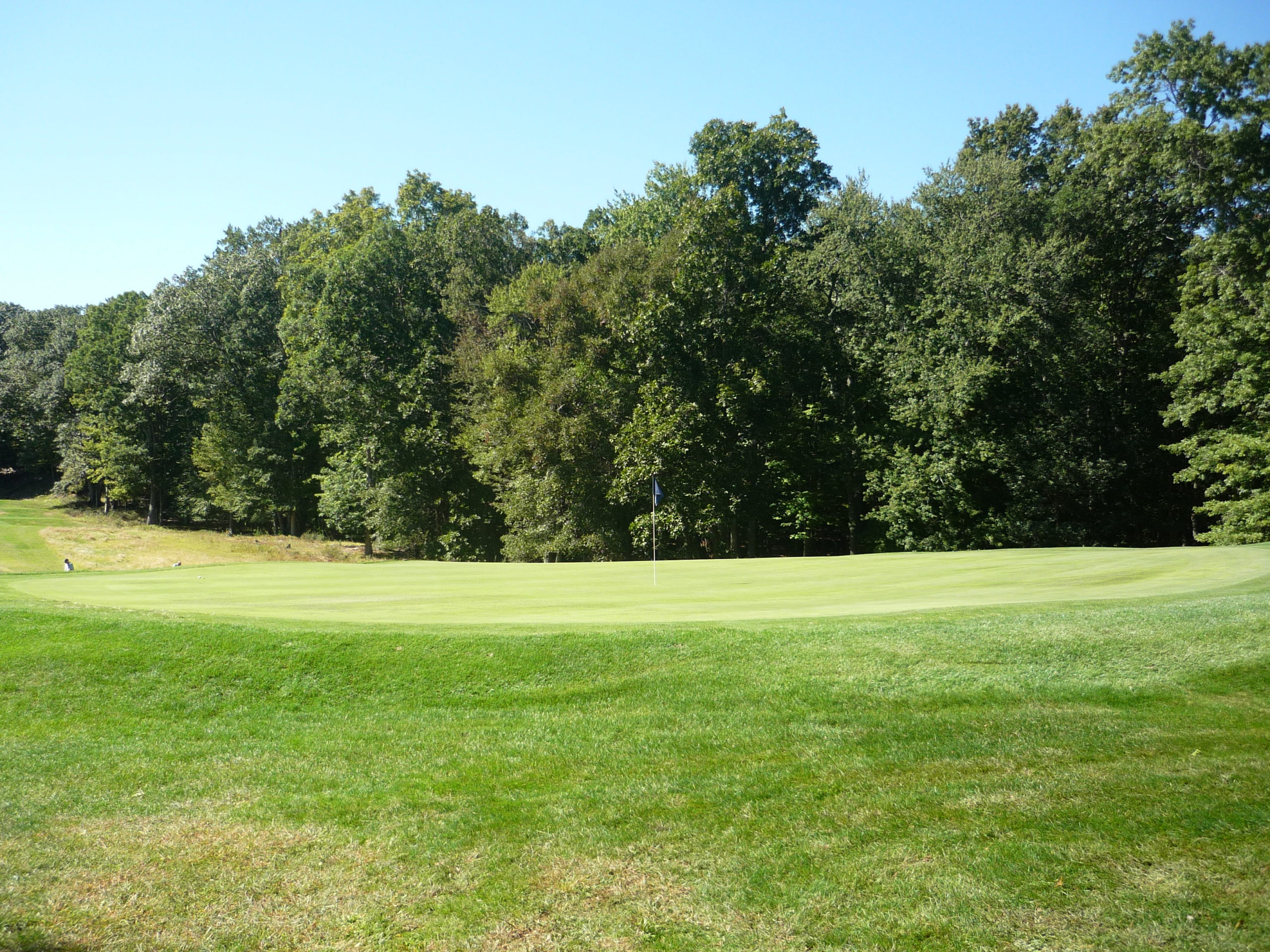
Hole 16 – 465 yards – Par 5
We flip it on this tee shot to where a draw is the play. Using the mound on the right as a springboard will put you down on the flat left side to attack the green.
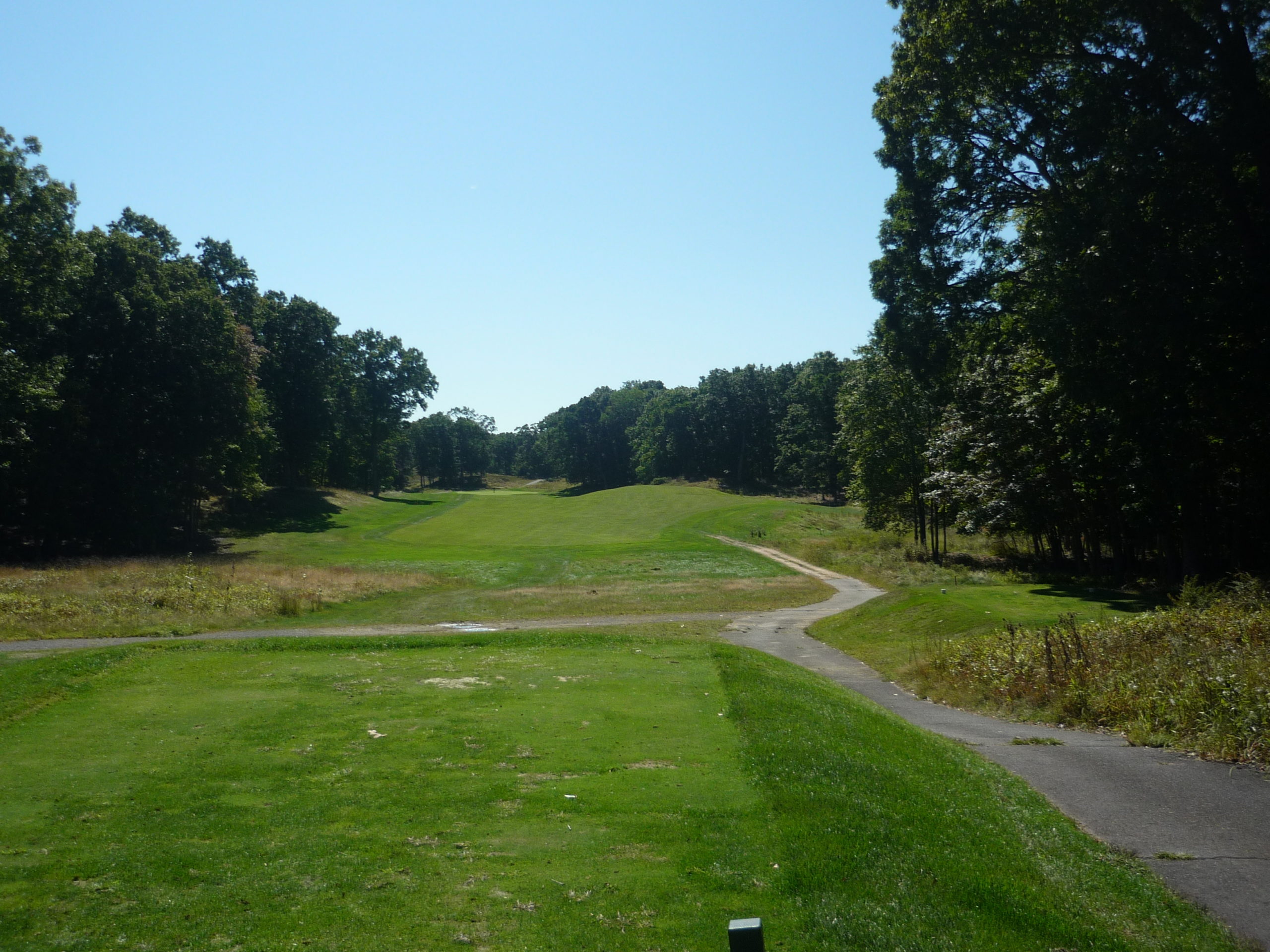
There’s nothing but green grass between you and the putting surface.
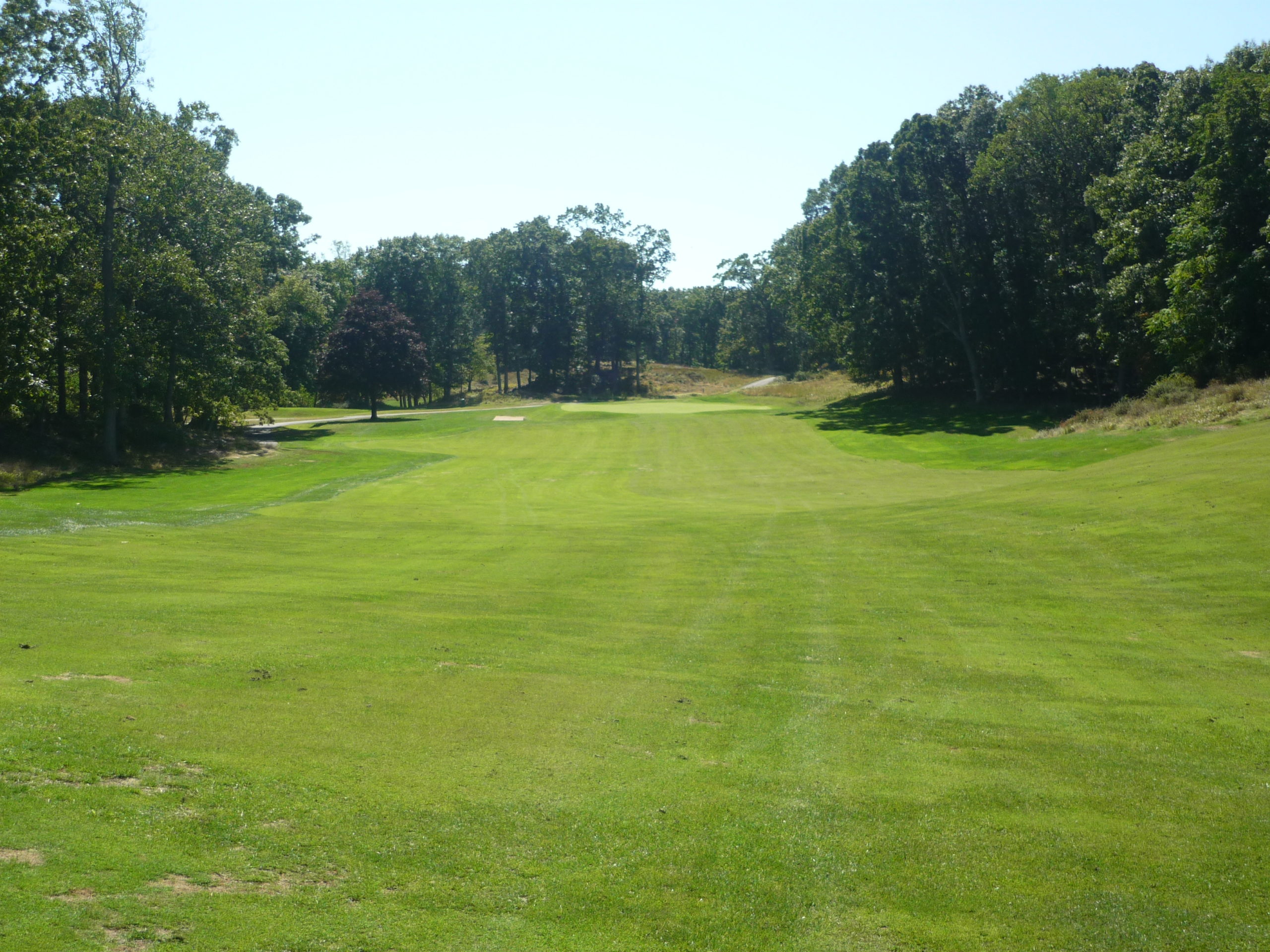
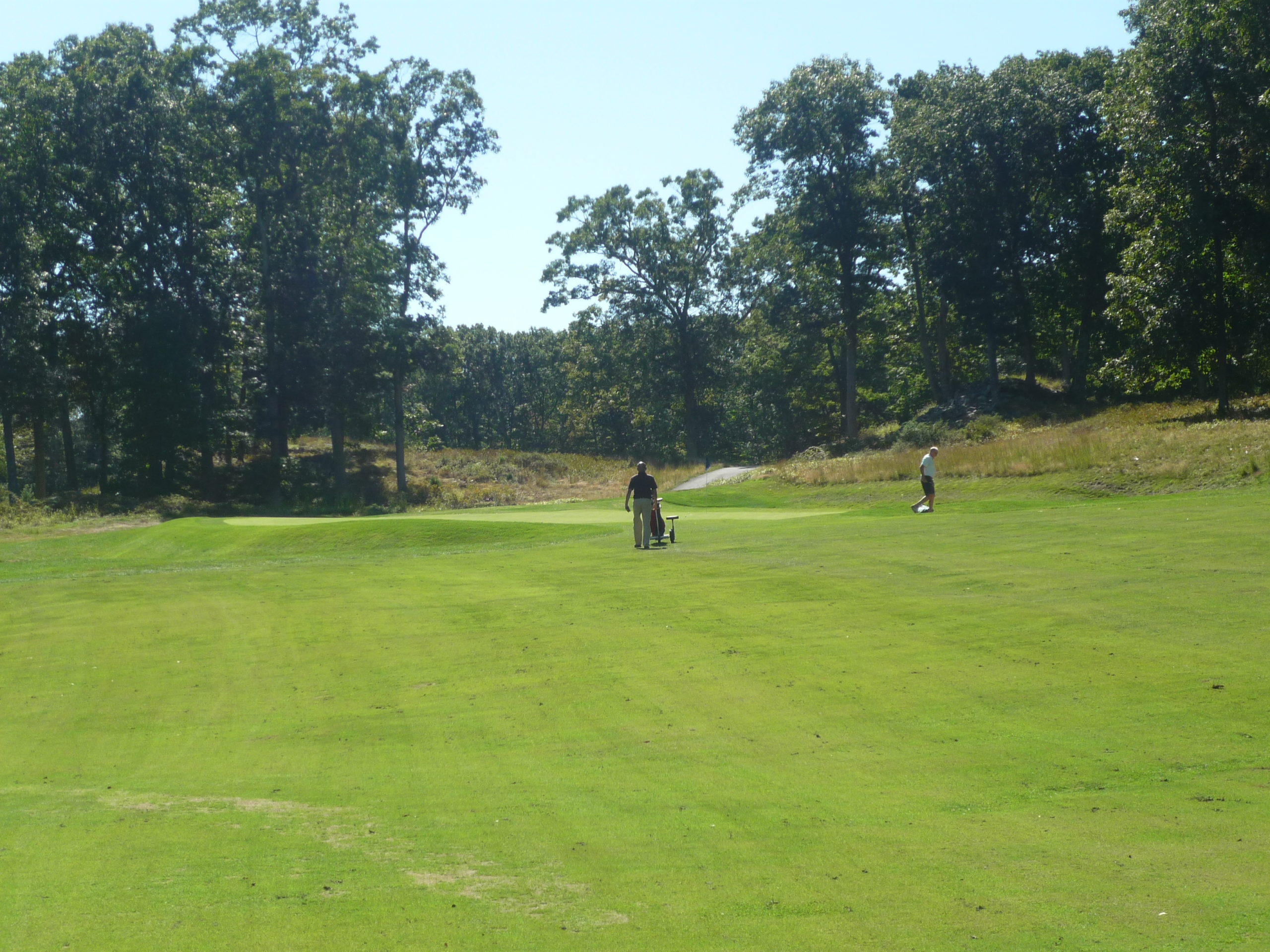
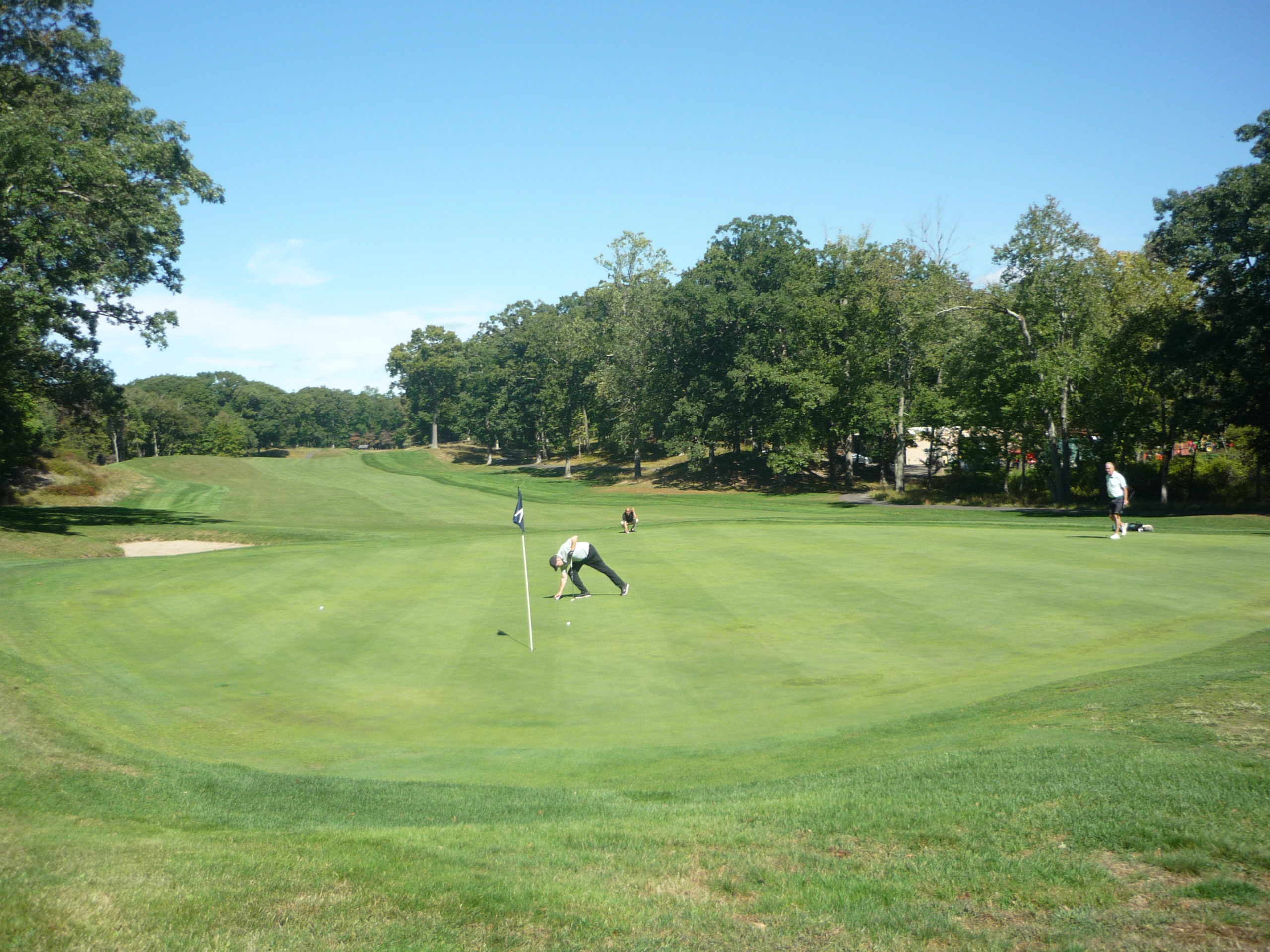
Hole 17 – 395 yards – Par 4
You play to a blind fairway here and the line is up the left side. If you stray too far right the trees come into play.

Raynor made use of the Principal’s Nose bunkers about 60 yards short of the green. If you can block them out, the green has a pretty generous landing area.
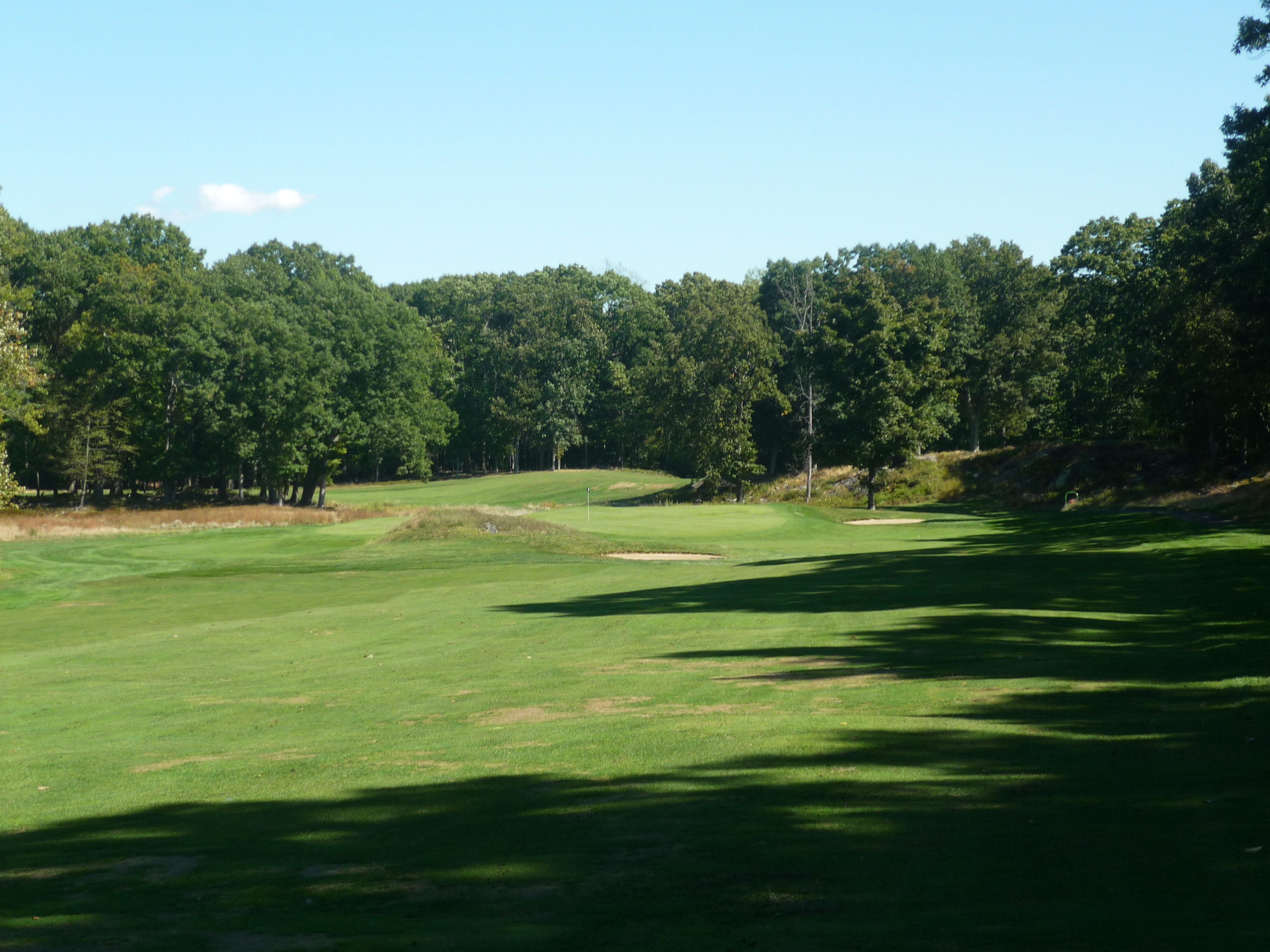
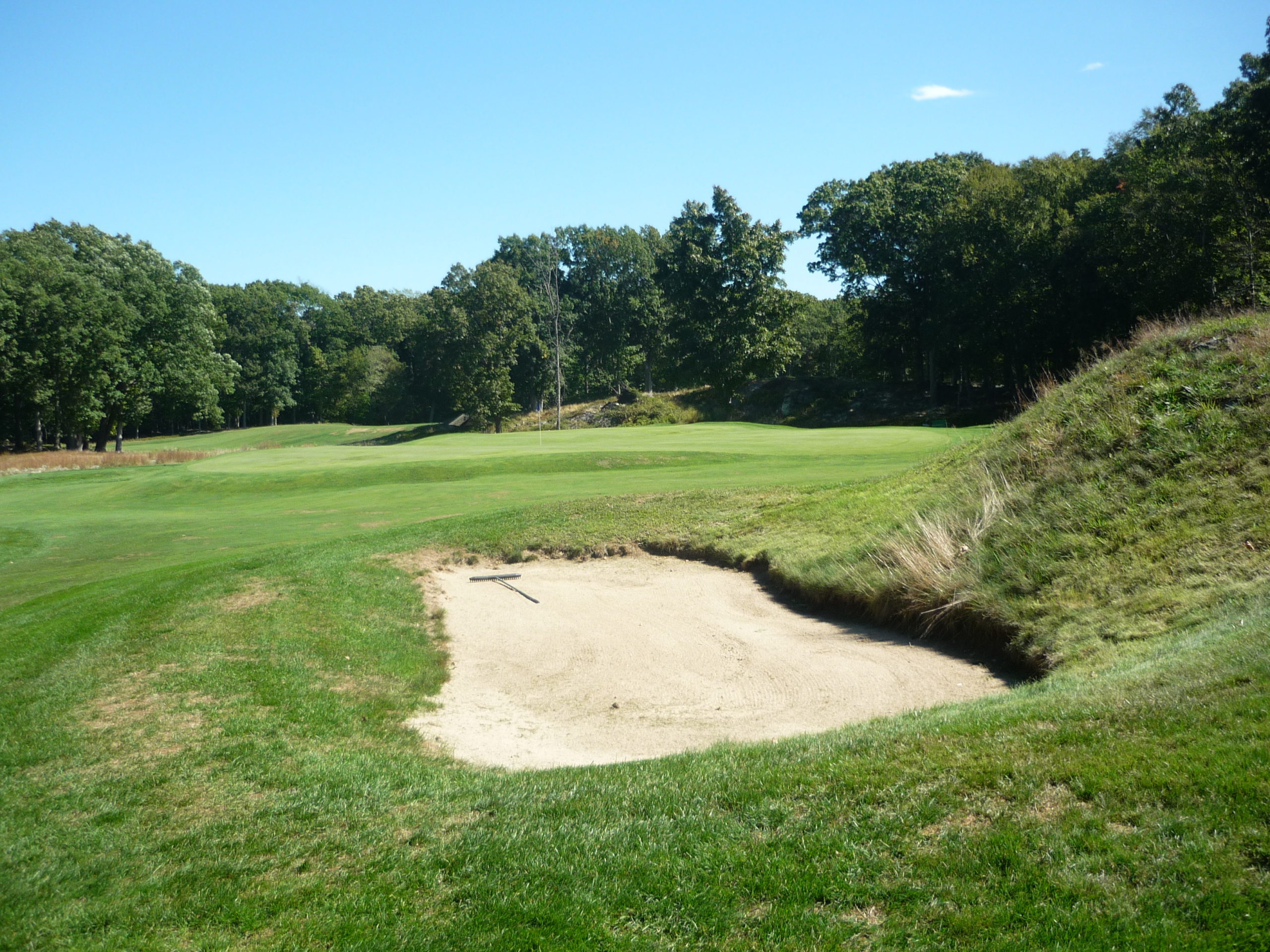
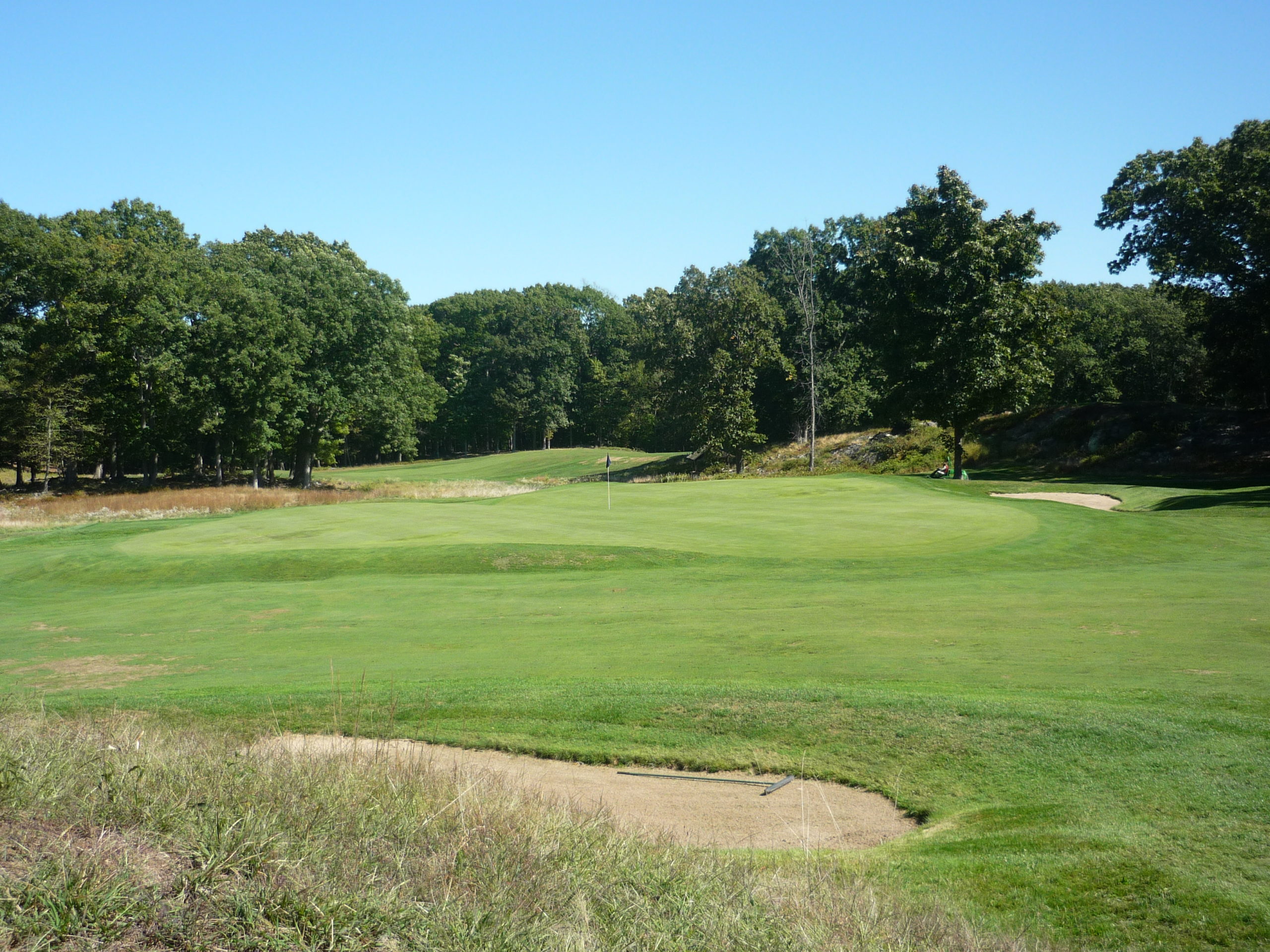
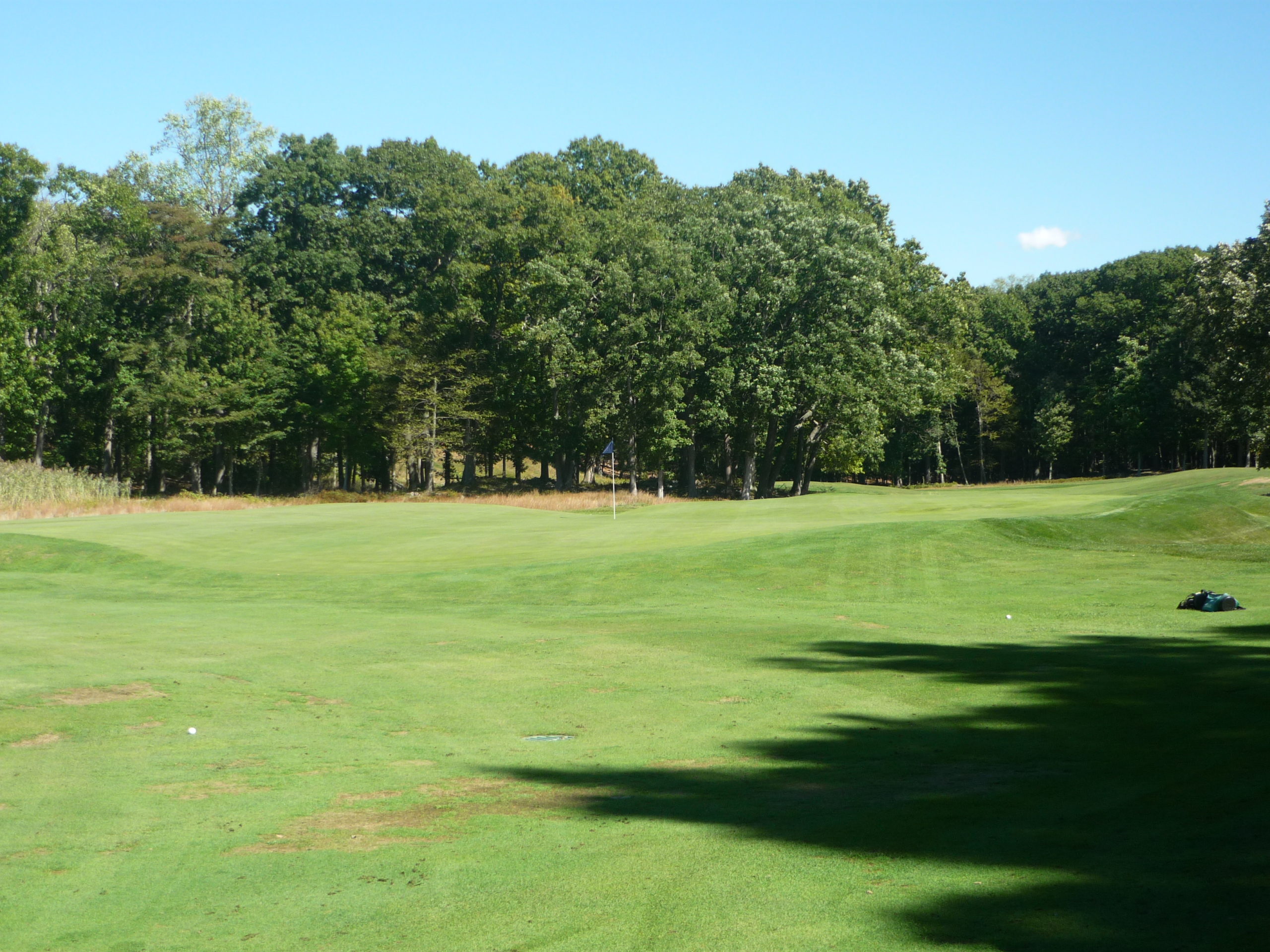
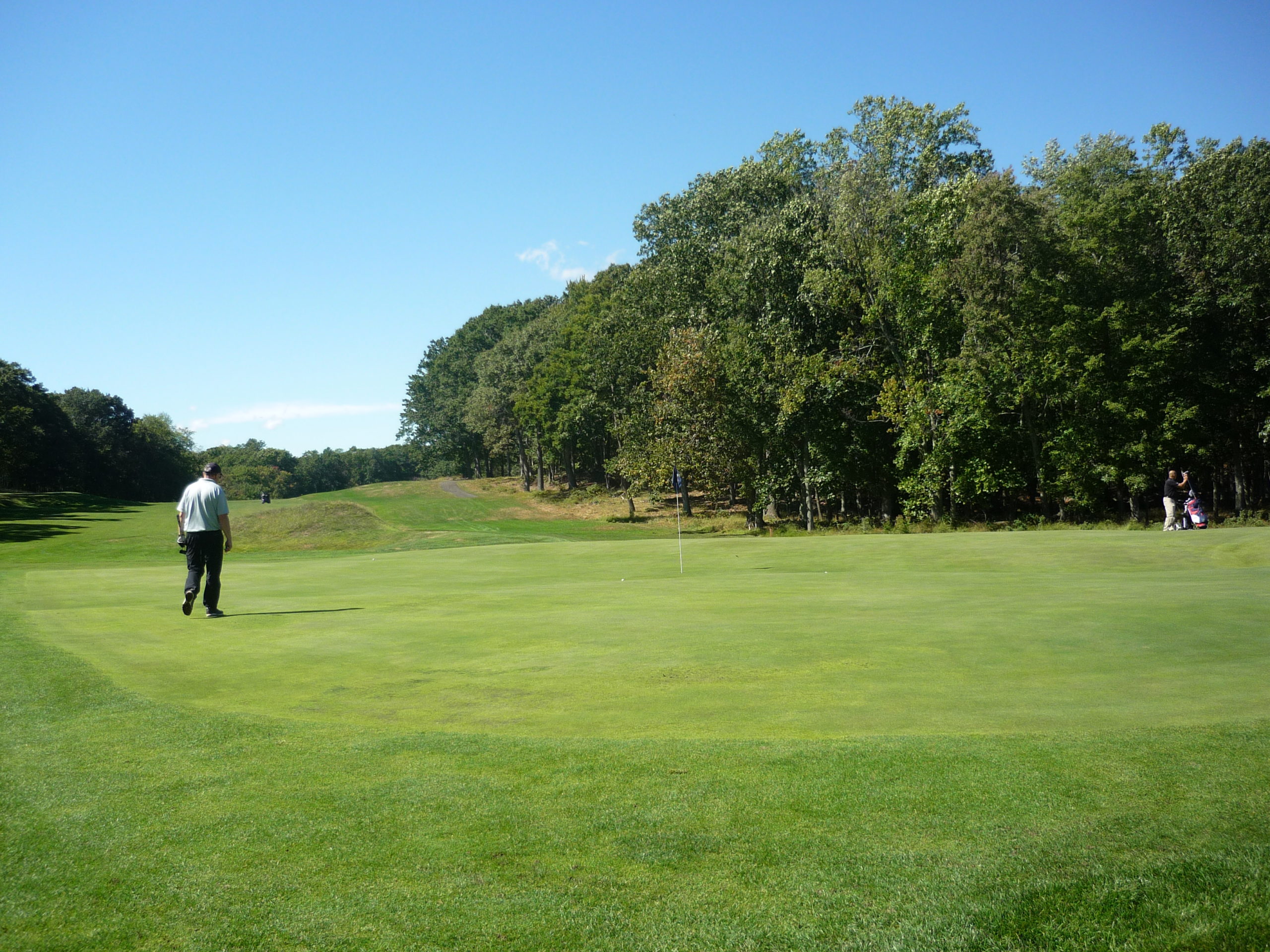
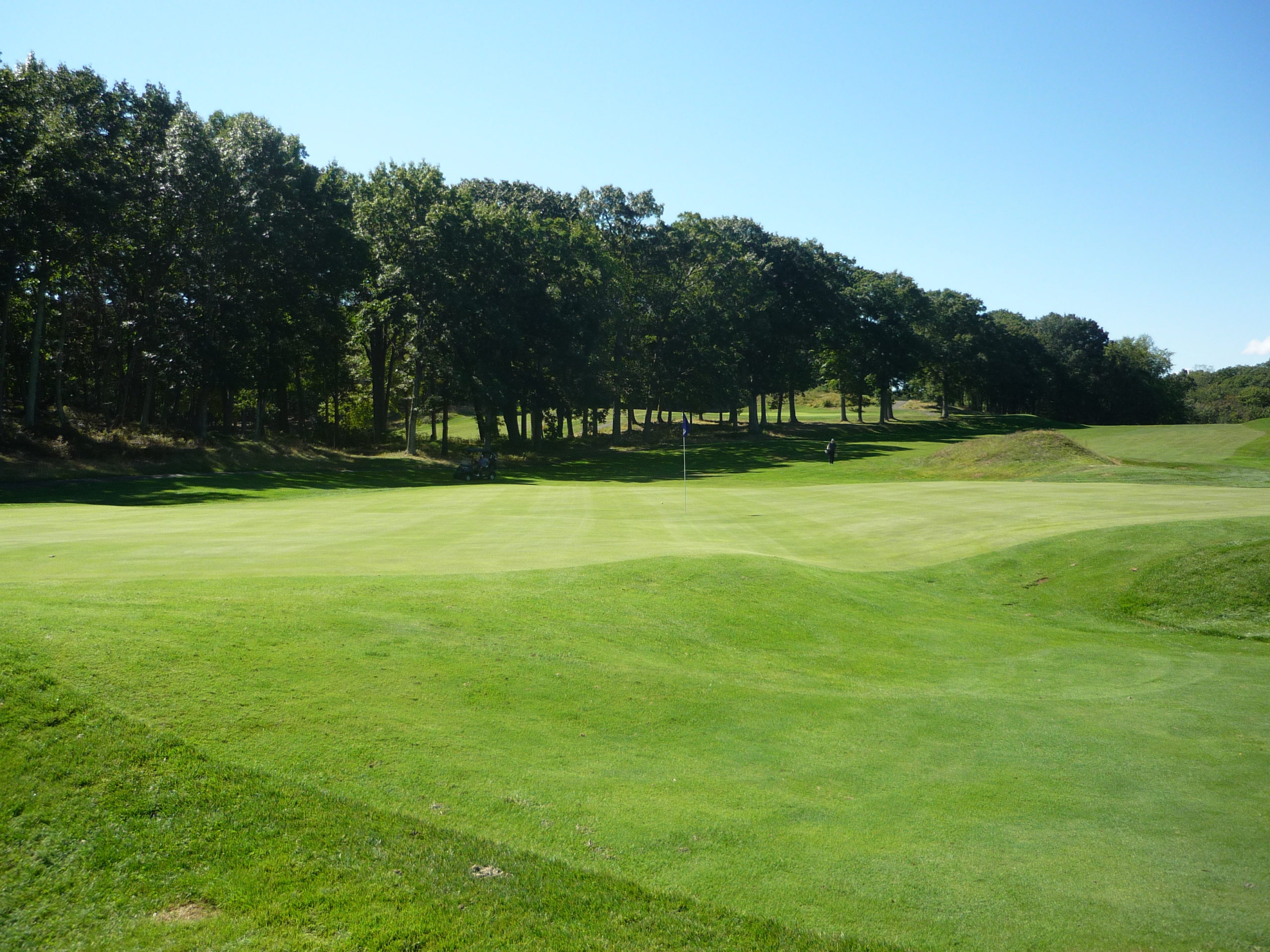
Hole 18 – 542 yards – Par 5
On a second loop, I would play this hole much differently. From this tee, a driver is not the play. Two of us ran through the fairway into the long stuff on the right side (not seen in the first photo).
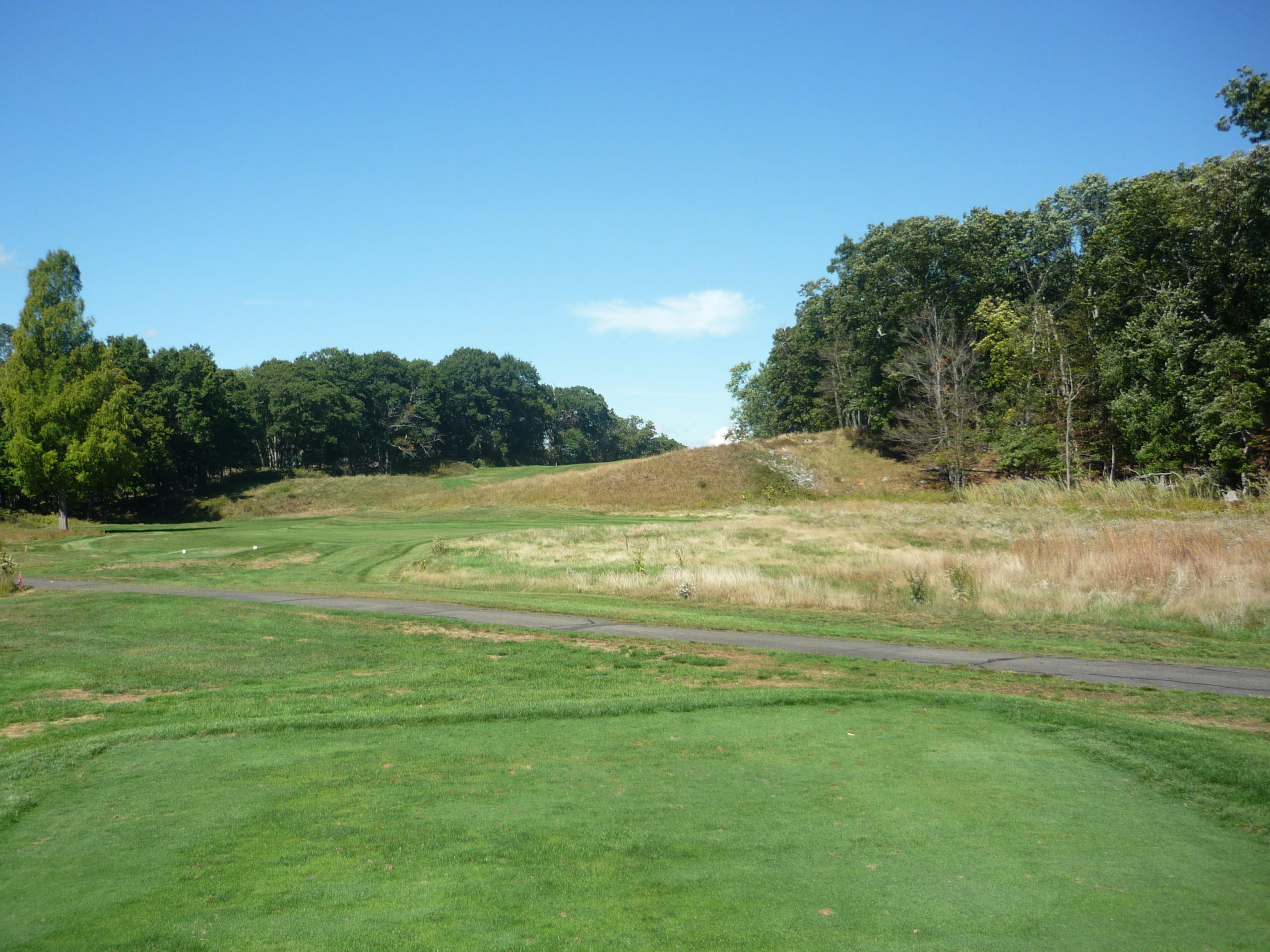
You traverse the hill you see in the previous photo as well as a large rock formation to get to the reveal of the green. Your options are to play to either side of the massive rock feature.
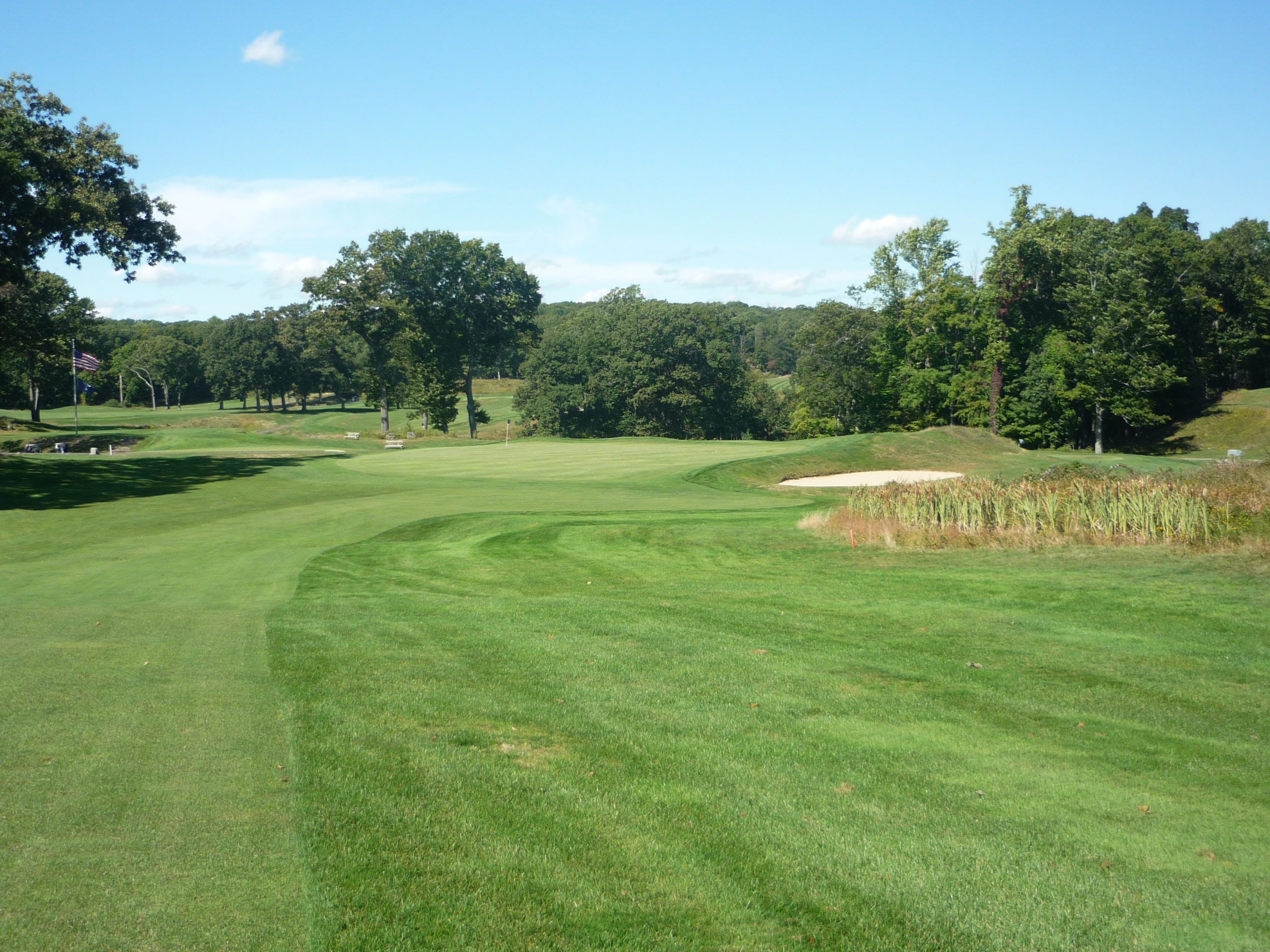
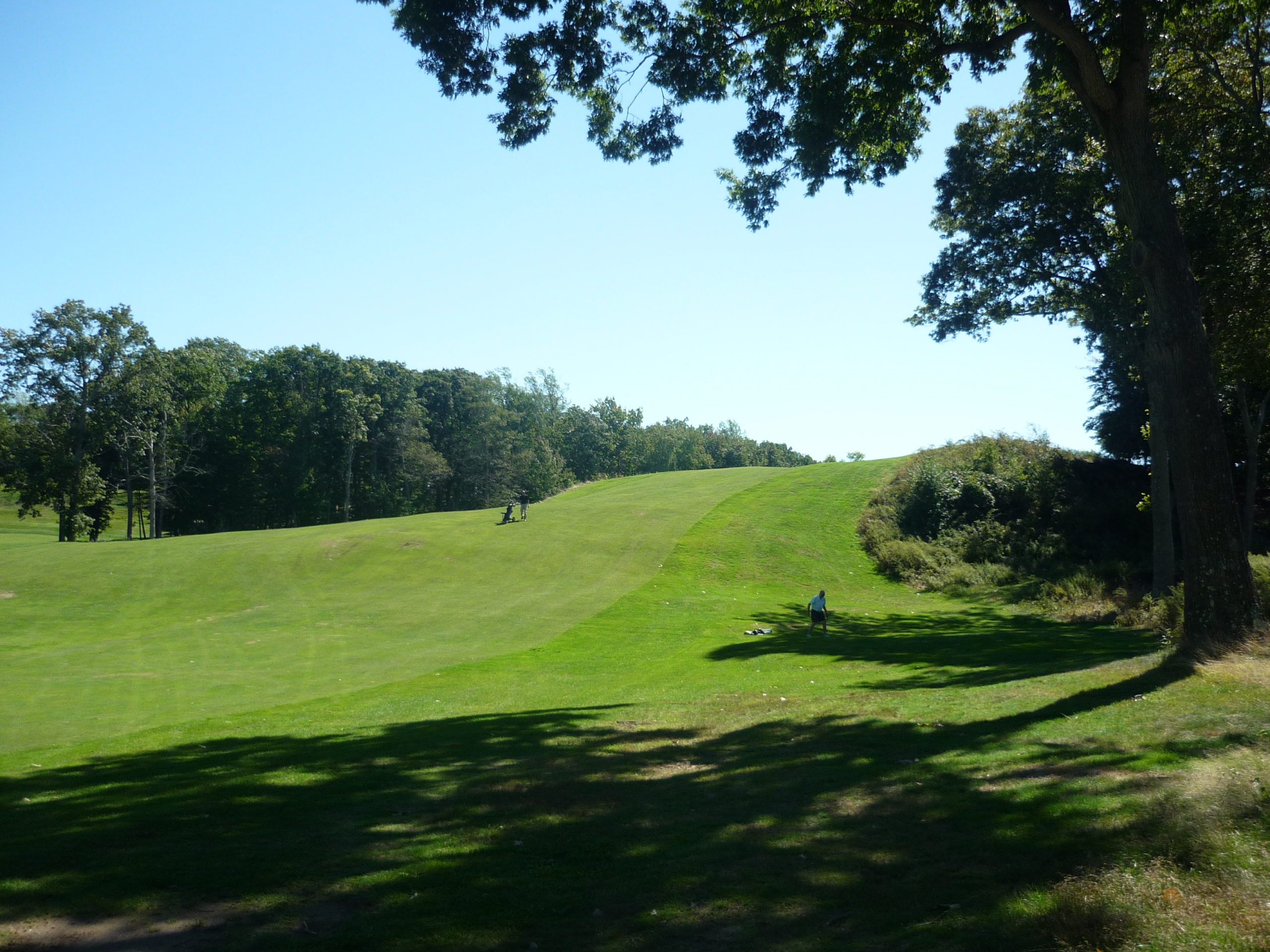
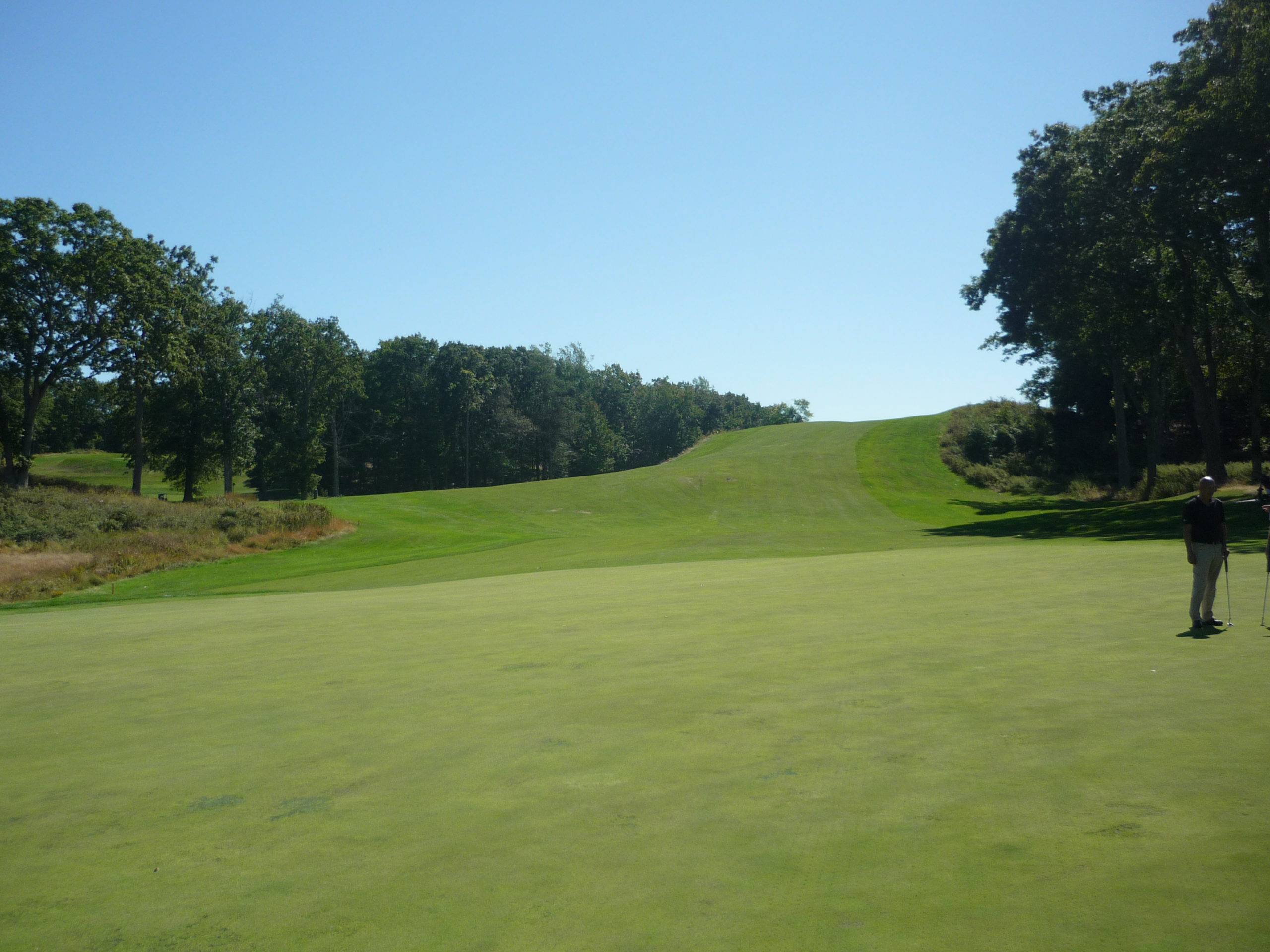
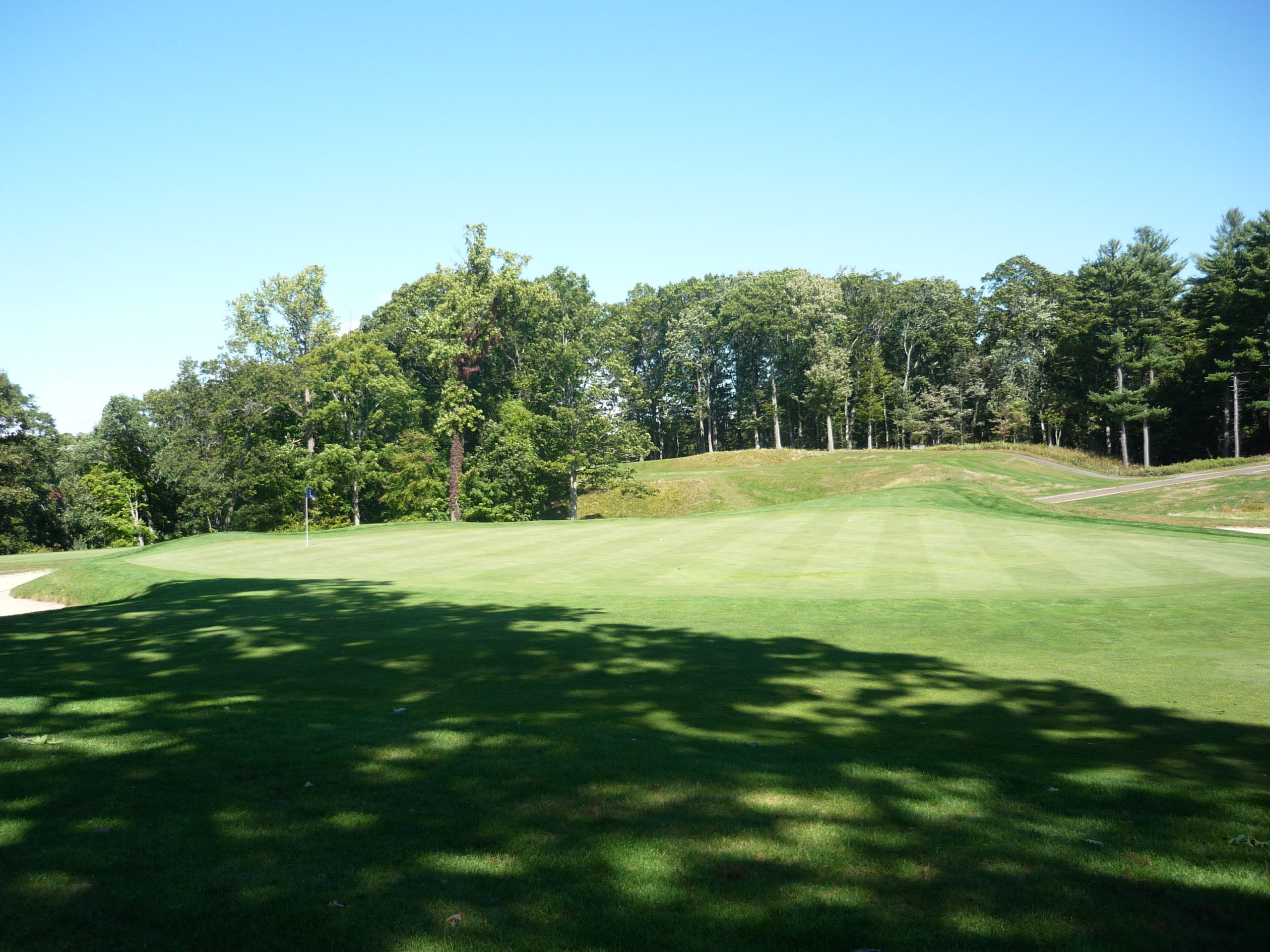
The Course at Yale is pretty stunning today. I can only imagine what people thought in 1926. Just think of playing this course with hickories!
I’m hopeful that Gil Hanse can work his magic here to restore some of the scale and unique qualities. From there, turf management will be the goal so that the course doesn’t lose its luster.
Due to some delays, I believe the course is still open to public play, as it was in 2022, through 2023. Despite the conditions you saw in the photos, I would recommend checking it out.
